

80 Facts about Italy (Travelers and Expats) Food, Culture, Visas, Politics, Photos…
Have Italy on the brain? In this huge guide, you’ll learn 80 facts about Italy, including travel, food, expat, culture, national symbols, politics and more. Plus lots of photos and videos.
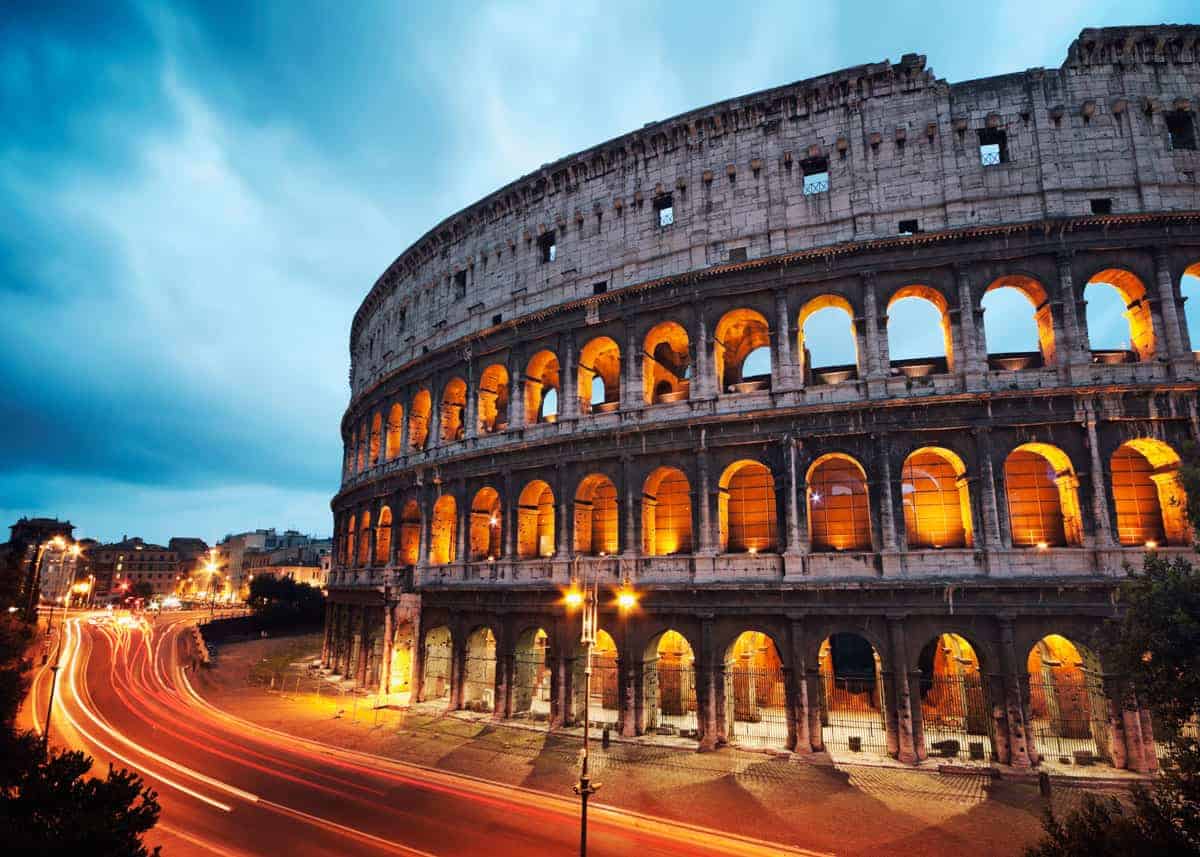
80 Facts about Italy
In this huge guide, you’ll learn what to expect on your trip (or move) to Italy? Have a question? Ask it in the comments below. I’ll do my best to answer every one. Did I miss something? Please add it in the comments!
Let’s get started!
Basic Facts About Italy
1. what is italy’s official name.
Officially, Italy is known as the Italian Republic . In Italian, it is Repubblica Italiana .
2. What is Italy’s population?
According to the latest figures from the United Nations, the current population of Italy is 59,242,024 .
3. Where is Italy located?
Italy is located within the central part of southern Europe. The country is a peninsula – one of the largest peninsulas in the world .
To the south, Italy touches the Mediterranean Sea, and it is bordered on the east by the Adriatic Sea and the Ionian Sea. Its western shores lie on the Ligurian Sea and the Tyrrhenian Sea.
Map of Italy
4. What time is it in Italy?
Italy is in the Central European timezone (GMT+1) .
The country is one hour ahead of London time and in the same time zone as France and Spain .
5. When does the sun set in Italy?
Because of it’s distance from the equator, this varies during the year.
- During the winter months, the sun sets in Italy at around five or six in the evening.
- Over the summer months, the sun sets there at around nine in the evening.
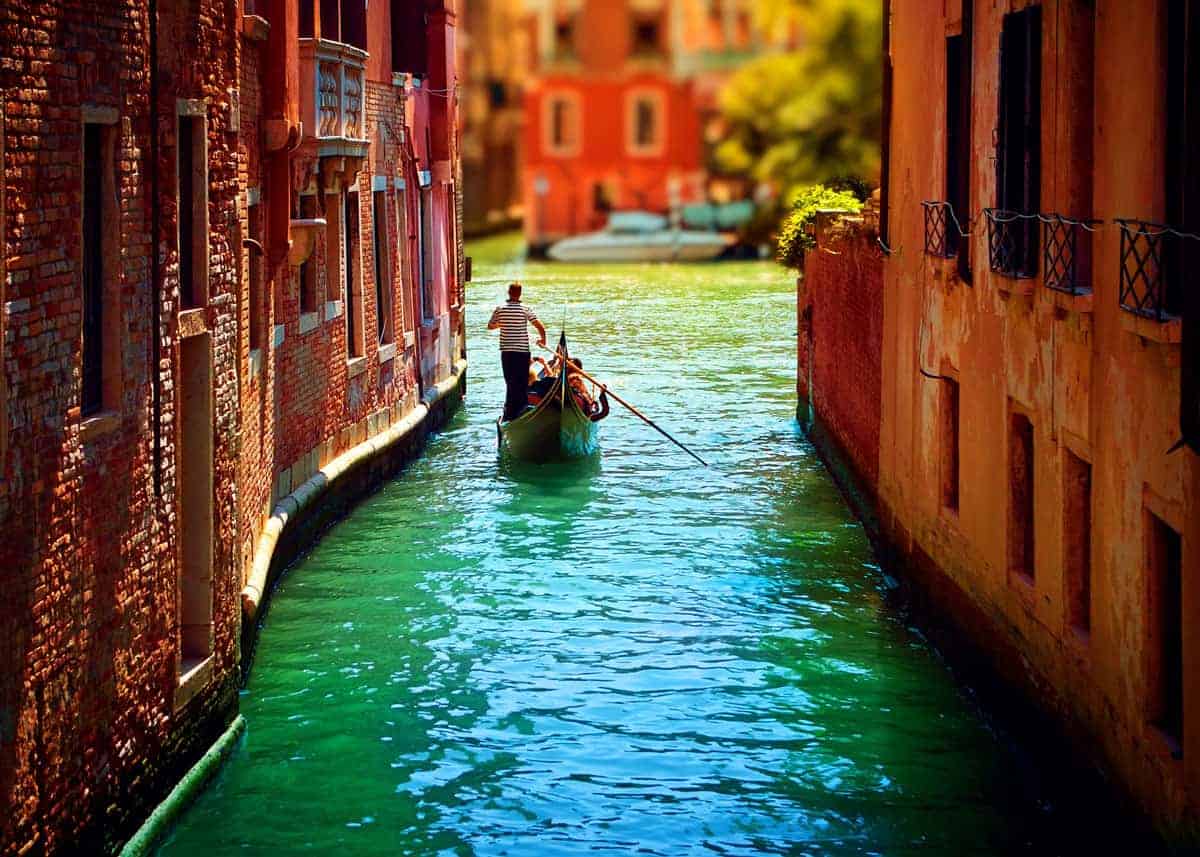
6. What are citizens of Italy known as?
In English, the citizens of Italy are known as Italians.
In Italian, they are called italiani .
Interestingly, many citizens of Italy have a strong link to their family and to their family’s land, and they may identify themselves first by the region in which they were born.
Here’s what residents of each city call themselves:
- Florence: fiorentino
- Genoa : genovese
- Milan : milanese
- Naples : napoletano
- Palermo : palermitano
- Pisa : pisano
- Rome : romano
- Venice : veneziano
7. What is the capital of Italy?
The capital city of Italy is Rome , known in Italian as Roma.
8. What is life expectancy in Italy?
The average life expectancy in Italy is 82.8 years old.
- Italian males can expect to live 80.5 years
- Italian females have a life expectancy of 84.9 years.
These figures make Italy the country with the eighth highest life expectancy in the world.
9. What religions are in Italy?
Roughly 80% of Italians profess to be Christian , and one-third of these are practicing Catholics.
The remaining 20 percent of the population is a mixture of Muslim, agnostic, and atheist.
10. Common misspellings of Italy
You’ll laugh, but some of the most common misspellings of Italy in English are litghly and itirly.
Some people also mistakenly spell it as Italian or Etaly.
Facts About Italy Travel
11. how’s the weather in italy.
The weather in Italy can vary depending on whether you are in the northern, central, or southern part of the country.
- Northern Italy: In the north, temperatures (in Fahrenheit) average in the 40s and 50s in the winter and spring, while they are in the 50s and 60s in the central part of the country. In the summer and fall, temperatures in the north are in the 60s to 80s, and those in the central region are in the 70s and 80s.
- Southern Italy: In the southernmost part of Italy, temperatures in the summer average in the 80s, and the fall and winter months are generally in the 60s to lower 70s.
12. What is the best time to visit Italy?
This depends on what you’re hoping to get out of your trip.
Summer is the most popular time to visit Italy. The weather can be very hot, particularly in Sicily, and museums and other attractions are very crowded.
The fall and spring seasons tend to be more affordable, and the weather is pleasant enough for plenty of outdoor activities and sightseeing.
While the winter weather may be too cold for some travelers, you might consider focusing on southern Italy for warmer weather.
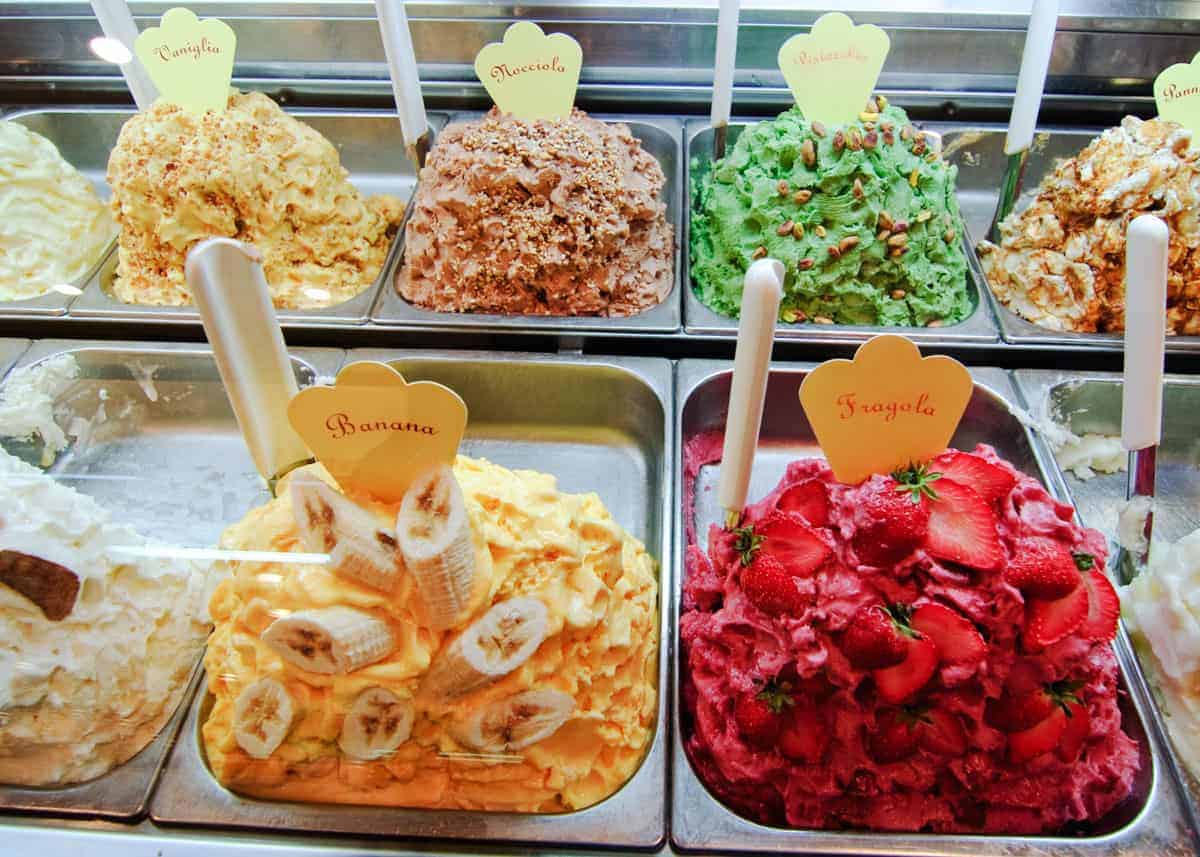
13. What is Italy’s currency?
As a member of the European Union, Italy uses the euro (€) as its currency.
14. Do I need a power adapter when I visit Italy?
If you are not using European devices, you will need a power adapter in Italy. Something like this one .
Typically, all you will need for most devices, including computers and cell phones, is an adapter plug. This plug enables you to connect your devices to the wall outlets in Italy.
If you are using devices that run on a different voltage than the one in Italy (such as American hair dryers or curling irons), then you will need both an adapter plug and a voltage converter .
If you do not have a voltage converter and try to use an American hair dryer in Italy, you may short circuit the electrical system .
15. What plugs are used in Italy?
Italy uses plugs that are used throughout the rest of the European Union. These plugs have two round pins .
If you have devices from France, Spain, or another European country, these devices will be able to be plugged directly into Italian electrical outlets with no problems.
16. What are Italy’s international airports?
Italy has numerous international airports . These include two in Rome, and there are also two international airports in Milan.
The major cities of Catania, Florence, Genoa, Parma, Palermo, Naples, Turin, Venice, Verona, Pisa, Bologna, Perugia, and Trieste all have international airports.
17. What languages are spoken in Italy?
The official language spoken in Italy is Italian . The country also has a large population of Catalan speakers.
More than 30 different regional languages and dialects are spoken throughout the country. These include Sardinian (primarily spoken on the Italian island of Sardinia), Tabarchino, and Sassarese.
18. How many tourists visit Italy every year?
More than 420 million tourists visited Italy in 2017, the most recent year for which figures are available. Approximately 14 percent of these tourists were from Germany.
American, French, and British tourists accounted for an estimated three percent each. The most popular tourist destination in 2017 was the city of Rome.
19. What are Italy’s most popular landmarks?
The most popular Italian landmark for tourists is the Colosseum in Rome.
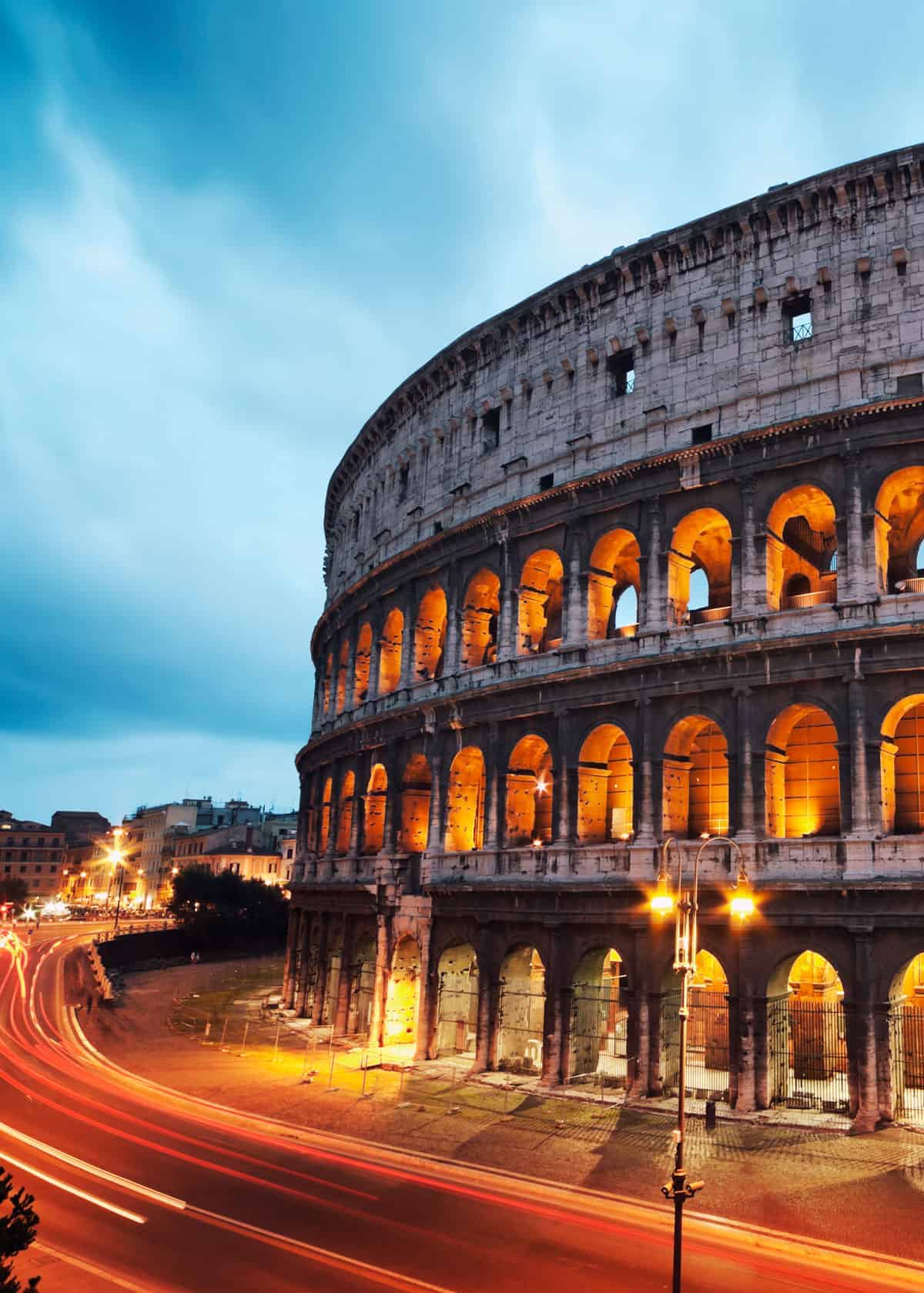
Other beloved attractions include Pompeii, the canals in Venice, the Trevi Fountain, the Leaning Tower of Pisa, Lake Como, and the Duomo Santa Maria del Fiore in Florence.
Tourists flock to the Amalfi Coast, and Vatican City is a particularly treasured pilgrimage site for Catholics. St. Mark’s Basilica in Venice and the Roman Forum in Rome are both inspiring attractions, too.
20. Is Italy a safe place to visit?
Italy is currently ranked as the 34th safest country out of 162 countries studied in recent safety research. It is a safe country for female travelers, and violent crime is extremely low.
The most common safety risk when traveling to Italy is pick-pocketing , and visitors should take care to guard their passports, wallets, and phones carefully. Like other European countries, civilians in Italy are not allowed to own or use guns.
21. What are Italy’s 10 best beaches?
In the 2018 Travelers’ Choice Awards from TripAdvisor, the top 10 highest-rated Italian beaches were:
- Spiaggia dei Conigli (Lampedusa, Sicily)
- Tropea Beach (Tropea)
- La Pelosa Beach (Stintino)
- Cala Goloritze (Baunei)
- Porto Giunco (Villasimius)
- Bay of Silence (Sestri Levante)
- Cala Mariolu (Baunei)
- Spiaggia di Cala Rossa, Isola di Favignana (Aegadian Islands, Sicily)
- Spiaggia di Maria Pia (Alghero)
- Marina Piccola (Capri)
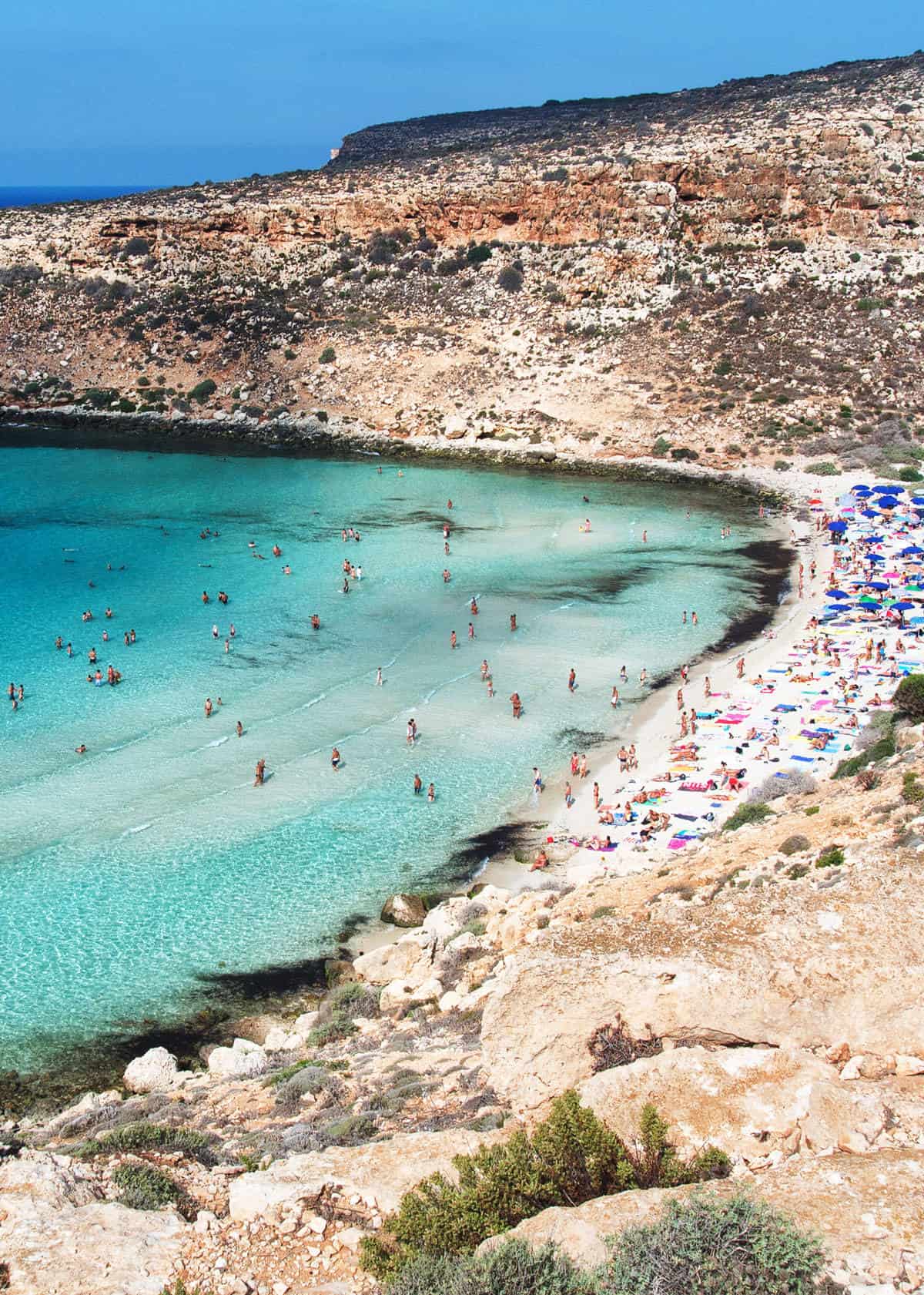
22. What are the most famous events in Italy?
Italy has a number of major festivals throughout the year that visitors can enjoy.
In the winter or early spring, one of the most well-known festivals is Carnevale (Carnival, a celebration similar to Mardi Gras). Celebrated in many towns throughout Italy, the most famous Carnevale festival is in Venice.
In the summer months, visitors may wish to see the Festa della Madonna Bruna , held on July 2nd in the city of Matera. The festival includes a procession through the city and concludes with fireworks. Another beloved festival is La Quintana , a medieval jousting festival held on the first Sunday of August in the town of Ascoli Piceno.
Visitors to the small Sicilian town of Caltagirone should check out the Infiorita Festival that takes place during the last two weeks of May. During the festival, 142 ceramic steps in the town center are covered with floral arrangements. On July 24th and 25th, the stairs are beautifully lit with candle displays in honor of St. James, the town’s patron saint.
Geography Now! Italy Video
Geography of Italy
23. how large is italy.
By land mass , Italy ranks as the 72nd largest country in the world , and nearly 40 percent of the country is comprised of mountainous terrain.
In total, the area of the country is 116,350 square miles (301,340 square kilometers). It is about the size of New Mexico.
24. What World Heritage Sites are in Italy?
In 2017, Italy had 54 UNESCO World Heritage Sites .
49 of these were cultural landmarks, and the remainder were natural sites.
Examples of some of the Italian World Heritage sites include the city of Verona, the Amalfi Coast, Mount Etna (a volcano), the late Baroque towns of the Val di Noto, and the historic city centers of the towns of Florence, Naples, Venice, Siena, Rome, and Pienza.
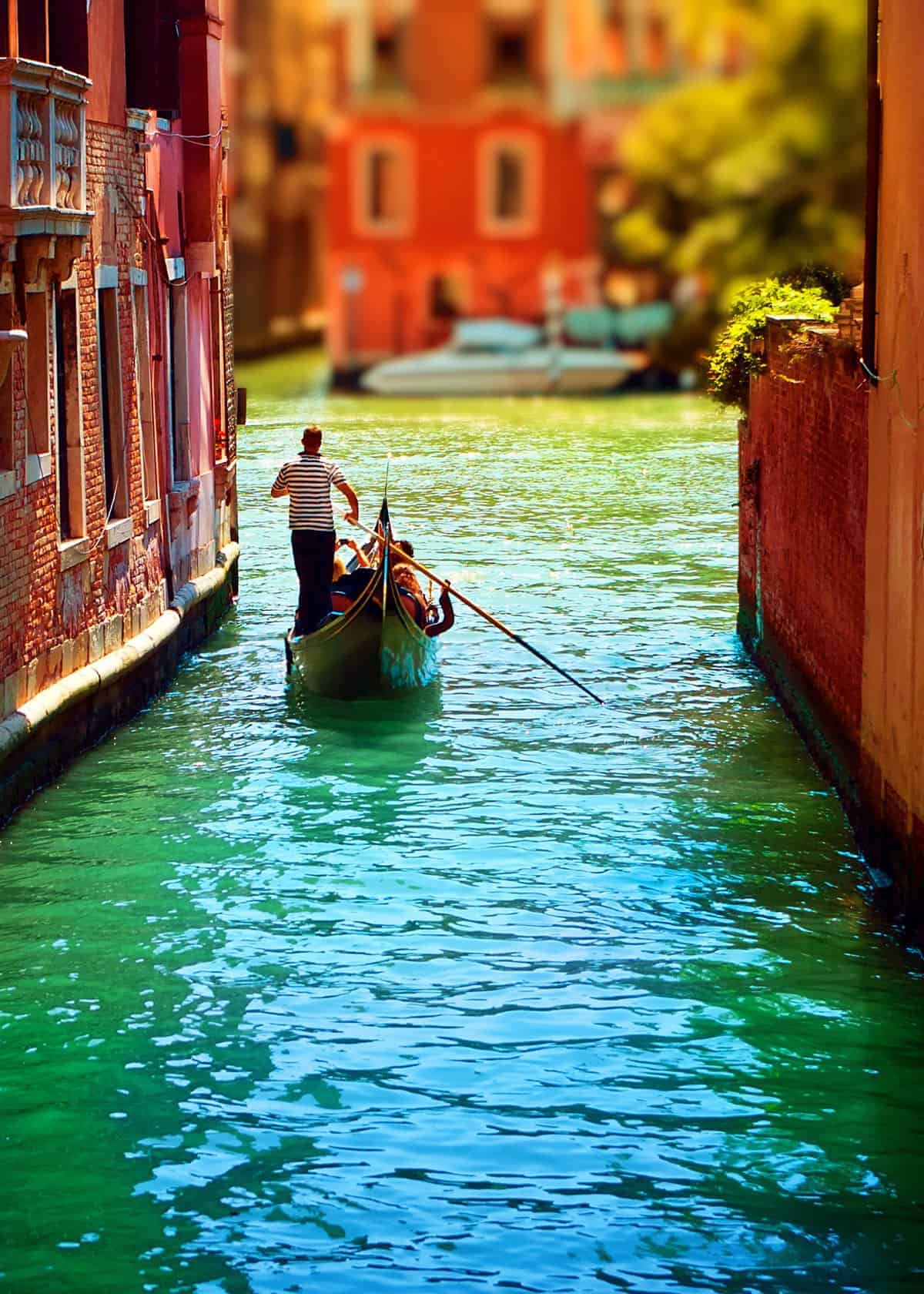
25. What is Italy’s largest city?
According to the population, the largest city in Italy is Rome . It has a population of nearly 2.4 million people.
26. What are Italy’s major cities?
Major cities in Italy are Rome, Milan, Naples, Turin, Palermo, and Genoa.
Other large cities include Florence, Catania, Bari, and Bologna.
27. How many provinces in Italy?
Italy has 20 regions . These are divided into 110 provinces and 8,101 comuni (municipalities).
28. What is the highest elevation in Italy?
The highest elevation in Italy is at 4,808 meters and is located on Mont Blanc (Bianco), known in English as White Mountain. This mountain is part of the Graian Alps region.
29. Does Italy have a lot of mountains?
Yes, nearly 40 percent of Italy is mountainous.
Some of the most famous mountains in the country include Bianco (Mont Blanc), Monte Cervino (Matterhorn), Breithorn, Gran Paradiso, and Mont Dolent.
30. How many islands in Italy?
The total number of Italian islands is over 450 .
Of these, an estimated 350 are sea islands, 13 of which are archipelagos.
100 of Italy’s islands are classified as lagoon or lake islands, and the nation also has a handful of river islands, including the Isola Tiberina in the Tiber River in Rome.
31. What are the top 10 famous places in Italy?
10 of the most iconic places to visit in Italy include several in Rome. These include:
- Colosseum (Rome)
- Trevi Fountain (Rome)
- Roman Forum (Rome)
- Milan Cathedral (Duomo di Milano) is famous as the second-largest Catholic cathedral in the world.
- Cathedral of Santa Maria del Fiore in Florence
- Mount Etna volcano in Sicily
- Rialto Bridge in Venice also attract attracts visitors
- Cathedral of Monreale, near Palermo, Sicily, is another iconic spot for tourists
- Leaning Tower of Pisa: no trip to Italy would be complete without a visit to the famous leaning tower of Pisa.
- Ponte Vecchio in Florence. Spanning the Arno River, it is the oldest bridge in the city and dates from 1345.
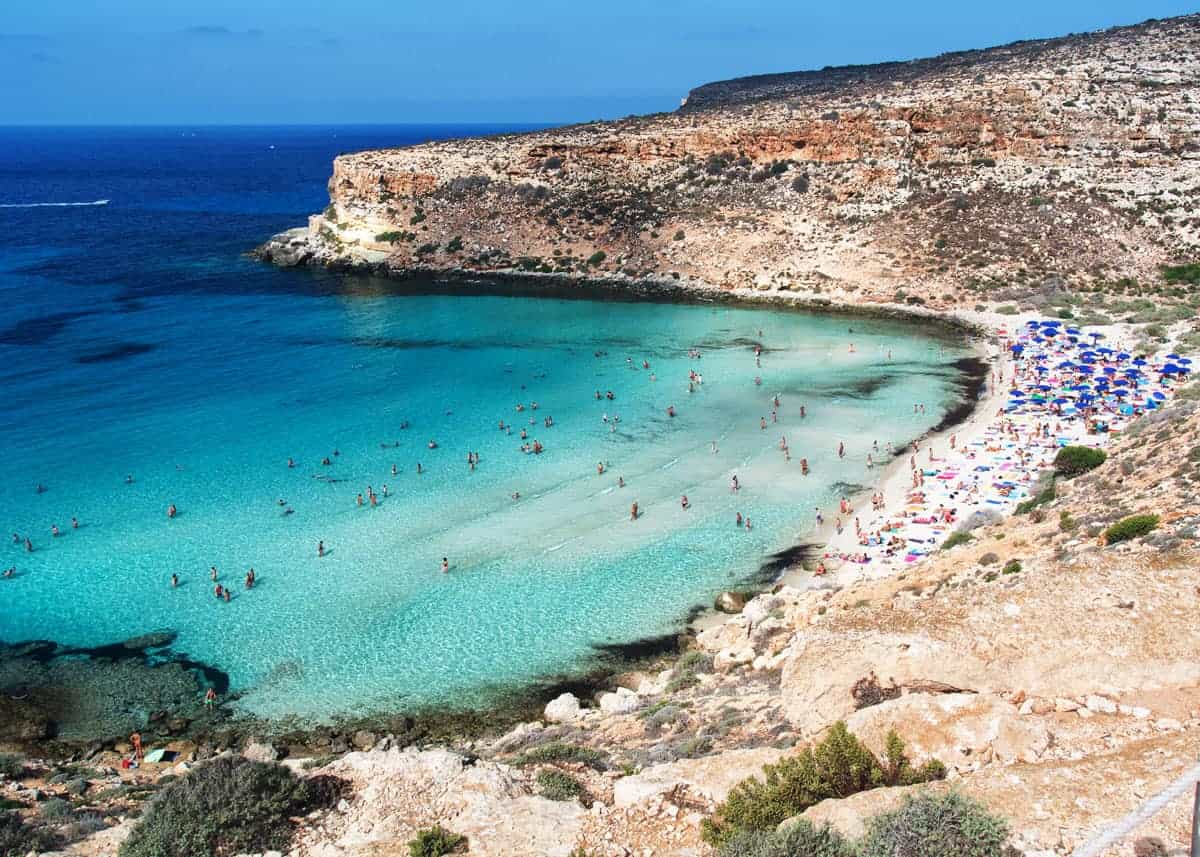
32. How many national parks in Italy?
Italy has a total of 24 national parks that cover an area of more than 5,843 square miles. The parks are managed by the Ministry of the Environment and account for 5% of the total land mass of Italy.
The list below provides a sample of some of the nation’s most iconic national parks.
- Gran Paradiso National Park (established 1922, Italy’s oldest national park)
- Gran Sasso and Monti della Laga
- Cilento, Vallo di Diano, and Alburni
- Alta Murgia
- Isola di Pantelleria
- Dolomiti Bellunesi
- Cinque Terre
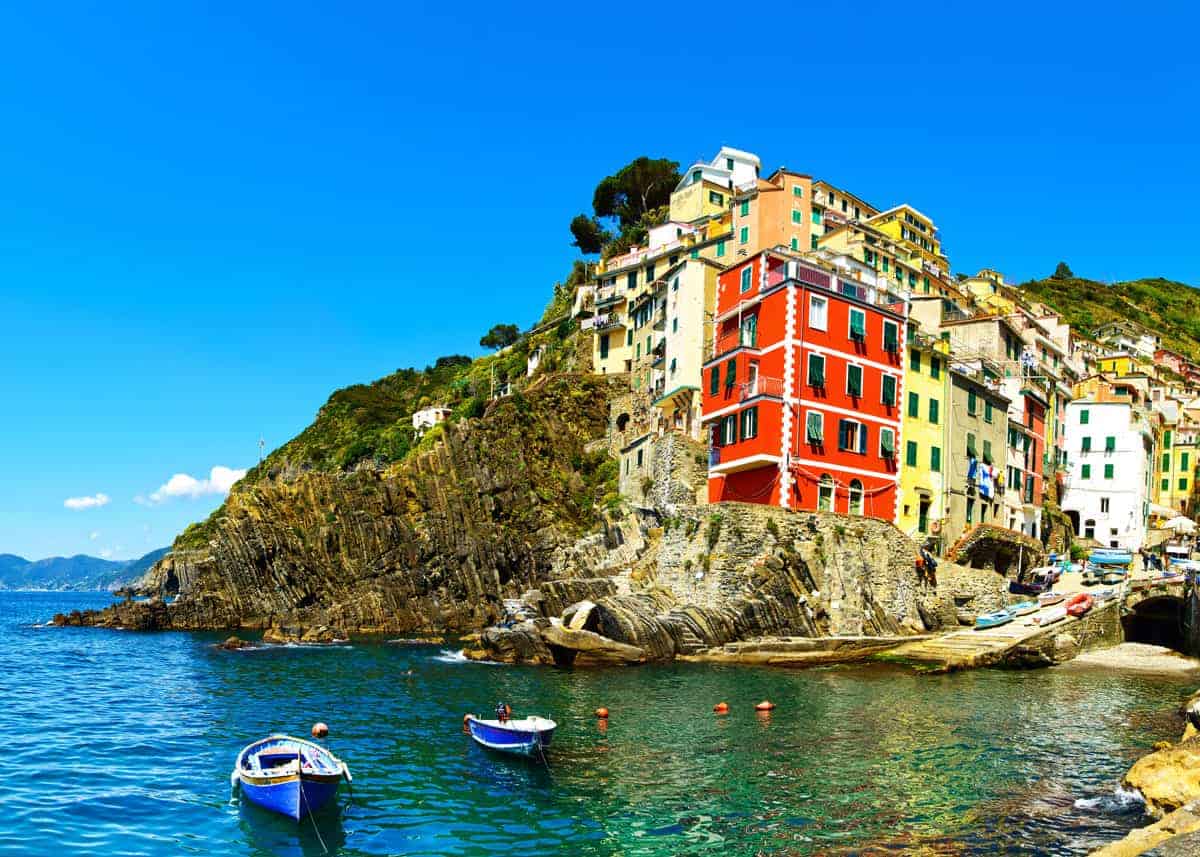
Politics of Italy
33. what type of government does italy have.
The government of Italy is a parliamentary republic form of government, and it has executive, legislative, and judicial branches.
In June 1946, Italy abolished its monarchy, and the country became a democratic republic with its own constitution.
Currently, the leader of the Italian government is President Sergio Mattarella ; he took up that position in 2015.
34. How stable is the current government?
While government stability has declined in Italy over the past three decades, the current government is considered to be quite stable .
35. How many national political parties are in Italy?
In the 2018 general election in Italy, there were 11 major national parties .
These included the Democratic Party, the Five-Star Movement, League, Forza Italia, More Europe, Brothers of Italy, Free and Equal, Together, Power to the People, Popular Civic List, and CasaPound Italy.
Business in Italy
36. what is italy’s largest export.
In 2017, the most recent year for which figures are available, Italy’s largest export was machinery , including computers. This accounted for 19.7% of the country’s total exports.
37. What are Italy’s major exports?
Apart from machinery and computers, Italy’s other major exports include vehicles, electronics, pharmaceuticals, plastics, iron, steel, mineral fuels (including oil), and furniture (including bedding and lighting).
Italy is also a major exporter of non-knitted, non-crocheted clothing.
38. What is the minimum wage in Italy?
In Italy, there is no national minimum wage .
Instead, some economic sectors set minimum wages through unions. The majority of unions have set the minimum wage at approximately seven euros per hour .
39. Who are Italy’s major trading partners?
Germany, China, and France are the countries from which Italy imports the largest amount of goods (approximately 33 percent of all imports).
In terms of exports, Italy exports the majority of its goods to Germany, France, and the United States.
Food in Italy
40. what food is most popular in italy.
One of the most well-known Italy facts is that Italians make exquisite food.
Pizza, spaghetti, lasagna, and gelato are all iconic, beloved dishes up and down the country. To drink, Italians love coffee and wine.
41. What kind of food is traditional in Italy?
Traditional Italian food includes lots of pasta, bread, tomato sauce, and cheese.
Simple pasta dishes such as spaghetti with meatballs or other toppings, pasta with cheese and fresh black pepper, lasagnas with various fillings, pizzas, and hot or cold sandwiches known as paninis are all traditional.
For dessert, tiramisu and gelato are all considered classic dishes from the country.
In the southern part of the country and on the islands of Sicily and Sardinia, traditional cuisine uses a lot of fish and seafood.
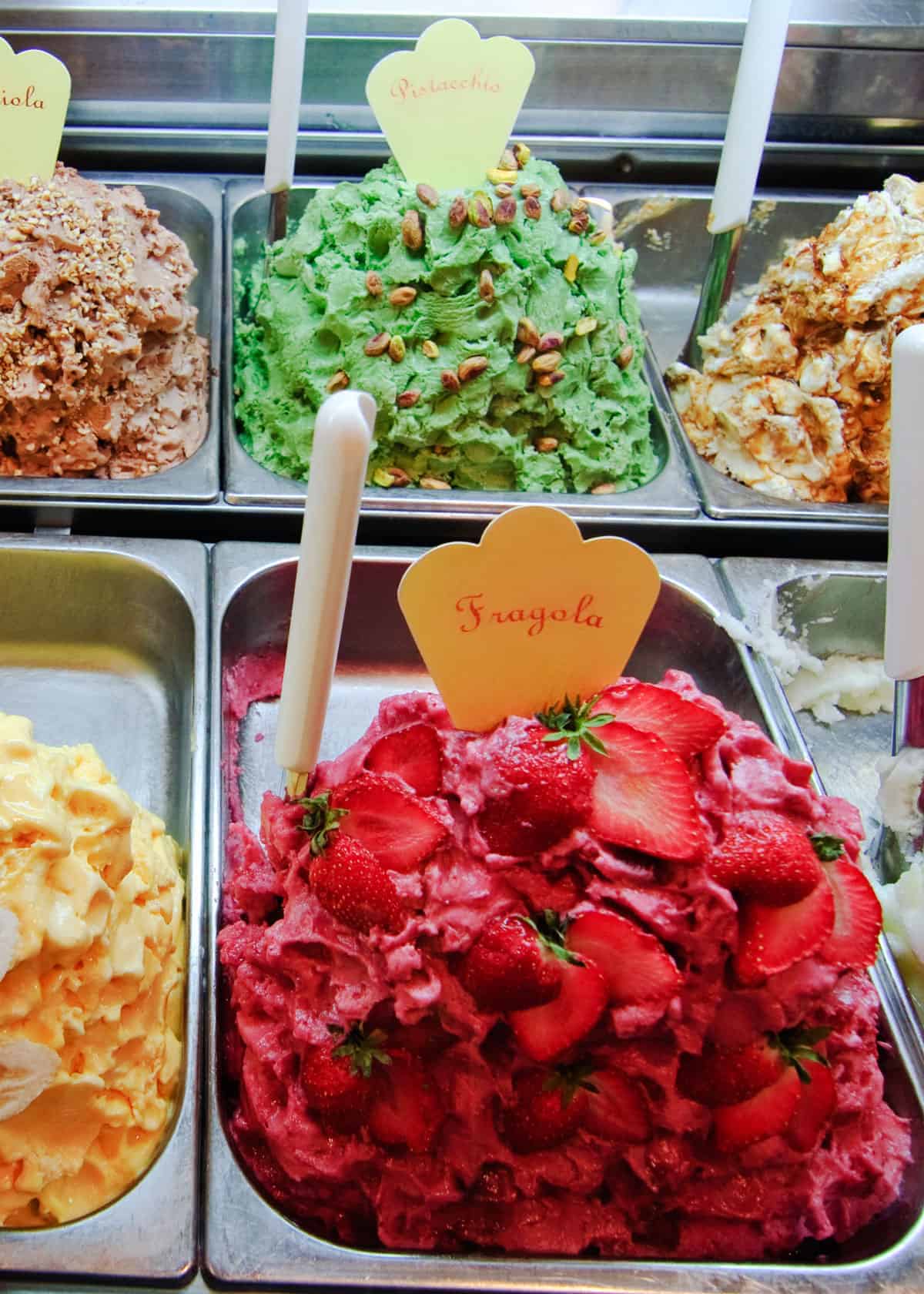
42. What can you eat and drink in Italy?
You can eat and drink just about anything in Italy.
While the country loves its traditional favorites, a variety of ethnic cuisine is also served there. For example, you can find restaurants that serve American, Spanish, and Japanese food.
43. What is Italy’s national dish?
One of the lesser-known facts about Italy is that its national dish is actually a sauce . Known as Ragu alla Bolognese (or just Bolognese), it is a tomato sauce with beef meatballs.
44. What is a typical dinner in Italy?
In Italy, lunch is the biggest meal of the day.
Dinner (supper) tends to be lighter. Traditionally, it usually consists of pasta, pizza, or bread and might include some seafood or salad. Today, Italians enjoy trying ethnic cuisine for dinner, so they may eat couscous or even sushi for dinner.
45. What is the most popular drink in Italy?
Both wine and coffee are extremely popular in Italy, so much so that it’s hard to say which is more popular.
Italians love having strong espresso and other coffee throughout the day, even in the evenings, and they often have wine with lunch and dinner.
46. What do the locals eat for breakfast?
Breakfast in Italy is the lightest meal of the day , and it’s normally very simple. For example, it might include toast with jam, some yogurt, or possibly just some fruit.
47. What is the main dish in Italy?
Pizza and pasta are the main dishes in Italy, and they are available in many variations depending on the location you’re in.
In the southern part of Italy, pasta and pizza are normally served with seafood toppings, and in the northern and central parts of the country, heavier cream sauces and beef or chicken are more likely to be used. Olive oil features in most of the main dishes served in the country.
48. What food and drink is Italy famous for?
Italy is famous for its pasta, pizza, coffee, wine, and desserts.
Italians usually group pasta according to length (short or long) and whether they are plain or stuffed. Most pasta are made from white flour, but pasta made from whole wheat and beans are becoming more popular. Some types of pasta are called different names in different regions of the country.
Spaghetti, linguine, vermicelli, and penne are a few of the major pasta types. Pizza in Italy is classified as either a Neapolitan type or a Roman type. The Neapolitan type has a thicker crust, while the Roman type has a thinner crust. Additional distinctions are made between so-called red pizzas (those that have tomato sauce, cheese, and other toppings) and white pizzas (focaccia bread with toppings but without tomato sauce). Some of the most famous coffee drinks in Italy are cappuccino and espresso, and wines include both red and white varieties.
Famous desserts include gelato, tiramisu, and panettone, a sweet Milanese bread served at Christmas.
49. What fruit is Italy famous for?
Lots of citrus fruits grow in Italy, particularly in its Southern areas and in Sicily.
The country has many groves of various citrus fruits, including several different types of oranges, lemons, and limes that are used to make limoncello and other liquors and syrups.
One of the most famous Italian fruits is cedro, known in English as citron . This fruit is sweeter than a normal lemon, and Italians use it on top of bruschetta or in salads.
50. What can you not eat in Italy?
You can find most foods in Italy. However, the country does not typically use ice for drinks, so you may want to bring an ice cube tray from home to make ice during your stay. In smaller towns, it can be difficult to find vegan food options , so those following special diets may need to do some research in advance of their trip.
51. Can I drink the water in Italy?
Yes, the tap water in Italy is completely safe to drink. However, some people who have underlying health conditions or take medication may find that drinking tap water in a foreign country causes stomach upset. If this occurs, bottled water is readily available in stores.
Italy is known for using donkey’s to perform rescues along their rocky cliffs. Learn more about them and their miniature friends .
Language in Italy
52. what are the official languages in italy.
The official language of Italy is Italian. Some sources list Catalan as an additional official language.
If you are heading to Italy on a trip, an Italian phrasebook is a great idea. If you are planning on moving to Italy, you will probably want even more. We’ve had great success with the Pimsleurs Language program.
53. What language are road signs in Italy?
Most road signs in Italy are in Italian only.
However, in some areas, bilingual signs are used. For example, German is included on road signs in South Tyrol (an area where German is widely spoken), and French is included on signs in the Aosta Valley region (an area where French is widely spoken).
On the island of Sardinia, signs are posted in both Italian and Sardinian, the local dialect.
Wildlife in Italy
54. what animals live in italy.
Italy has nearly 5,000 species that are native to the country.
Some of the interesting mammals in the area include the Italian wolf, the Mediterranean monk seal, the Alpine marmot, the Corsican hare, and the Sardinian long-eared bat. The European owl moth is only found in the southern part of the country.
Unique amphibians and reptiles in the nation include the Italian newt and the Italian frog, the brook chub, the Sicilian wall lizard, the Aeolian wall lizard, and the Sicilian green toad.
55. What dangerous animals are in Italy?
Italy has a number of venomous snakes . These include the asp viper and the horned viper.
More of a pest than a danger, the country is also home to processional caterpillars. These caterpillars travel in long lines and only move in groups. They tend to make nests in fir trees.
56. Are there any deadly spiders in Italy?
Yes, both brown recluse and black widow spiders live in Italy, and their bites can cause severe pain. If left untreated, a bite from one of these spiders may be fatal.
The country also has tarantulas and a spider known as the violin spider, both of which are venomous and should be avoided.
Plant Life in Italy
57. what is italy national flower.
One of the most fun facts about Italy that surprises tourists is that there are several national flowers for this country.
Officially, the white lily is the nation’s national flower. However, the traditional and symbolic flower of the country is the white rose . In addition to the white lily, the white poppy also serves as a symbolic religious flower in Italy.
Yet, Italians themselves consider the violet to be the most popular flower symbol in the nation.
58. What types of vegetation are common in Italy?
Italy has three different vegetation zones.
- In the highest zone, mostly around the Alps, commonly seen vegetation includes trees such as the cypress, cherry laurel, evergreen cork oak, and European olive. Shrubs and flowers such as rhododendron, primrose, dwarf juniper, and green alder are also typically seen.
- In the southern portions of the country near the Mediterranean Sea, the holm oak and Aleppo pine trees are plentiful. Olive trees are common, and there are also large quantities of feather grass and white asphodel in the meadows of Calabria.
- In Sicily, papyrus grows as a freshwater plant.
59. What crops are grown in Italy?
In addition to citrus fruits, crops such as potatoes, sugar beets, corn, rice, and wheat are grown in Italy.
National Symbols of Italy
60. what is the symbol of italy.
The national symbol of Italy is the stella d’Italia (star of Italy) .
This symbol dates from ancient times. Today, most Italians associate it with “towered Italy,” an ancient allegorical representation of the country.
61. What is the national tree of Italy?
One of the lesser-known Italy facts is that the country has two national trees .
Both the olive tree and the oak tree are considered to be Italy’s national trees.
62. What is Italy’s national bird?
The national bird of Italy is the Italian sparrow .
63. What is Italy’s national animal?
Many Italians consider the wolf to be the country’s national animal.
Wolves are the most prevalent wild animals in the country. Legend has it that Romulus and Remus, twin brothers credited with the founding of Rome, were both raised by a female wolf who protected them from other animals.
64. What is Italy’s national sport?
Football (known as soccer in the United States) is considered to be Italy’s national sport .
Culture in Italy
65. what are some of the different cultures in italy.
Italy is a multicultural country with diverse customs.
The primary language is Italian, and French, German, and local dialects are also spoken.
Roman Catholicism is the dominant religion and 20 percent of the country is either Muslim, agnostic, or atheist.
Pasta, pizza, olive oil, and seafood are some of the most well-loved foods in the nation.
Italians tend to be very fashionable, and traditional dress is generally worn only for special ceremonies. Traditional dresses tend to be very brightly colored with lots of red and green.
66. What is the population of Italy?
The current population of Italy is just over 59 million.
67. Is Italy’s population increasing or decreasing?
The population of Italy has been decreasing over the last few years.
Between 2017 and 2018, the population decreased at a rate of -0.12 percent. Between December 2018 and February 2019, the population decreased at a rate of -0.13 percent.
68. How many immigrants live in Italy?
Approximately five million legal immigrants currently live in Italy.
69. Where do the immigrants in Italy come from?
The majority (23 percent) of immigrants to Italy are from Romania. Immigrants from Albania, Morocco, China, and Ukraine also make up a large percentage of Italy’s immigrant population.
Italy Immigration and Expat Facts
70. what is the best place to live in italy.
Expats moving to Italy typically need a place that is affordable and that has good English-speaking or international schools. They also need a location that has a high-level of easily-accessible healthcare and resources for families.
With that in mind, the areas listed below are popular choices for many foreigners.
71. What are the requirements to live in Italy? How can I immigrate to Italy?
Americans and non-EU citizens can stay in Italy for 90 days on a tourist visa. To live in Italy longer than that, an individual will normally need to have a job offer in Italy or be a student at an Italian university, a retiree, or a foreigner transferring his or her job to Italy as part of an inter-company transfer.
To immigrate to Italy, you must apply for a visa in advance of your arrival. You can apply at your nearest Italian consulate, and the consulate can provide full details of possible immigration routes that may be available to you.
72. How do you become a citizen of Italy? Is it hard to become a citizen of Italy?
The process of gaining Italian citizenship is long and hard. To become a citizen of Italy, a United States citizen must live in Italy for a minimum of 10 years , and the length of time is similar for nationals of other non-European Union countries.
Beyond that, the path to citizenship can be very complex, and it is best to get personalized advice about your individual immigration situation. Italy allows dual-citizenship with the United States and many other countries.
73. Is it easy to get permanent residency in Italy?
No, it is not easy to get permanent residency in Italy, but the process of doing so is worth it.
Citizens of the European Union must live in Italy continuously for five years before they are eligible to apply for permanent residency in Italy. The time period varies for citizens of non-European Union countries, and it is sometimes longer than five years.
74. How long can I live in Italy?
How long an individual can live in Italy depends on his or nationality and which visa he or she holds.
Generally, citizens of the European Union can live in Italy more easily than non-European Union citizens. One of the most common visas issued by the Italian government is the long-stay visa . This visa is good for 91 to 365 days and is issued for study, work, or permanent residency.
To determine more about how long you can stay in Italy, check your visa status or ask your Italian consulate.
75. How long can I stay in Italy without a visa?
People who travel to Italy for the purpose of tourism will be issued a visa on arrival at the port of entry. For Americans, Canadians, Australians, and others from non-European Union countries, a 90-day stay is the maximum permitted under this visa.
For any other type of visa, including a study or work visa, applications must be made in advance of travel; these visas are not issued at ports of entry.
76. How can I work in Italy?
To work in Italy as a non-citizen, you will need a work permit. To obtain this permit, you must be sponsored by an Italian employer, and they must file all of the necessary papers on your behalf.
Certain jobs are also subject to a quota system that limits the numbers of permits that will be issued for these jobs each year. University professorships and some types of performing arts jobs are exempt from the quota system.
77. What percentage of Italy are immigrants?
Currently, an estimated 8.3 percent of Italy’s total population is comprised of immigrants.
78. How many expats are in Italy?
Today, there are approximately five million expats living legally in Italy.
Holidays in Italy
Understanding the details of these customs will make it easier to plan your trip.
79. What are some popular Italian Christmas traditions?
Italians celebrate Christmas for 12 days. The celebrations start on Christmas Eve (December 24th) and end on Epiphany (January 6th). A fish supper is normally eaten on Christmas Eve, and Babbo Natale (the Italian version of Santa Claus) makes the rounds on this night.
The presepe , an ornate nativity scene, is typically the central focus of most Italian Christmas decorations, and nearly every town has its own presepe display. Traditionally, bonfires are held in town squares throughout the country on Christmas Eve. On Christmas Day, the main meal is meat-based.
80. What are some of Italy’s Easter traditions?
Easter ( Pasqua in Italian) celebrations typically begin during Holy Week, the week before Easter Sunday, and they include large, solemn religious processions. These are held in major cities and small towns across the nation, and the Pope leads a special procession at the Colosseum in Rome.
In the city of Florence, Easter Day is celebrated with a tradition known as the explosion of the cart ( Scoppio del carro ). Just before the Easter Sunday mass, a decorated cart filled with fireworks is taken to the Basilica di Santa Maria del Fiore by two white oxen. After mass, the priest throws a dove-shaped rocket into the cart, igniting a beautiful fireworks display. This is then followed with a parade by performers dressed in medieval costumes.
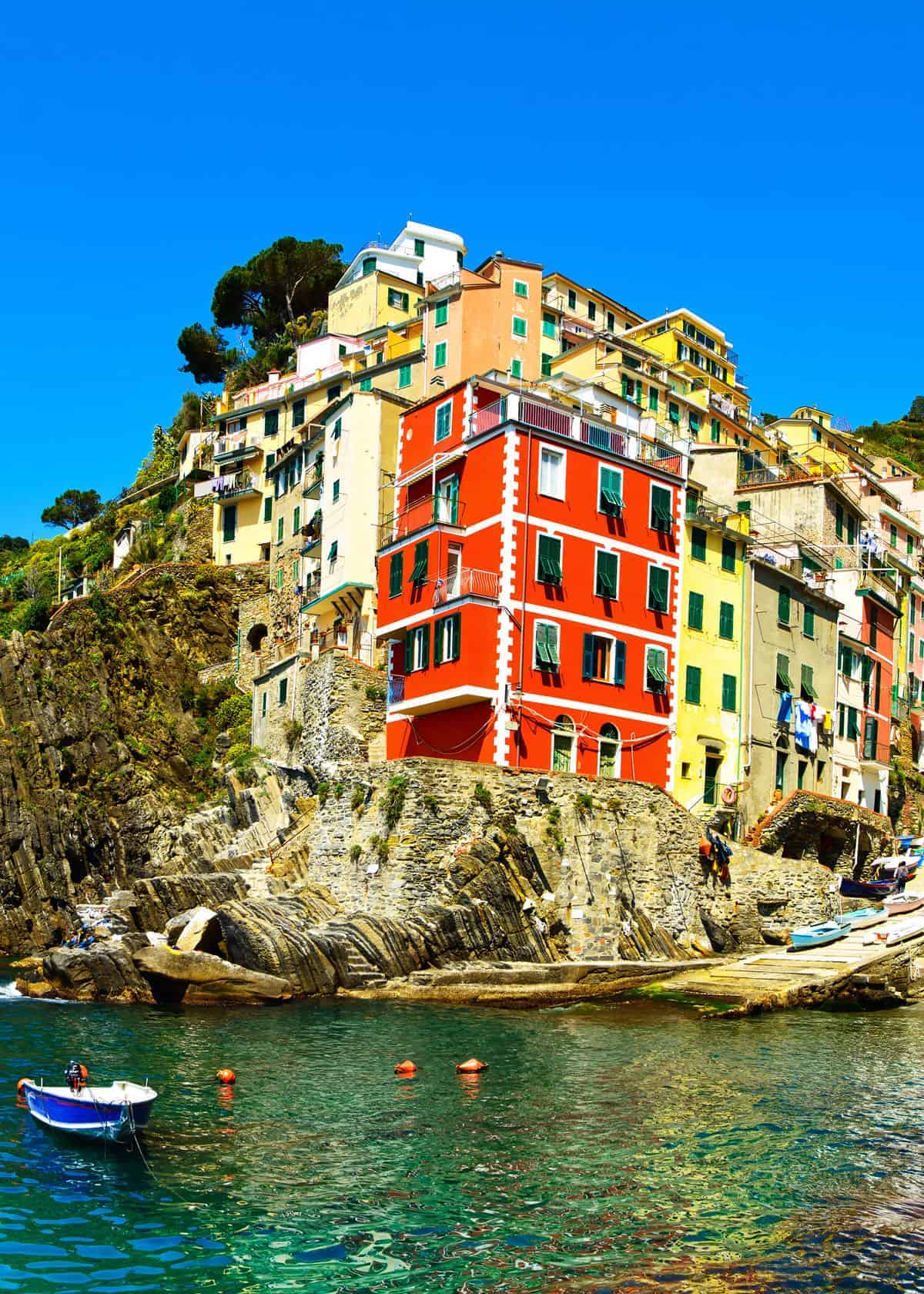
Have a fact about Italy to share? Join me in the comments!
Hi, I'm Bryan Haines . And I'm a co-founder of Storyteller.Travel . I'm a traveler and photographer.
I also blog about photography on Storyteller Tech .
Similar Posts
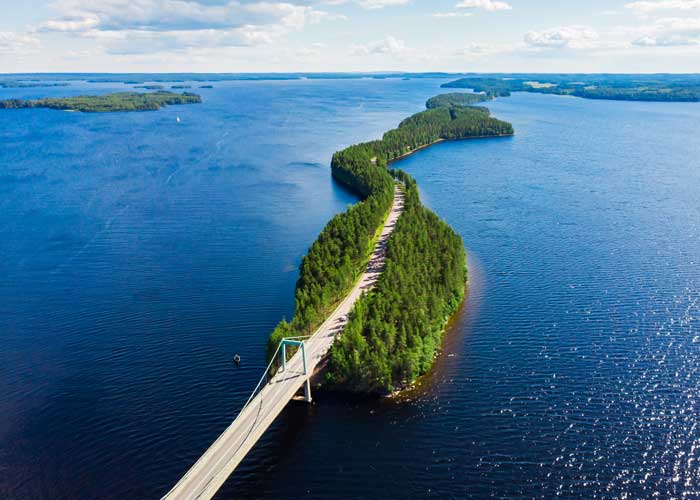
14 Largest Lakes in Europe: Listed by Size
Europe is filled with beautiful lakes and rivers. What is largest lake in Europe? And how does it compare to the other large lakes in this region? In this post, we’ll compare Europe’s largest lakes – by area, volume and depth. What’s the largest lake in Europe? Lake Ladoga in northwestern Russia is the largest…

14 Things to Do in Kampala Uganda (Bonus: 11 Kampala Facts)
Thinking about visiting Kampala while in Uganda? In this post, you’ll learn all about Uganda’s capital city – interesting facts and many things to do in Kampala. Looking for facts about Kampala? Jump to that section now. 14 Things to Do in Kampala Uganda Here are 14 things to do in Kampala Uganda. Did we…
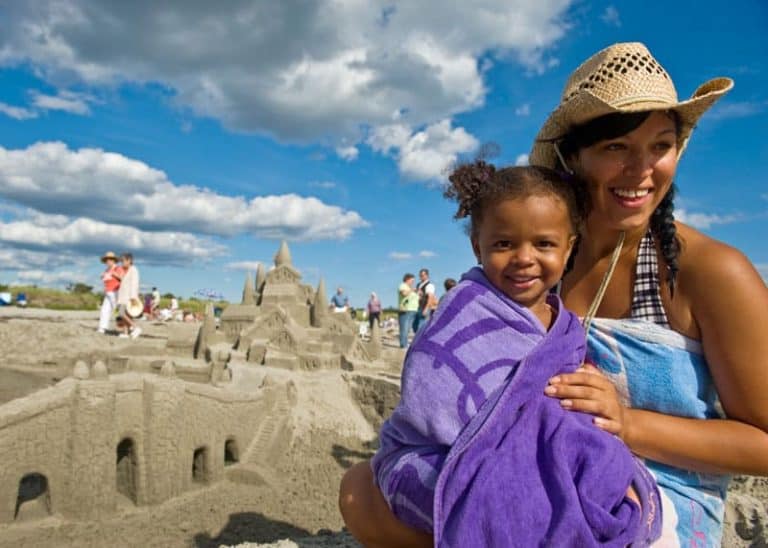
Nova Scotia Beaches: Guide to 41 Best Beaches in Nova Scotia
Looking for the best beaches in Nova Scotia? Here’s the complete guide to Nova Scotia beaches – including the longest, warmest and best surfing beaches. Despite its northern location, Nova Scotia is known for having some of the warmest waters north of the Carolinas. And with 7500 km of coastline, there are a lot of…

What’s the Largest Lake in Africa? 9 Largest Lakes Compared
Africa is home to many huge lakes. What’s the largest lake in Africa? And where are the best places to visit? In this post, you’ll learn about the 9 largest lakes in Africa. Plus lots of photos and details. Africa has so much to offer a western traveler including world-renowned lakes. Second only to the…
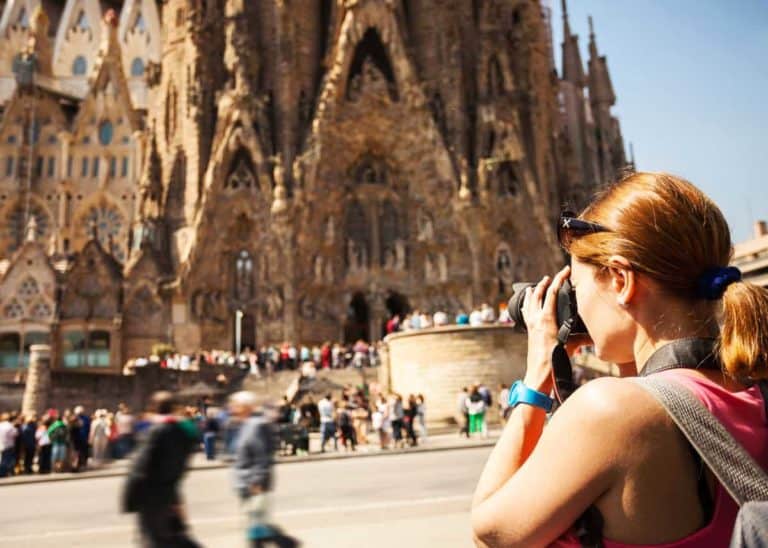
Moving to Barcelona? 10 Things to Know (Customs, Cost of Living, Language…)
Are you moving to Barcelona? In this post by Annebeth Vis (bio), you’ll learn ten things to know before relocating to Barcelona Spain. She covers local customs, cost of living, wages, language, paperwork, and much more. 10 Things to Know Before Moving to Barcelona Life in Barcelona is in many ways different than in other…
![italy travel facts 15 Incredible Things to do in Uganda [Culture, Nature, Culinary, Adventure…]](https://storyteller.travel/wp-content/uploads/2018/10/things-to-do-in-uganda-768x548.jpg)
15 Incredible Things to do in Uganda [Culture, Nature, Culinary, Adventure…]
Here are 15 things to do in Uganda. They include gorilla trekking and animal safari, adventure sports, cultural events and much more. 15 Incredible Things to do in Uganda Nicknamed the “Pearl of Africa” by Sir Winston Churchill, Uganda offers a smorgasbord of impressive attractions and unique things that you can’t see or do anywhere…
Leave a Reply Cancel reply
Your email address will not be published. Required fields are marked *

Italy Fun Facts: 126 Unique Things You Didn’t Know About Italy
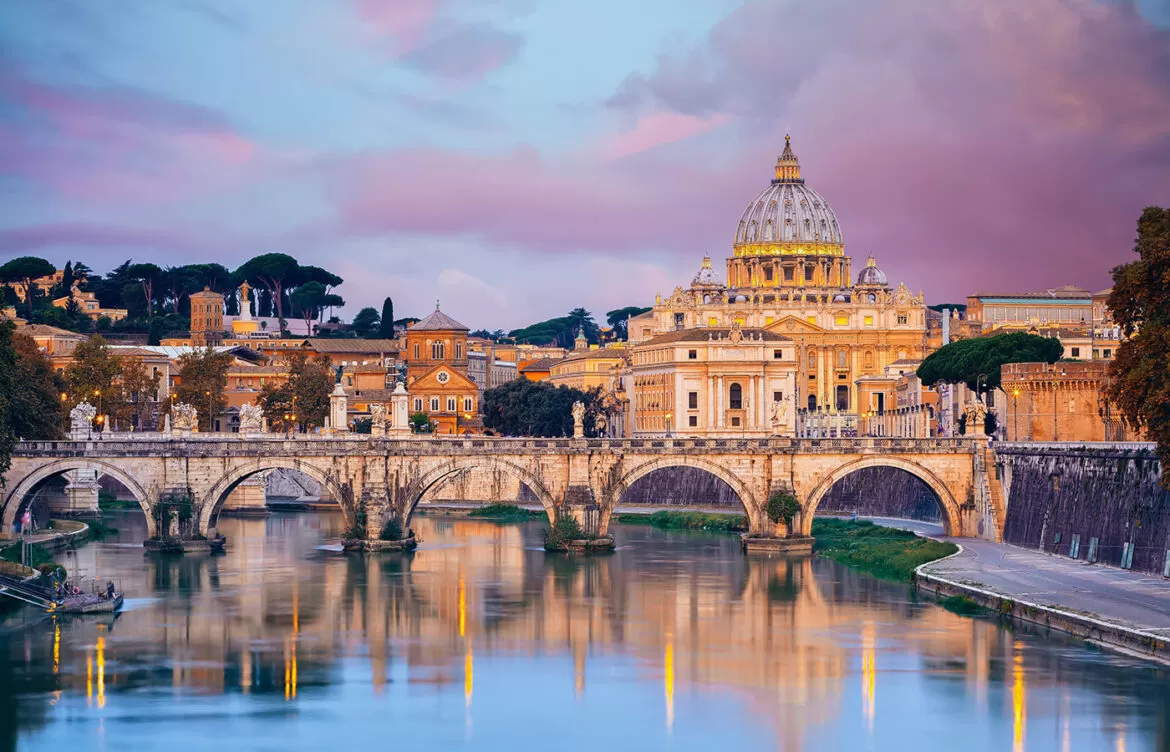
From designer police uniforms to 350 types of pasta, ancient landmarks to bizarre traditions, here are 126 fun facts about Italy that you didn’t know.
Italy is a fascinating country that has had a great influence not only on European but on world culture. Italian food and Italian fashion are known and loved all over the globe. But there’s more to Italy than paintings by da Vinci, delicious pizza, and Gucci bags. I have collected over 100 interesting Italy facts that will surprise you but also help you understand this beautiful country a little bit better. Cominciamo! (Let’s get started!)
Planning a trip to Italy? Don’t miss my Italy travel tips that will save you time, money and disappointment.
The Country
Where is Italy located, how many people live there, what is its capital – all of this and other facts about the country of Italy in this section.
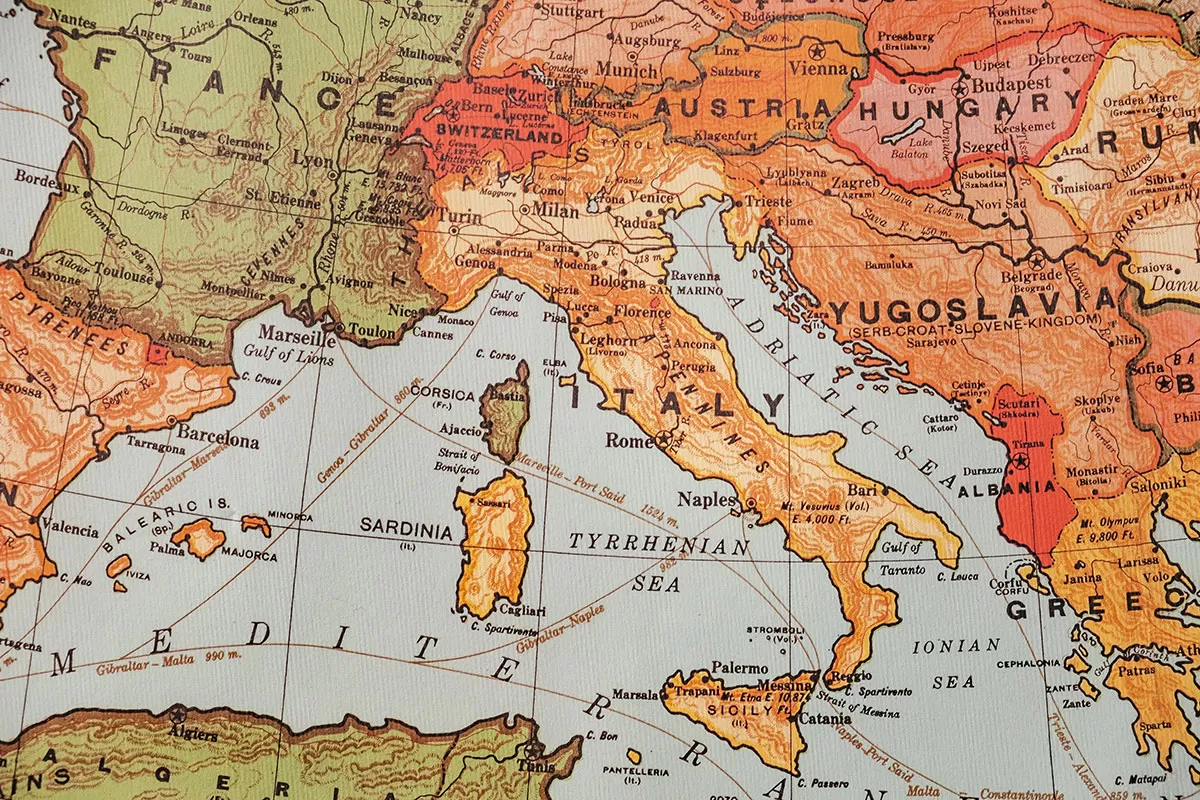
- Italy is shaped like a high boot. If you open the map of the world and zoom in onto Europe, you will see a boot-shaped country protruding into the Mediterranean Sea – that’s Italy. It is a coincidence then that Italian shoes are some of the best in the world? There is even a saying, ‘ Long-legged Italia, kicked poor Sicily, right into the middle of the Mediterranean Sea.’
- As Italy is a peninsula largely located in the Mediterranean Sea, it has over 7,600 kilometers of coastline with some amazing beaches.
- The population of Italy is a little over 60 million people. That makes Italy the world’s 23rd country by population . After Germany, France, and the United Kingdom, Italy is the fourth most populated country in Europe.
- The Italian island of Sardinia is one of five regions in the world to be called a Blue Zone. A Blue Zone is where a higher than usual number of people live much longer than average. The other ‘Blue Zones‘ include Okinawa (Japan); Nicoya (Costa Rica); Icaria (Greece); and among the Seventh-day Adventists in Loma Linda, California,
- Rome, the capital of Italy, is one of the oldest cities of the world – it was founded in 753 BCE.
- The name ‘Italy’ (‘Italia’) most likely means ‘calf land’. Originally it was spelled ‘Vitalia’, originating from the Latin ‘vitulus’, meaning ‘a one-year-old calf’.
- With around 60 million tourists a year. Italy is the world’s fifth most visited country.
- The smallest country in the world is inside Italy, namely, Rome. Vatican City has an area of 44 hectares and a population of about 825.
- The Vatican is not the only small country within Italy: there is also San Marino. It is located in the mountains in the northern part of Italy, and has an area of 61 square kilometers (23.5 sq. miles).
- The Italian flag is green, white, and red, symbolizing hope, faith, and charity.
- Italy is predominantly Christian, with around 90% of the population Roman Catholics.
- Italy’s population is one of the oldest in the world: almost 20% of Italians are older than 65.
- Before it adopted the Euro, Italy’s currency was the Lira.
- The Italian economy is the eighth largest in the world.
- The head of the Italian government is the Prime Minister. There is also a President, but he is largely a ceremonial figure. As of March 2021, the current President of Italy is S ergio Mattarella and the Prime Minister is Mario Draghi.
- Italy is divided into 20 regions. Five of them are autonomous regions (*) that have more power and independence. The names of the regions include: Abruzzo, Basilicata, Calabria, Campania, Emilia-Romagna , Friuli-Venezia Giulia *, Latium (Lazio) , Liguria, Lombardia, Marche, Molise, Piemonte, Puglia (Apulia) , Sardegna (Sardinia), Sicilia (Sicily), Toscana (Tuscany), Trentino-Alto Adige (Trentino-South Tyrol) *, Umbria , Valle d’Aosta (Aosta Valley)*, and Veneto .
- The Italian national anthem is called Il Canto degli Italiani (Meaning: The Song of Italians) and was written and composed in 1847, but it wasn’t until December 2017 that it was officially recognised as Italy’s national anthem!
History of Italy
Italy has a long eventful history, full of events that influenced not only Europe but the whole world. What are some historical Italy facts? Read on to find out.
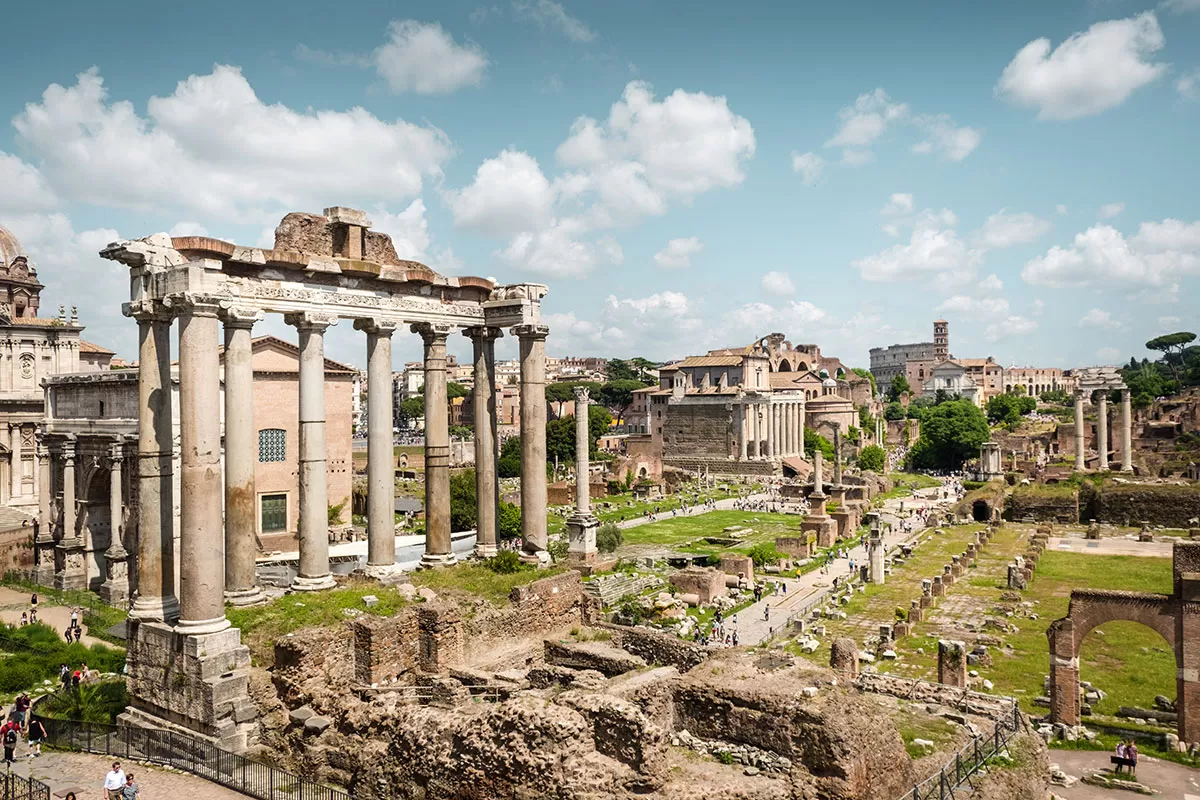
- In antiquity, Italy was the homeland of Romans and the heart of the Roman Empire, which, at its peak, occupied about 5,000,000 square kilometers – 1% of all the land on the planet.
- The Roman Empire was founded in 27 BCE and disappeared in 476 CE.
- A large part of Italy used to be Ancient Greece. For instance, the city of Syracuse in Sicily was once the largest city of Ancient Greece, and pockets of Greek culture still remain in Sicily.
- First societies emerged in Italy around 1200 BCE. However, present-day Italy only became a sovereign state and was unifed on March 17, 1861.
- For twenty years, from 1925 to 1945, Italy was under the dictatorship of Benito Mussolini.
- The first bank in the world started in Italy in 1149. The fir st real bank was created during the Middle Ages in Italy thanks to the fast expansion of the Maritime Republics. One of these was Genoa, where the Banco San Giorgio in Genoa was founded in 1149. The concept of a bank became so successful that it generated huge fortunes. In areas such as Florence, Pisa and Venice, the families of bankers became extremely rich and powerful. Their businesses reached as far as England, France and Spain, and they began lending money to the European sovereigns. Often the sovereigns offered feuds, baronage and other aristocratic titles instead of paying back the money they borrowed. This is how a member of the Medic i family could be elected Pope and Lorenzo the Magnificent obtained the government of Florence.
- Italy is one of the six countries that founded the European Union. The other five founding countries are Belgium, France , Germany , Luxembourg and the Netherlands .
- Italy was a kingdom until 1946.
- The last king of Italy w as Umberto II. He ruled for just 34 days, from 9 May 1946 to 12 June 1946, when Italy became a republic.
- The ancient city of Pompeii was destroyed by the volcano Vesuvius in 79 CE.
- Since the end of World War ll, Italy has seen 60 governments come and go.
- Italy has hosted the Olympic games three times in 1956, 1960, and 2006.
Italian Culture
Italian culture can well be called one of the most influential cultures on the planet. It has given the world some of the greatest artists, sculptures, and architects, and has to a great degree shaped western culture. Here some fun facts of Italy and its influential culture.
- Many consider Italy the art capital of the world and it is believed that Italy has more masterpieces per square meter than any other place in the world. Italian museums and galleries are amazing and are a must-visit if you travel to Italy.
- Europe’s oldest university is in Italy. The University of Bologna was founded in 1088 and still remains among the world’s best universities.
- Italian cities have historically been self-sufficient and undefended. As a result, the culture, language and traditions differ greatly from one region/city to the next.
- The story of Pinocchio was written by the Italian author Carlo Collodi and was first published in a newspaper in 1881. The Adventures of Pinocchio is children’s novel that recounts the mischievous adventures of an animated marionette named Pinocchio and his father, a poor woodcarver named Geppetto.
- People visiting the Sistine Chapel occasionally suffer from the so-called ‘Sistine Chapel syndrome’: they throw back their heads to look at the amazing frescos by Michelangelo on the ceiling, which, if you stand like that for too long, can lead to fainting.
- Some of the world’s well-known artists are from Italy: Rafael, Leonardo Da Vinci, Michelangelo, Donatello, Caravaggio, Titian, Botticelli, and Bellini.
- Italy is famous not only for its artists but for its explorers as well, including Christopher Columbus, Amerigo Vespucci, and Marco Polo. Between 1492 and 1502, Christopher Columbus led four trips across the Atlantic Ocean with the aim of finding a direct water route west from Europe to Asia. Instead, he discovered the Americas. Vespucci was the first person to recognize North and South America as distinct continents that were previously unknown to Europeans, Asians and Africans. Vespucci discovered present-day Rio de Janeiro and Rio de la Plata. Believing he had discovered a new continent, he called South America the New World. In 1507, America was named after him. Marco Polo was a Venetian merchant who is famous for travelling to Central Asia and China, including the silk road with his father in 1271. When Polo returned from his adventures, he recounted his tales which helped introduce Europeans to Asia, and contributed to demystifying the largely unknown continent. In this influential book called The Travels of Marco Polo, Polo describes the geography of Asia, the customs of its people, and highlights China’s creativity in the use of coal, money, and compasses to improve future exploration.
- Italy is also a source of great film stars, such as Monica Bellucci ( Malèna, The Passion of the Christ ), Robert Benigni (Life is beautiful), Isabella Rossellini (Blue Velvet), and Sophia Loren (Yesterday, Today and Tomorrow; Marriage Italian Style). Fall in love with Italy with my guide to Romantic Italian films.
- Football (or soccer), is extremely popular in Italy, with many local clubs and millions of passionate fans.
- Ballet originated in Italy in the 15th century and was introduced to France by Catherine de Medici.
- ‘Ars longa, vita brevis’ is a common saying in Italy that means ‘art is long, life is short’. This expression highlights the long-lasting impact of art over the brevity of life.
- Italy is home to 3,847 museums , galleries or collections, 240 archaeological areas or parks and 501 monuments or monumental compounds.
Italian Traditions
Italian people value their roots and observe many traditions. Take a look at this section to find out what some fun Italian traditions and customs are.
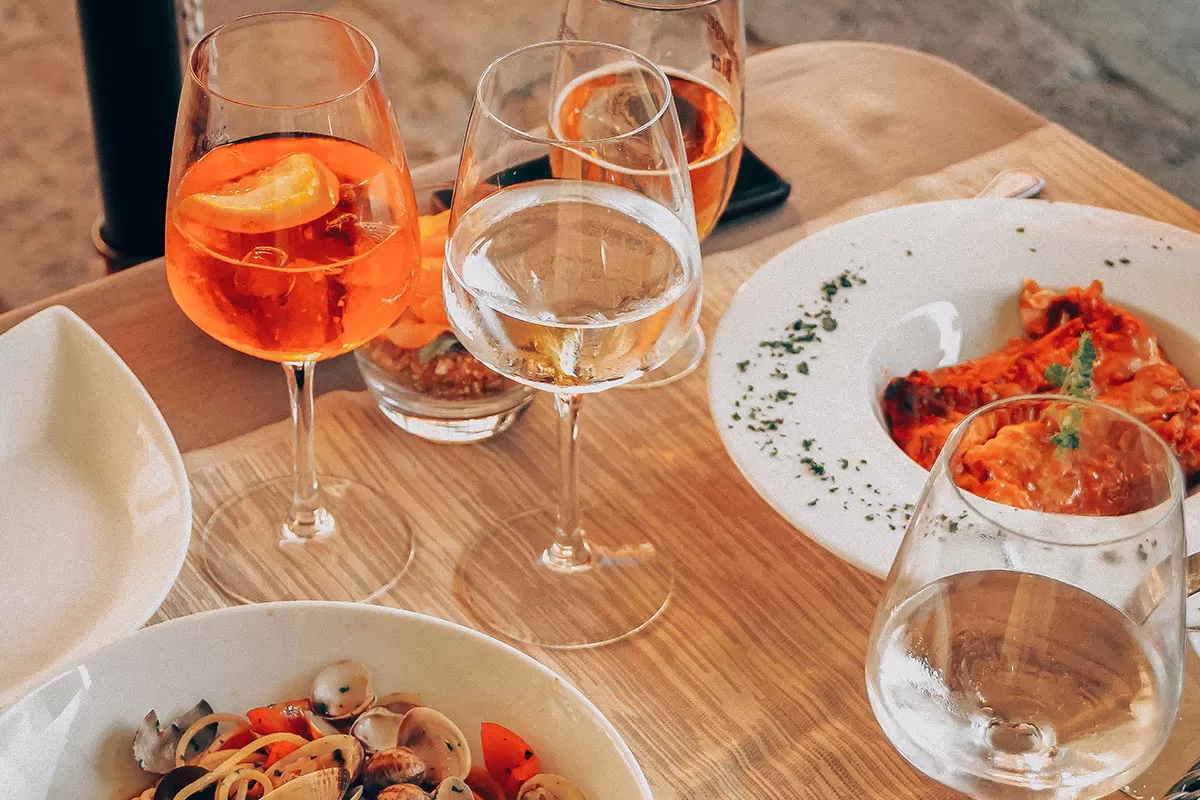
- After dinner, many Italians fare una passeggiata – take a stroll after their evening meal. You often do this as a way to help with digestion but is often a social activity and a time to catch up with friends and neighbours, to go out and be seen.
- Italy is one of the most superstitious countries in the world. There are lots of everyday superstitions that many Italians believe. For instance, it’s customary to place a loaf of bread face up not to offend Jesus; it’s back luck to celebrate your birthday before the actual date; when raising a toast, you should tap the bottom of the glass on a table to bench; and it’s bad luck to raise a toast with water or when drinking from a plastic cup. There are also many local and regional superstitions. For example, in Naples an amulet of a red chili pepper, known as a cornicello (Italian for ‘little horn’ or ‘hornlet’) is said to bring luck and p rotect the bearer against the evil eye. What makes a cornicello so special is that you can’t buy it for yourself, it must be gifted to you. Another common Italian superstition is that if you accidentally spill salt or oil on the table, this could lead to finance ruin. This idea stems from ancient times when both oil and salt were expensive commodities. In fact, Roman soldiers were paid in salt, which is how we get the word ‘salary (Italian: sale ). To undo any potential harm caused from spilling these precious ingredients, you must quickly pick up the salt grains and throw them behind your shoulders three times with the left hand. Why three? This is the number of the Trinity and the left hand is associated with sinister things so in this case, evil wards off other evil. When the grains of salt land on the floor, a passerby will pick-up the bad luck instead. If you spill oil, then a single pinch of sprinkled salt will do the trick.
- The family (and the mother in particular) is the centre of Italian society, with young people often living at home well into their 30s.
- Italians are known for having large families, however, at the same time, Italy is known for having the lowest birthrate in Europe.
- The biggest holiday of the year in Italy is Christmas, with the Christmas season starting as early as December 8th and lasting until January 6th.
- Cats are loved and protected in Italy. Rome alone is home to about 300,000 cats. A person convicted of killing a cat, owned or stray, can face a €10,000 fine and up to 3 years in prison. There are roughly 300,000 feral cats in Rome. In fact, the Rome city council protects them due to their ancient bond with the city, citing that they are part of the city’s ‘bio-heritage.’ A sanctuary of 250 cats was established at Largo di Torre Argentina, where Julius Caesar was assassinated by Brutus.
- Number 13 is actually considered very lucky in Italy, while number 17 is unlucky, and many tall buildings don’t have a 17th floor.
- Eating or drinking on church steps or in the church courtyard is prohibited.
- Respecting elders is essential for Italian culture. It is customary to stand up when an elderly person enters the room.
- First impressions are important in Italy, so make sure to be polite.
- Before dinner, Italians will go out for an aperitivo . The Italian aperitivo is similar in concept to ‘Happy Hour’ but drinks aren’t discounted but food is included. Originating in Milan, in Northern Italy, Italians will head to a cocktail or wine bar with friends and catch up with a relaxing post-work drink and some light snacks. Common beverages are wine, Aperol Spritz or Campari Spritz. Since most Italian eat lunch around 1pm or 2pm, and dinner around 9pm, having an aperitivo is a great way to tie them over until dinner time.
- Many Italians celebrate their name day. This Roman Catholic tradition is when, on a certain day of the year, a person celebrates their given name and can be just as important as celebrating their birthday since they were named after a saint. When someone celebrates their name day, you wish them Buon onomastico! (Happy name day!). Since my name is Michele, my name day is September 29th. If you’re named after a saint, you can check your name day here.
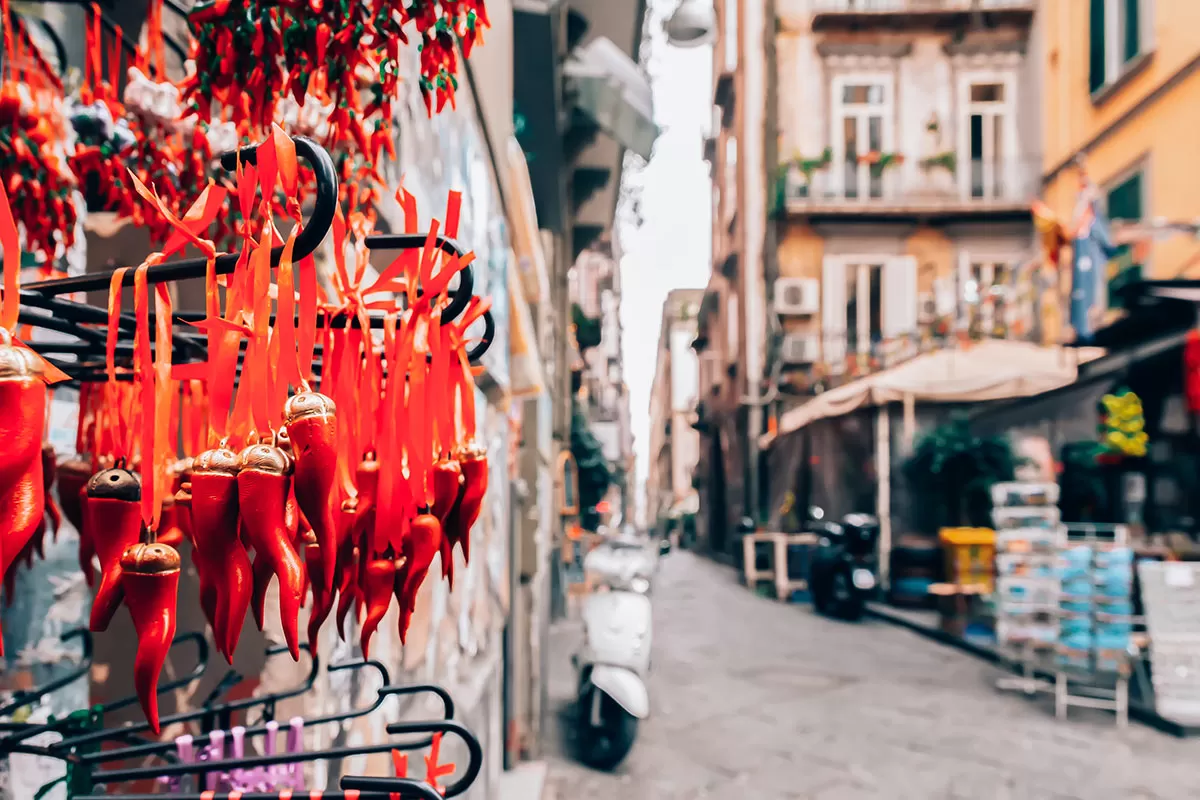
A cornicello is a traditional Neapolitan good luck charm
The Italian Language aka la bella lingua
The Italian language is a ‘distant relative’ of English and is often considered one of the easiest languages for English-speakers to learn . Want to know more about Italian? Read on!
- Italian is the official language of Italy , San Marino , Switzerland and Vatican City . It’s also the official language of some parts of Croatia and Slovenia .
- As of 2020, there are 67 million people in Europe who speak Italian as their first language. A further 13.4 million people speak Italian as a second language. Italian is also spoken by large expatriate communities in the Americas and Australia. Fun fact: My dad immigrated to Australia back in 1950s, which makes me a heritage Italian language learner.
- Apart from Italian, 12 minority languages are recognized in Italy, including Albanian, Catalan , French , German , Greek , Slovene, and Sardinian.
- Located in the Dolomite Mountains in Northern Italy in the provinces of South Tyrol, Trentino, and Belluno, is the Ladin people who speak Ladin – a Romance language that shares similarities to Swiss Romansh and Friulian.
- The Italian language is a Romance language with its roots in Vulgar Latin. It is closely related to French and Spanish, with around 80% lexical similarities. These languages are not mutually intelligible, but if you already know one of them, you can learn the others quite easily.
- Of all the Romance languages, Italian is the closest to Latin.
- Italian is the language of music. Allegro, adagio, piano, forte – all these are Italian words. Music notation as it is used today was created by an Italian named Guido d’Arezzo.
- There are only 21 letters in the Italian alphabet. Letters J, K, W, X, and Y aren’t used in Italian.
- Italian has a formal and informal way to say ‘you’. Unlike in English, our version of being formal and informal is the difference between not swearing or just using more sophisticated words. In Italian (and many other languages) there are two different ways to say ‘you’. The formal way and the informal way. You use the informal pronoun tu ( too) (you) when speaking with good friends, young people, children, and your family members. Basically, anyone you know well. However, when speaking to a person you don’t know well such as a superior, shopkeeper, waiter, teacher, professor, or someone of important social standing such as a doctor, or police officer, then you should address him or her formally — that is, with Lei (lay) (you).
- Dante Alighieri is considered the ‘Father of the Italian language’ as he and his works contributed a lot to standardizing Italian.
- Italians speak with their hands and gestures nearly as much as they do with words, and some people find it nearly impossible to express themselves without gestures.
- Many believe Italian to be one of the most beautiful languages in the world. Why? Dr Patti Adank of the University College London says that Italian is attractive to the ear because of its so-called ‘melody’. Italian consists of a large number of words that end in vowels, and a few words with consecutive consonants in a row, this creates an open sound that makes it perfect for singing. In fact, the Holy Roman Emperor Charles V allegedly said, ‘ I speak Spanish to God, Italian to women, French to men and German to my horse.’
- The word quarantine dates back to the days of the Bubonic Plague in Venice where this word originates . ‘Quaranta’ means ‘forty’ in Italian. Ships entering Venice were forced to anchor offshore for a full 40 days to prevent the spread of the disease.
- Italian has a lot of food-related expressions. A common proverb is A tavola non si invecchia mai , meaning ‘one doesn’t grow old at the dinner table’ therefore you should take your time and enjoy the moment. There are also plenty of Italian food-related insults natives will often use, including Sei come il prezzemolo! (You’re like parsley), in other words, ‘you turn up everywhere’ and Non fare il salame! (Don’t act like salami!) or ‘Don’t be an idiot!
- The term ‘milestone’ comes from the ancient Romans. After the Imperial Forum in Rome was built, the Romans placed a stone there and then they placed additional markers on the roads leading out of Rome. Each of these markers was placed at a distance of 1,000 paces. Since a pace was approximately 5 ft, 1,000 paces was approximately 5,000 ft in modern measurements. Since the unit of length was 1,000 paces, the Romans called the distance a ‘mila’, the Latin word for ‘thousand’. We’ve taken this measurement in English as ‘mile’ and that’s why a modern mile comes from the Latin word for ‘thousand’ but it actually represents a measurement of slightly more than 5,000 ft in modern measurements. Each of these markers was called a ‘milliarium’ and this word comes into English as ‘milestone’. So, as you travelled in and out of Rome, you passed a’ milestone’ every 1,000 paces. This was a mark indicating how far you had come or how far you had left to go, and it’s in this sense that we’ve inherited the term ‘milestone’, to refer to a level of achievement or accomplishment.
- Italian words have a grammatical gender which means that they can be either feminine or masculine. It’s important to note that you shouldn’t confuse these grammatical terms with the biological terms ‘male’ and female’. After all, a pizza is not technically a girl, even though it has a feminine grammatical gender, and risotto isn’t a boy even though it is masculine, grammatically speaking. Sound strange? The English language used to have grammatical gender too. You can still see remnants of grammatical gender in words like blonde and blond .
- Vatican City has ATM’s in Latin. Yes, The Vatican is the only country in the world to have ATM’s that speak Latin to you as you withdraw money. Latin is the official language of the Vatican which is why you can choose this language option. Rumor has it, that the former Pope Benedict XVI, made his transactions in Latin.
Landmarks in Italy
Italy is a country of both natural and architectural beauty. In this section, we have collected a few fun facts about some of the Italian landmarks.
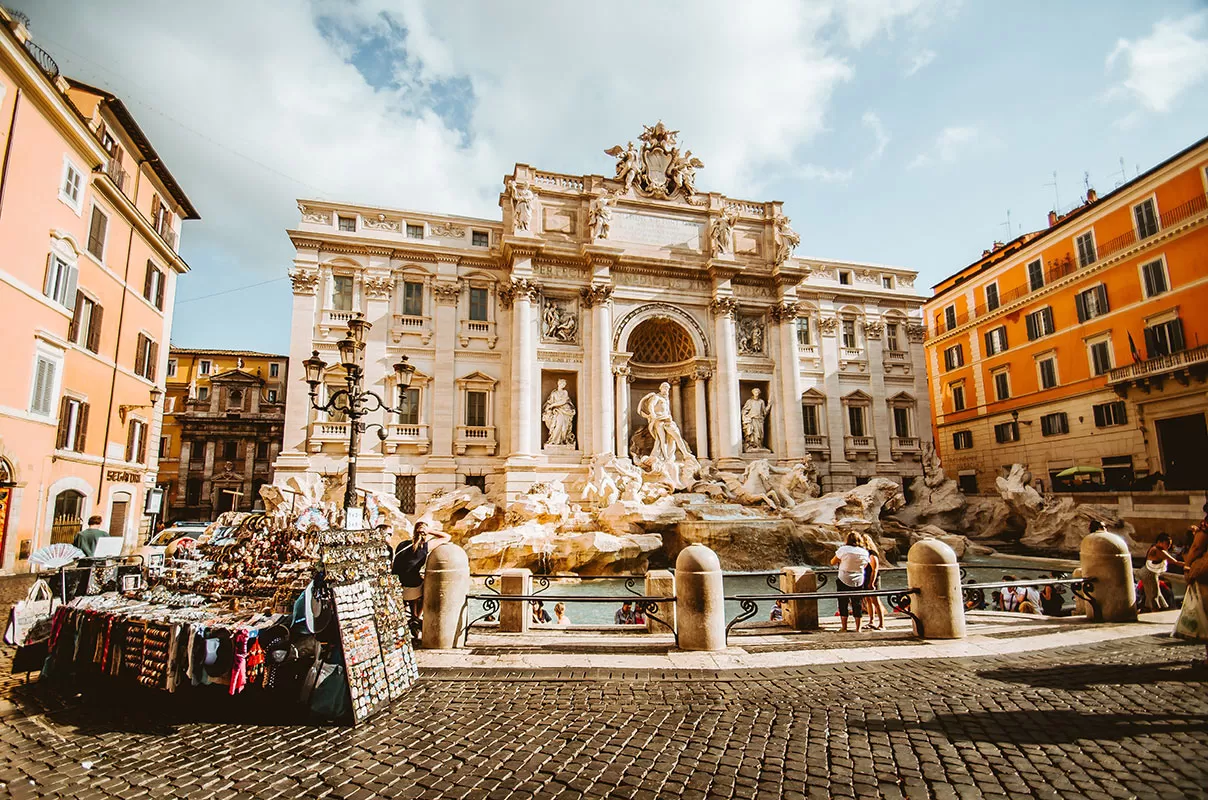
- Rome, the capital of Italy, is home to hundreds of fountains. There are 50 fountains in the city that can be considered large, including the oldest and most famous Trevi fountain . There are also multiple smaller fountains with the exact number impossible to count.
- The Trevi Fountain , (Fontana di Trevi in Italian) is Italy’s largest and most famous Baroque fountain, standing 85 feet high and 65 feet across. The fountain is located at the junction of three roads ( tre vie ) which marks the terminal point of the ‘modern’ Acqua Vergine aqueduct, the revived Aqua Virgo, one of the aqueducts that supplied water to ancient Rome. In 19 BC, supposedly with the help of a virgin, Roman technicians located a source of pure water some 13 km (8.1 mi) from the city. (This scene is presented on the present fountain’s façade.) However, the eventual indirect route of the aqueduct made its length some 22 km (14 mi). This Aqua Virgo led the water into the Baths of Agrippa. It served Rome for more than 400 years.
- Tourists throw almost €3,000 into the Trevi fountain every day, which adds up to about €1,000,000 a year! Legend has it that tossing a coin into the fountain means that you will no doubt return to Rome, and it seems like a lot of people want to return.
- Italy has the most UNESCO World Heritage sites – 55, as of 2019. There is only one country in the world that can boast the same number – China.
- The lagoon city of Venice doesn’t have any cars (except for the area around the train station). Located in Northern Italy, Venice is built on 120 islands and its canals are its streets. Since there are no cars (or roads), the only way to get around is by water transportation.
- Florence is the birthplace of the Renaissance.
- The Colosseum in Rome is one of the most recognized Italian landmarks. This huge arena could sit over 50,000 spectators.
- One of the most spectacular buildings in Italy is the Milan cathedral, which took almost six hundred years to complete. It is called Duomo di Milano in Italian and is one of the largest church buildings in the world.
- The biggest and probably the most famous cathedral in the world is St Peter’s Basilica in Vatican City. There are 284 columns flanking the cathedral square, and the dome alone is 42 meters high.
- St. Peter’s Basilica isn’t a cathedral—or the official seat of the Pope. For all its importance, St. Peter’s Basilica isn’t the official seat of the Pope. Nor is it first in rank among Rome’s basilicas. Both of those accolades go, instead, to San Giovanni in Laterano (St. John Lateran), the mother church of the Roman Catholic church. But because of the size of St. Peter’s, and its location next to the residence of the Pope, most of the Church’s most crucial ceremonies are held here instead.
- The Colosseum in Rome is the largest amphitheatre (meaning ‘theatre in the round’) in the world! Measuring 189 m long, 156 m wide and 50 m high, this ancient sporting arena is also known as the Flavian Amphitheatre because it was built during the Flavian dynasty. It got the name Colosseum because of a statue that was located alongside the amphitheatre called ‘the colossus of Nero’. Unknown to many visitors is that Nero’s hidden palace Domus Aurea is located opposite the Colosseum.
- The name of the famous leaning tower in the city of Pisa comes from a Greek word meaning ‘marshy land’. The tower is leaning because its shallow and heavy foundation was not a good match for the soft soil. The tower, in fact, still continues to lean because of this however it has since been stabilized so it’s unlikely to fall in the foreseeable future.
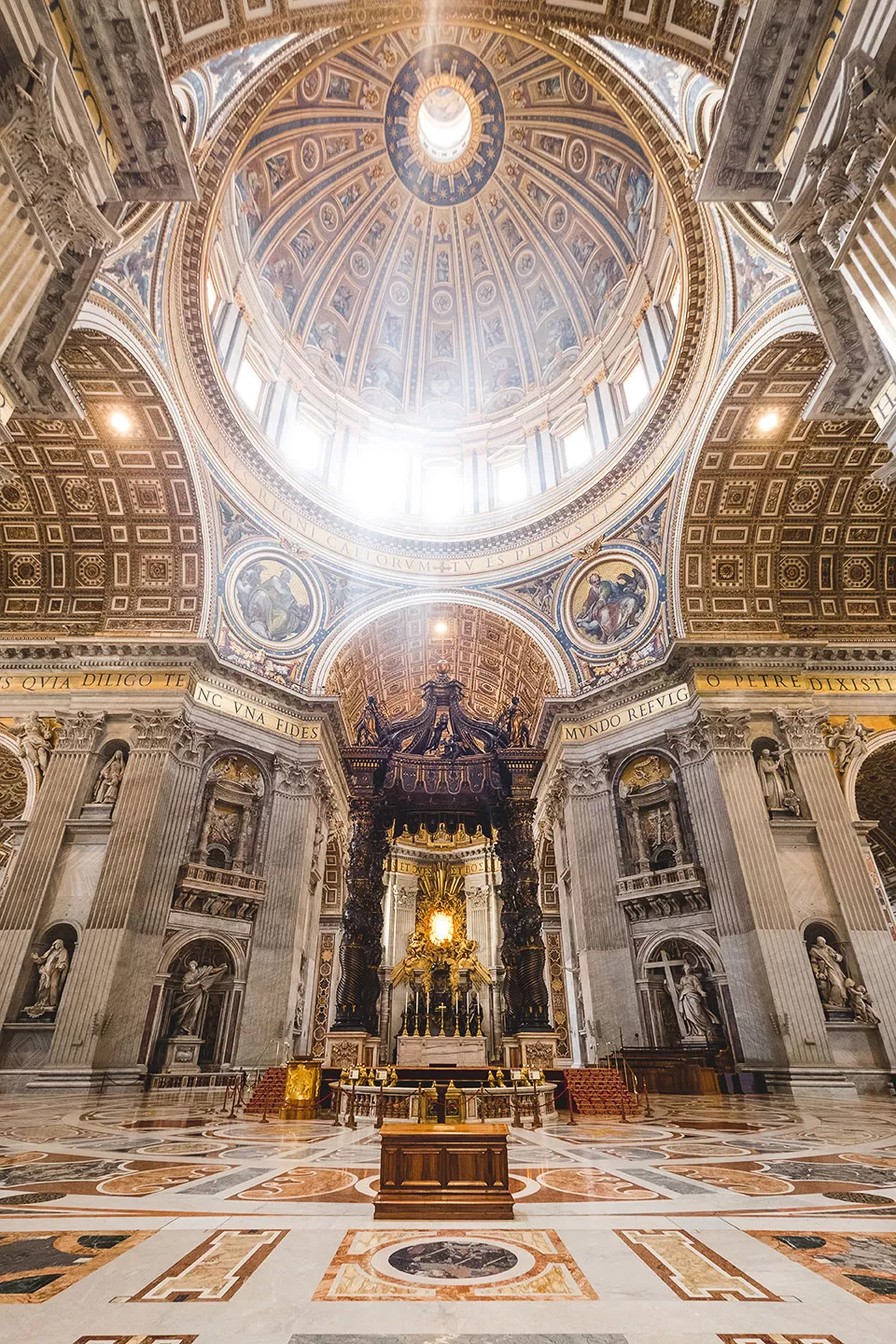
Natural wonders in Italy
Italy is a relatively small country (a little over 300 000 square kilometers) but it is large enough to be home to some amazing natural wonders.
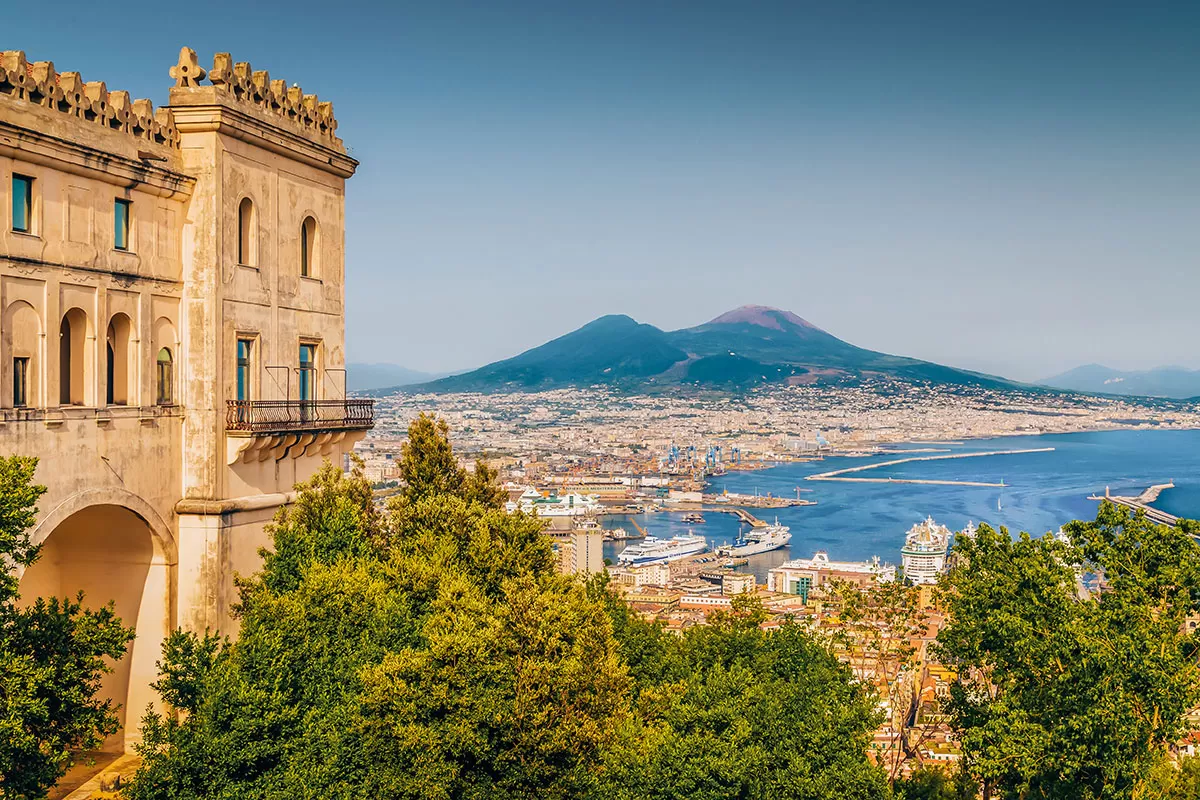
- Italy has more volcanoes than any other country in Europe. It lies on a fault line, which causes volcanoes to form. Many of Italy’s Italian volcanoes are still active, including the famous M ount Vesuvius ( the only active volcano on mainland Italy ), Mount Etna (located in Sicily) and Mount Stromboli (located on the Stromboli island in the Tyrrhenian Sea) which has been in almost continuous eruption for the past 2,000–5,000 years. Volcanoes are beneficial in that they provide fertile soil for crops.
- About 80% of the Italian landscape is made up of hills and mountains, which is another consequence of the country being located on a fault line. It is one of the things that gives the country its particular charm, and it has inspired many works of art.
- Italy is separated from the other countries by the Alps. This mountain range is located in the north of Italy and runs along the full length of the border.
- The highest mountain in Europe is located in the Alps on the French-Italian border. Called Mont Blanc in French and Monte Bianco in Italian , its highest peak is (15,771 feet [4,807 metres]).
- There are over 1,500 lakes in Italy, which is quite a lot for a relatively small country. Some are surrounded by mountains, others by sandy beaches, big and small – you can spend your whole vacation enjoying Italian lakes.
- The two main mountain ranges in Italy are the Alps (which run across the top of Northern Italy) and the Apennines which run vertically down the centre of Italy.
- Italy has two big islands, Sicily and Sardinia, as well as lots of smaller ones – over four hundred. It is estimated that 1 in every 10 Italian lives on an Island.
- There is a sea cave called Grotta Azzurra on the island of Capri. ‘Azzurra’ means ‘blue’ in Italian. Due to the unusual refraction of sunlight, the water in this cave appears incredibly blue. You can visit it by taking a boat ride but be careful not to bang your head on the very low entrance to the cave.
- Earthquakes are frequent in Italy with the last major earthquake, measuring 6.2 ± 0.016 on the moment magnitude scale. It hit Central Italy on 24 August 2016 where 299 people died.
- Italy is surrounded by four seas: the Adriatic Sea, Tyrrhenian Sea, Ionian Sea, and the Mediterranean Sea, and borders four countries: France, Switzerland, Austria , and Slovenia all in the north.
Italian Food and Cuisine
Practically the whole world eats pizza and pasta . But how well do you really know Italian cuisine? Let’s find out!
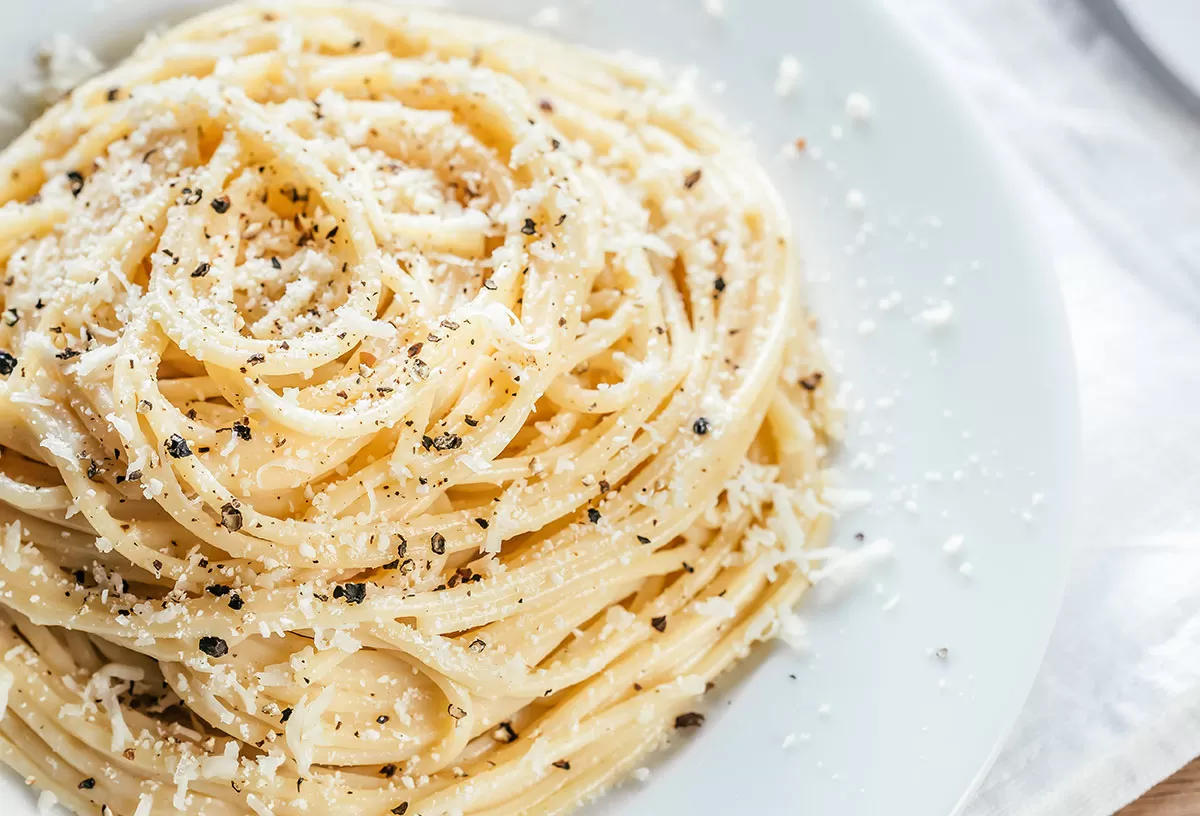
- Italy introduced many popular foods to Europe. This includes not only the obvious pizza and pasta but also such things as coffee and ice-cream (gelato): these foods didn’t originate in Italy but have been popularized by them.
- The first McDonalds opened in Rome in 1986 and caused protests. Italians are very proud of their cultural heritage and their cuisine in particular, and it is no surprise that they opposed this fast-food chain.
- Pasta used to be a sweet dish. Pasta was first brought to Italy in the 13th century. At that time, it was served with honey and sugar – and eaten with your fingers!
- There are approximately 350 different kinds of pasta. In Italy, names may vary according to the region or area.
- There is a free wine fountain in Caldari di Ortona in Italy. It flows 24/7 with a locally grown red wine.
- Italians drink around 14 billion espressos a year – which is quite impressive for only 60 million people. An average household in Italy goes through 37 kilograms of coffee per year.
- On average, Italians consume 25 kilograms of pasta per year.
- One of the things Italy is famous for is its cheeses: there are over 2,500 traditional cheeses in the country including Gorgonzola, Pecorino Toscano, Taleggio, Fontina d’Aosta, Parmigiano-Reggiano, Mozzarella di Bufala, Provolone, Mascarpone and Ricotta.
- Italy is the world’s largest wine producer and exporter.
- Tiramisú is not just a name of a popular Italian dessert, it is a whole phrase calling on you to pick up the dessert and eat it: ‘tiramisu’ can be translated into English as ‘pick me up’. In turn, the desserts high energy content and caffeine will ‘pick you up’
- Pizza was invented in Naples. As the story goes, on June 11, 1889 the now world-famous original Margherita pizza was created by the Neapolitan pizzamaker Raffaele Esposito in honour of the Queen consort of Italy, Margherita of Savoy. Raffaele created the Pizza Margherita, to represent the national colours of Italy as on the Flag of Italy. Basil (green), mozzarella (white) and tomatoes (red).
- The concept of take-out food dates back to ancient Rome.
- Italians eat a lot of bread – about half a pound a day.
- The famous Venetian dish, Bacalà alla Vicentina, was inspired after an Italian sea captain was shipwrecked in Lofoten, Norway. Norway exports 40 million kilos of dried codfish each year, most of which are sent to Italy. It all started with Pietro Querini, an Italian sea captain from Venice who in 1432 was shipwrecked in Røst, a small island in the Lofoten archipelago. While recuperating on the island, Querini discovered codfish which he called ‘ stocfisi ’ ( Tørrfisk in Norwegian ), which dominated the local economy and was air- and wind-dried until it became ‘as hard as wood’. When Querini left for Venice four months later, he took 60 sticks of air-dried cod with him. The Venetians were not particularly impressed, though: there was plenty of local lagoon fish to eat and leathery Norwegian cod didn’t have quite the same appeal. When Querini eventually returned to Venice, he took 60 sticks of air-dried cod with him and wrote a report of his travels. Querini is famed for having popularised Stockfish, particularly codfish, in the Veneto region where it is prepared as Bacalà alla Vicentina.

Italian Fashion
Names like Gucci, Versace, Prada, and Dolce & Gabbana are known all over the world, even to people who have nothing to do with fashion. Here are a few facts about Italian fashion and Italian fashion brands.
- Italian fashion is concerned much more about elegance than comfort.
- Italians often choose to have fewer high-quality, well-made clothes rather than having lots of cheap ones.
- Dolce & Gabbana is a popular Italian brand, but they opened their first store in Japan, in 1989.
- Each region in Italy has its own unique traditional costume. However, similar to many other countries, these costumes are only worn during special festivals and celebrations.
- Rome and Milan are often listed among the world’s top fashion capitals.
- Italy ranks as one of the top countries in terms of leather crafts and production. Many Italian regions have a long-standing tradition of leather treatment, and the quality of Italian leather is truly superior.
- In Italy, there are two main police forces. The regular state police, the Polizia, and the Carabinieri. During the 1980s, Italian fashion designer Giorgio Armani designed the new more modern uniforms.
More surprising Italy facts you probably didn’t know
There are many more fun facts about Italy out there, and not all of them fit easily into a category – but they are still worth learning, and we have gathered some of them in this final section.
- The Italian polizia (police) drive Lamborghinis. There are only a few police Lamborghinis in the whole country, but where else on Earth would you find one if not in Italy?
- The first-ever pair of eyeglasses were made in Italy in the late 13th century.
- Alessandro Volta is the Italian scientist who created the first battery in 1800. The unit of power, the volt, is named after him.
- Galileo Galilei (1564-1642) invented the thermoscope, an instrument that indicated temperature differences, which led to the invention of the thermometer by Santorio Santorio (1561-1636) – a Venetian scientist.
- The jacuzzi was invented by Italian engineer Candido Jacuzzi, who created the original portable, in-home Jacuzzi Whirlpool Bath.
- Da Vinci invented many things which we still use today, including the Barreled cannon (the automatic weapon), helical aerial screw (the helicopter), the anemometer (to measure wind speed and direction), the revolving bridge, a winged flying machine (the airplane), diving equipment, self-propelled cart (the car) and the parachute.
- The Mafia still exists in Italy and is estimated to make up 7% of the country’s entire GDP.
- It is against the law to die in the town of Falciano del Massico located 30 miles from Naples. The town’s cemetery is full and they passed this law to try and control death. There is a bronze statue of Jesus Christ submerged in the Mediterranean Sea near the coast of San Fruttuoso.
- Poveglia Island in Italy is believed to be haunted – to such an extent, in fact, that access by the public is banned.
- Around 500,000 exorcisms are performed in Italy each year.
- La Festa della Repubblica is the Italian National Day and Republic Day, which is celebrated on 2 June each year, with the main celebration taking place in Rome. On 2 and 3 June 1946, an institutional referendum was held where Italians voted for their preferred form of state – monarchy or republic. The referendum was announced at the end of World War II, a few years after the fall of the Fascist regime in Italy.
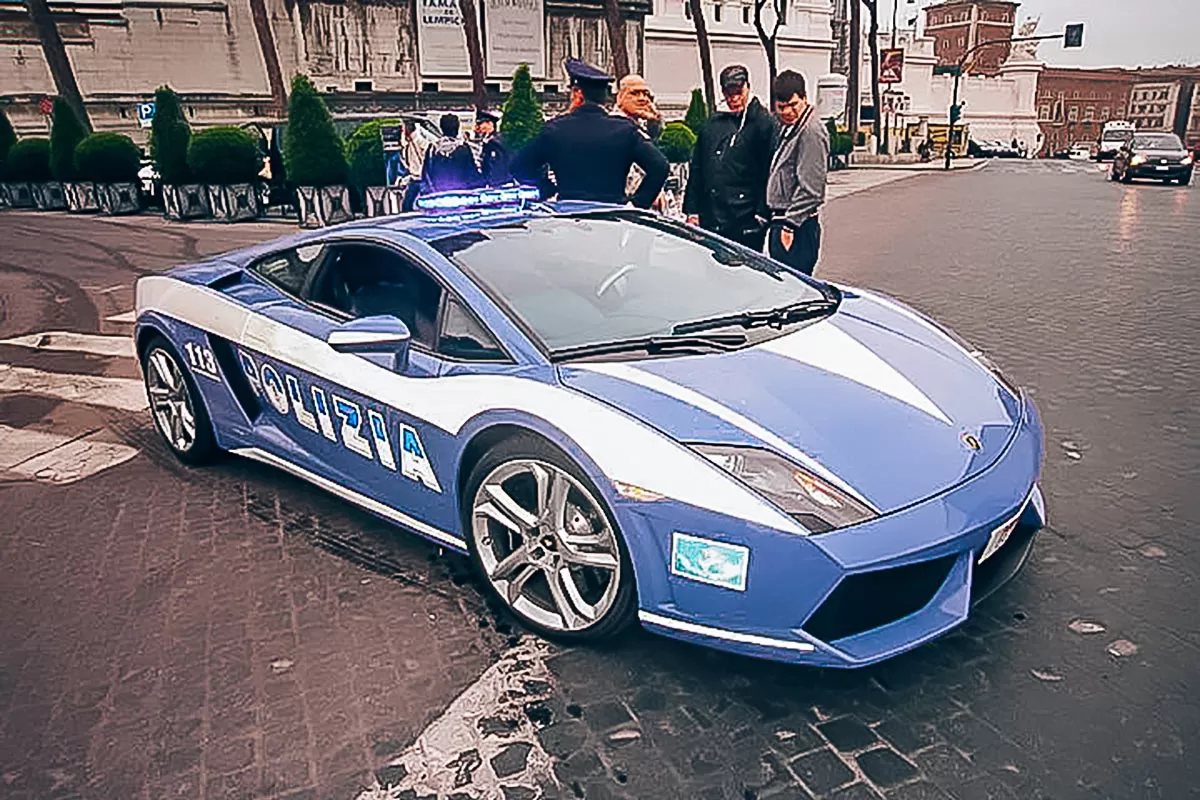
Don’t be treated like a tourist. Learn Italian with my 80/20 method
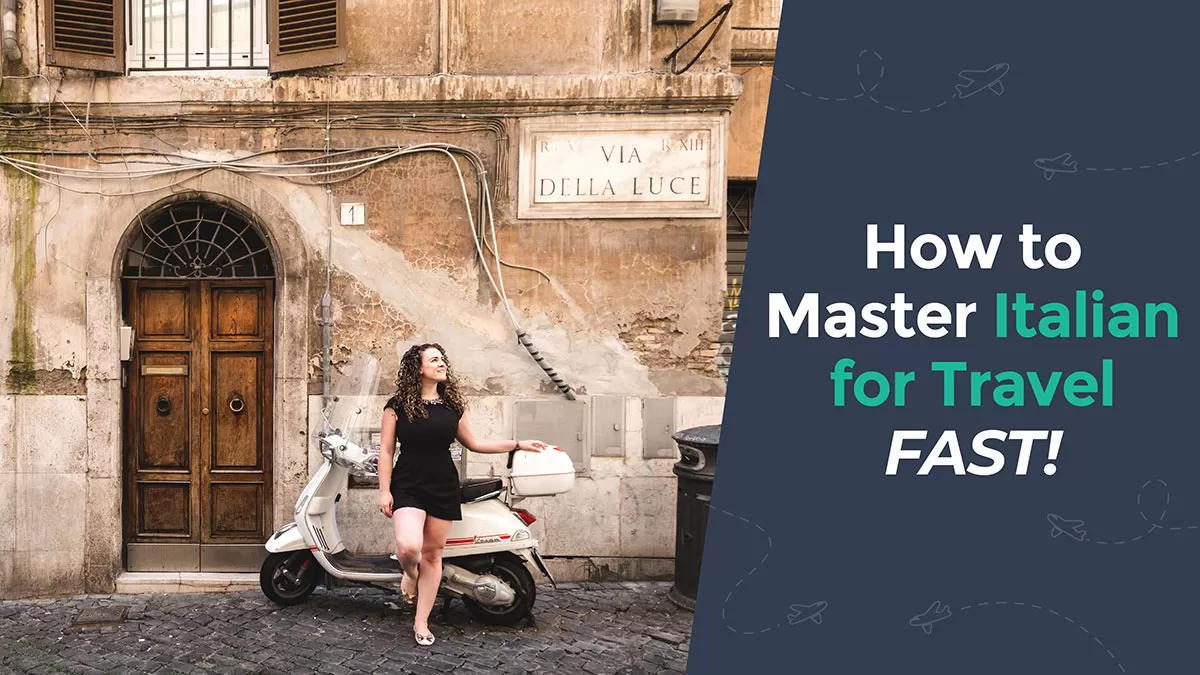
Travelling to Italy? Don’t be treated like a tourist! Live your best travel experiences and learn Italian for less than the cost of eating at a tourist trap restaurant or a taxi driver who has “taken you for a ride”. I’ve made it easy for you to master the Italian language so you can create lifelong memories as you mingle with locals , get local tips , avoid tourist traps , and make new friends . Who knows, you may even be invited over for afternoon tea by a lovely Sicilian family like I was! Read all about how speaking Italian changed my life and check out my online Italian video course here.
Here’s what my students are saying:

I really enjoyed the Intrepid Italian course, it certainly exceeded my expectations. The learning methodology is great, and easy to follow and found that I progressed much faster in the last 4 weeks than I ever did on my own or using other language apps. Grazie mille Michele, I can’t wait until I can put my new skills into action! – Roma Small
Click here for instant access!
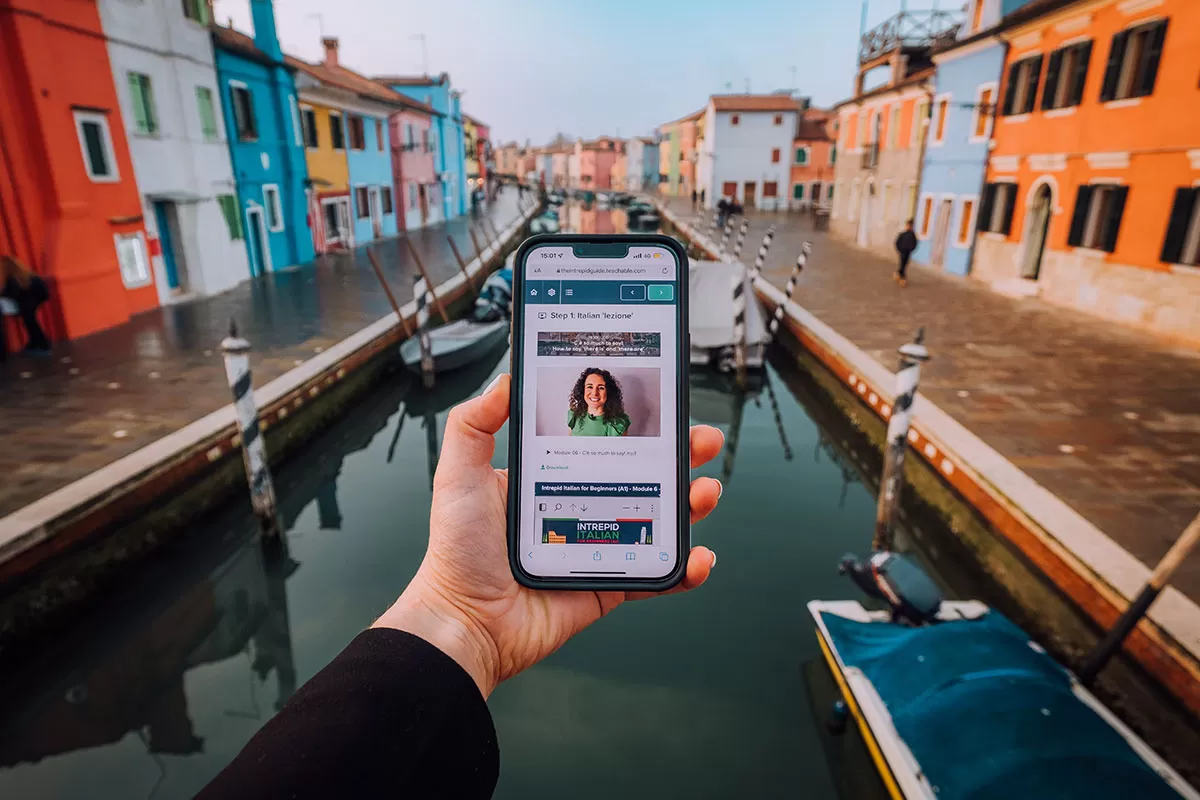
Don’t miss these Italy travel guides
- 33 Italy Travel Tips That Will Save You Time, Money and Disappointment
- Best Time to Visit Italy // PLUS Tips to Avoid Crowds and SAVE $$$
- Where to Stay in Rome | Best Hotels and Best Neighborhoods to Stay in Rome
- 29 Amazing Day Trips from Rome By Train, Car & Guided Tour
- 21 Unique Things to Do in Venice You Should Try at Least Once
- Rome Tips and Tricks: 27 Things You Should Know Before You Go to Rome
- Top 10 Things to Do in Rome That Aren’t On Your List
- Top 10 Absolute Best Views of Rome That Will Blow Your Mind
- Domus Aurea: Visit Rome’s Secret Hidden Palace
- 36 Wonderful Things to do in Umbria, Italy (PLUS Map of Umbria)
- Self-Guided Trastevere Walking Tour: Where to See Rome’s Most Beautiful Streets
- Absolute Best Things to do in Verona, Italy | 26 Must-See Attractions
- Top 7 Authentic Tours and Experiences in Rome [Run by Locals]
- Lakes, Mountains & Castles: 21 Best Things to do in Trento, Italy
- Where to Stay in Verona: Best Hotels in Verona Neighbourhoods
- Where to Stay in Venice | Best Hotels in Venice for Every Budget
- 27 Best Things to Do in Trieste, Italy (PLUS Map, BEST Tours & Day Trips)
Like it? Pin it for later!
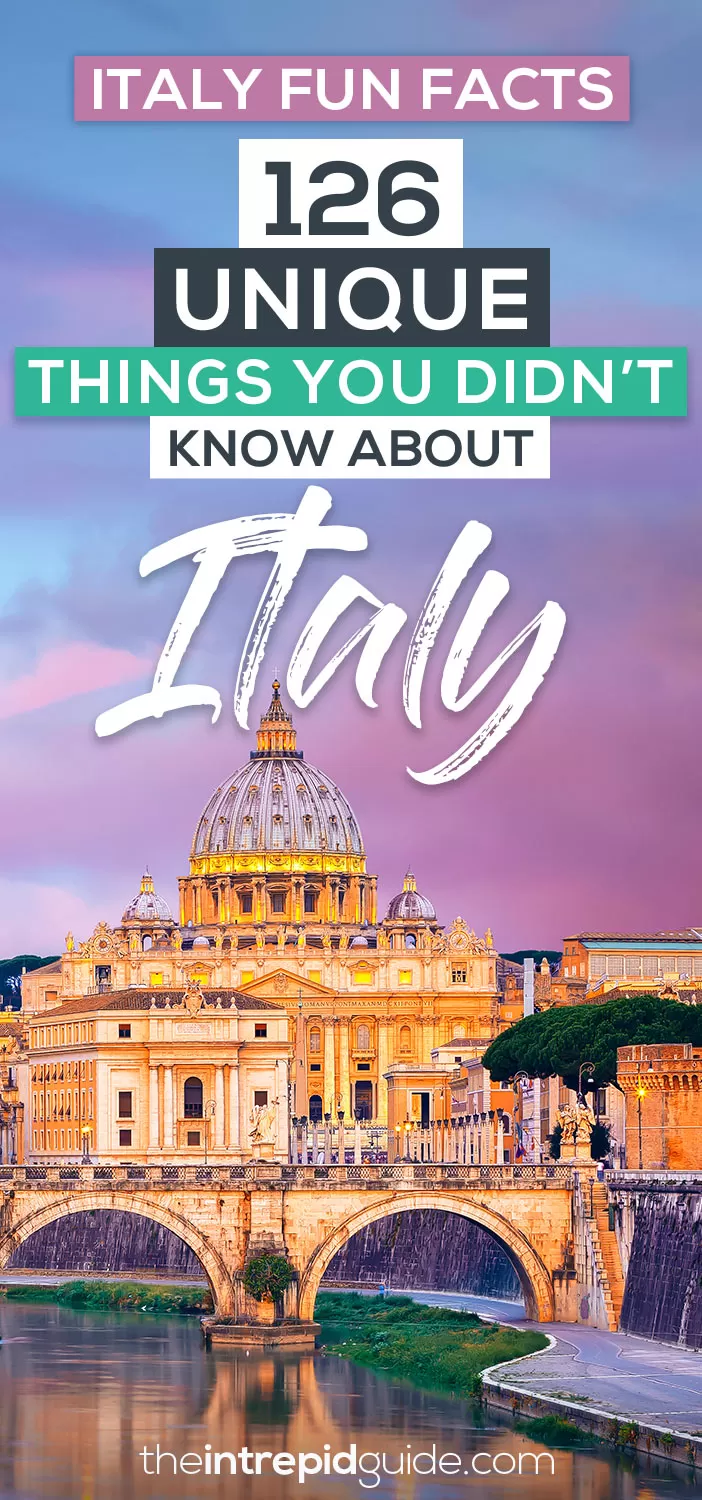
Over to you!
Which of these facts about Italy surprised you the most? What else would you add to this list? Let me know using the comments section below or join me on social media to start a conversation.
Thanks for reading and I hope you enjoyed this post.
Like what you see? Subscribe using the form below to have all of my posts delivered directly to your email.
Michele creates language learning guides and courses for travel. What separates her from other instructors is her ability to explain complex grammar in a no-nonsense, straightforward manner using her unique 80/20 method. Get her free guide 9 reasons you’re not fluent…YET & how to fix it! Planning a trip? Learn the local language with her 80/20 method for less than the cost of eating at a tourist trap restaurant Start learning today!
300+ Basic Russian Words You NEED to Know Before Travelling to Russia
25 tips for procrastinators: how to stay motivated to learn a language, leave a comment cancel reply.
Save my name, email, and website in this browser for the next time I comment.
This site uses Akismet to reduce spam. Learn how your comment data is processed .
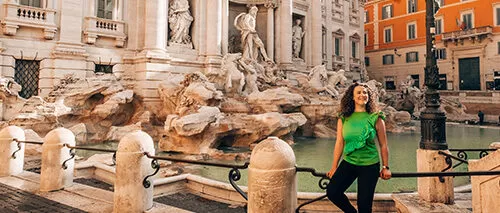
If you don't know where you are , how do you know where you're going? Find out how well you know Italian grammar today!

- Business travel
- Italian food
- Train world
- Travel ideas
- Buy your tickes
- Destinations & Timetable
- Italo Go Services
- Travel with Italo
- Loyalty Programme
Italoblog » Travel ideas » Fun Facts About Italy You Didn’t Know
Fun Facts About Italy You Didn’t Know
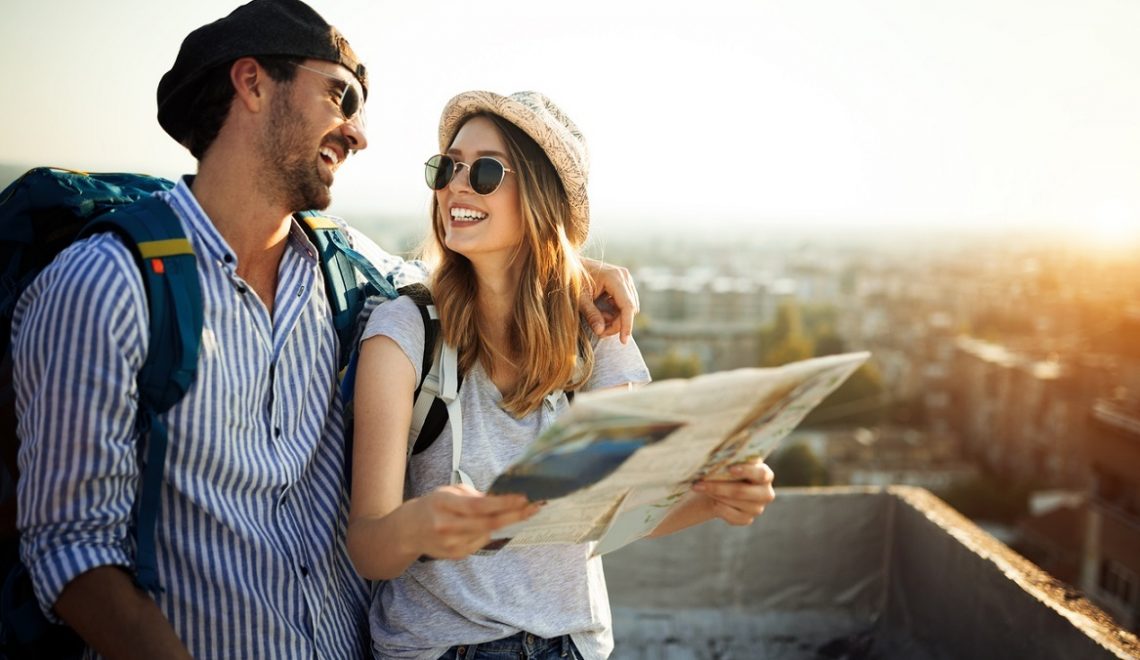
Dive into ItaloBlog’s intriguing list of 20 fun facts about Italy – from its record number of UNESCO sites to the invention of pizza. Fun Facts About Italy You Didn’t Know
Each of these points not only reflects the unique aspects of Italian culture and geography, but also underscores Italy’s significant impact on world history and modern life . From its ancient ruins that whisper tales of a bygone era, to its modern achievements in art, science and cuisine, Italy continues to fascinate and inspire.
- Italy is home to the most UNESCO World Heritage Sites in the world, with a whopping 58!
- There are three active volcanoes in Italy: Mount Etna, Mount Vesuvius, and Stromboli
- The leaning Tower of Pisa is not the only leaning tower in Italy.
- Italy is shaped like a boot!
- The Trevi Fountain in Rome is said to grant wishes if you throw a coin into it
- Italy has the oldest university in continuous operation in the Western world.
- Spaghetti is Not Actually the Most Popular Pasta Dish in Italy
- The Average Italian Consumes 25 Kilograms of Pasta a Year
- Why is Rome’s Nickname “The Eternal City”?
- Rome Was Founded in 753 B.C.
- Today’s Modern Italian Language Originated in the Region of Tuscany
- In Italy, 31 Languages are Spoken, Including Italian and Various Dialects
- Italy Has More Hotel Rooms Than Any Other Nation in Europe
- Italy is Slightly Larger Than Arizona
- The Average Italian Consumes 26 Gallons of Wine a Year
- The Area Around Venice is the Wealthiest Region in Europe
- Over 75% of Italy is Mountainous or Hilly
- Italy Did Not Become a United Country Until 1861
- Italy is Home to Two of the World’s Smallest States: San Marino and Vatican City (A Country Within a City)
- Italians Invented Pizza!
20 Fascinating Facts About Italy
1. italy is home to the most unesco world heritage sites in the world, with a whopping 58.
Italy’s wealth of cultural and natural treasures is unrivaled, making it a veritable open-air museum. From the historic centers of Rome, Florence and Venice , to the archaeological sites of Pompeii and Herculaneum , Italy’s UNESCO-listed sites span the length and breadth of the country, offering a unique glimpse into the past.
Travel to and from Pompeii with Italo’s high speed trains
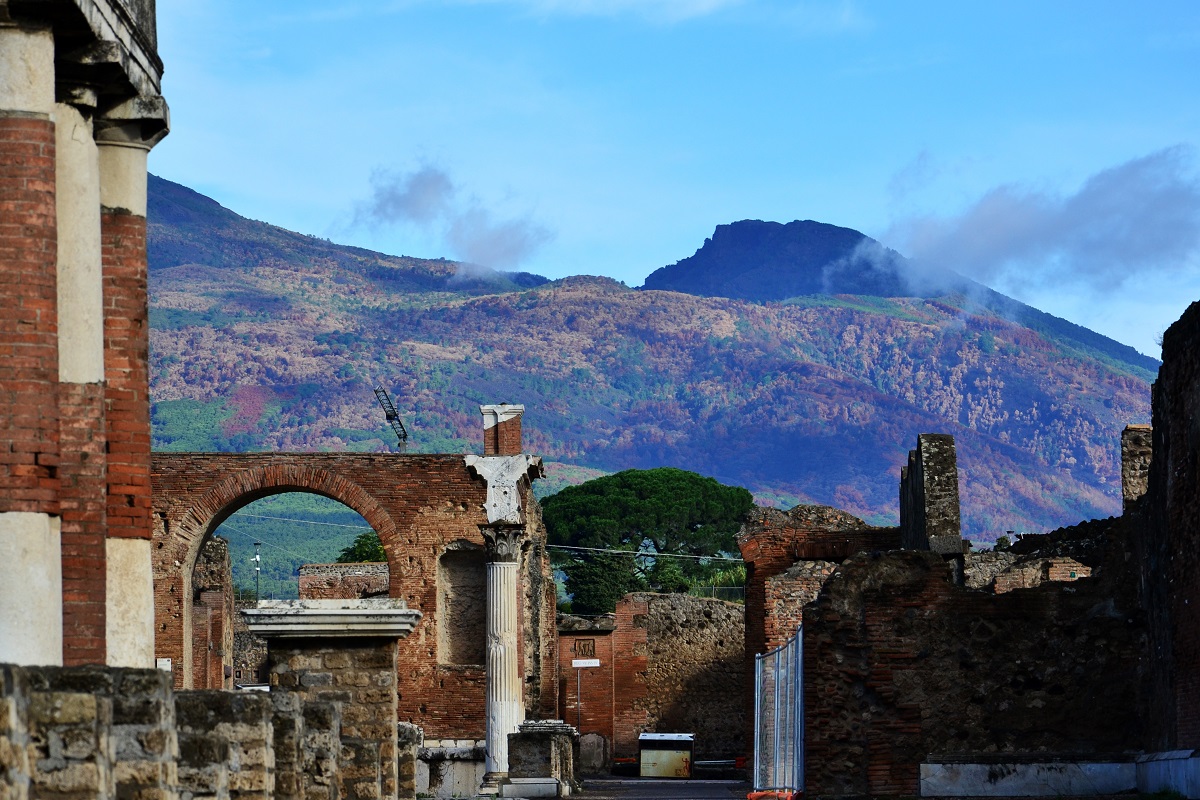
@ Per cortese concessione del Parco Archeologico di Pompei
2. There Are Three Active Volcanoes in Italy: Mount Etna, Mount Vesuvius and Stromboli
Italy’s geological dynamism is embodied in its three active volcanoes, each with its own distinct personality: Etna, Europe’s tallest and most active volcano , Stromboli, known as the “Lighthouse of the Mediterranean,” and Vesuvius, infamous for the destruction of Pompeii, remind us of nature’s power and beauty.
Italy’s Volcanic Landscapes: A Guide to Etna, Vesuvius, and More
Visit the beauties of Campania with Italo
3. the leaning tower of pisa is not the only leaning tower in italy.
While the Leaning Tower of Pisa is the most famous, Italy hides other lesser-known but equally charming leaning towers, such as the bell tower in Bologna and the church tower in Venice. These architectural quirks add to the country’s charm.
High speed train tickets From Bologna to Venice and from Venice to Bologna
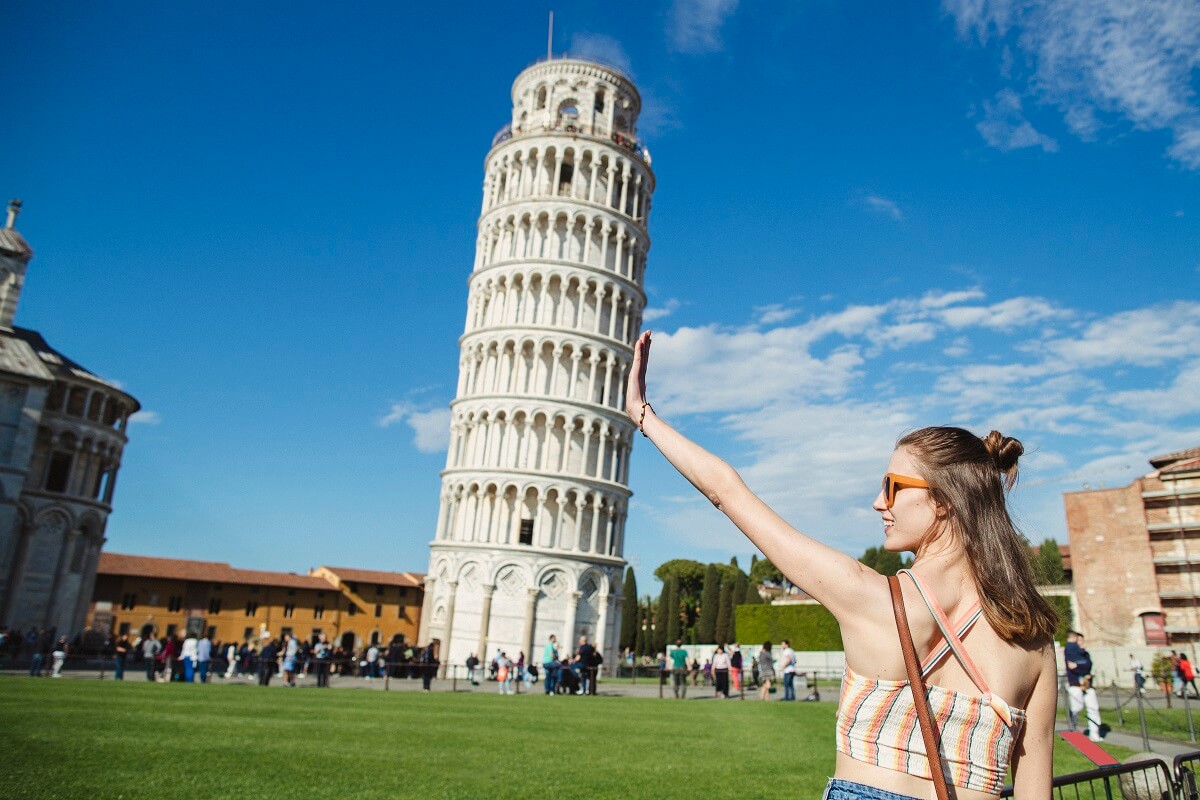
4. Italy Is Shaped Like a Boot!
Italy’s distinctive boot-shaped peninsula has been a point of reference for travelers and locals alike. This unique geography has contributed to Italy’s diverse culture, cuisine and dialects, making every region a world unto itself.
Italy Bucket List: What to Do and Not to Do
5. The Trevi Fountain in Rome is Said to Grant Wishes if You Throw a Coin Into It
The tradition of tossing a coin into the Trevi Fountain , ensuring a return to Rome, is a testament to the city’s lasting allure. This baroque masterpiece not only captivates visitors with its beauty, but also supports charitable causes with the coins collected.
Travel to and from Rome with special offers
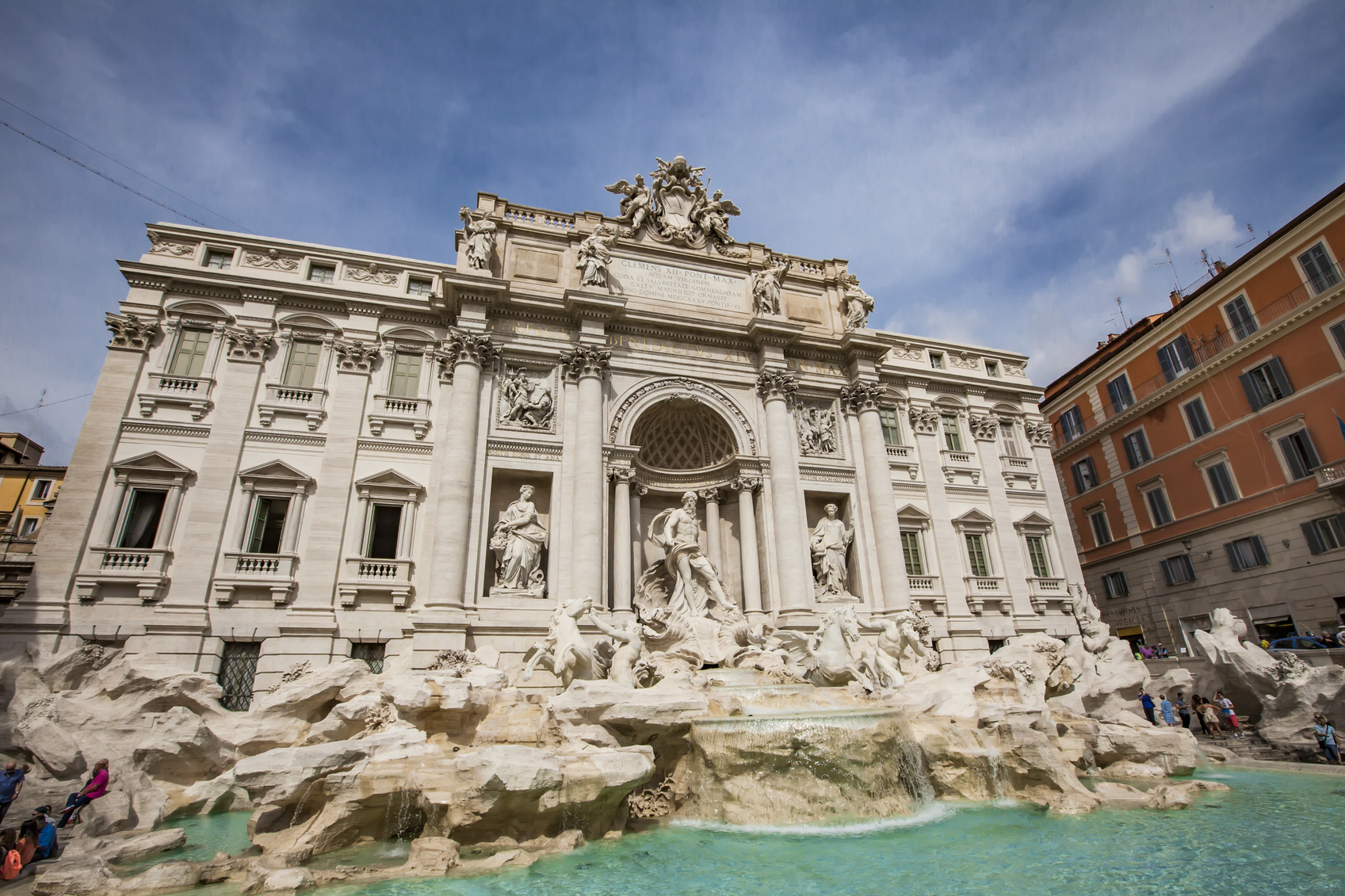
6. Italy Has the Oldest University in Continuous Operation in the Western World
The University of Bologna , founded in 1088 , stands as a symbol of Italy’s enduring legacy in education, culture and innovation. It underscores Italy’s role in shaping Western thought and scholarship.
7. Spaghetti Is Not Actually the Most Popular Pasta Dish in Italy
Contrary to popular belief, Italians favor a variety of pasta dishes over spaghetti. Regional specialties, such as “tagliatelle al ragù” in Bologna and orecchiette with broccoli rabe in Puglia , showcase Italy’s culinary diversity.
8. The Average Italian Consumes 25 Kilograms of Pasta a Year
Pasta is undoubtedly a staple of Italian cuisine , with each region boasting its own signature pasta dish. This statistic underscores the deep-rooted love and tradition of pasta in Italian daily life.

9. Why Is Rome’s Nickname “The Eternal City”?
Rome’s moniker, “ The Eternal City ,” reflects its timeless beauty and the idea that Rome will always exist , a concept dating back to ancient Roman times. Its enduring monuments and archaeological sites captivate the imagination, connecting the past with the present.
10. Rome Was Founded in 753 B.C.
The founding of Rome marks the beginning of a saga that would shape Western civilization. Its rich history, embodied in its ancient ruins and architectural wonders, continues to fascinate and inspire.
11. Today’s Modern Italian Language Originated in the Region of Tuscany
The Italian language, as we know it today, was significantly influenced by the Tuscan dialect , thanks in part to the literary achievements of Dante Alighieri , Petrarch and Boccaccio. Their works contributed to the standardization of Italian, making Tuscany the cradle of the modern language.
Visit the beauties of Tuscany with Italo
12. in italy, 31 languages are spoken, including italian and various dialects.
Italy’s linguistic diversity is a testament to its complex history and cultural mosaic. Beyond standard Italian, a multitude of dialects and languages thrive , each telling its own story of Italy’s past and present.
13. Italy Has More Hotel Rooms Than Any Other Nation in Europe
Reflecting its popularity as a tourist destination, Italy boasts the highest number of hotel rooms in Europe . This accommodation diversity caters to every traveler’s needs, from luxury hotels in cosmopolitan cities to cozy B&Bs in the countryside.
How to Plan a Trip to Italy: Tips for Traveling to Italy

14. Italy Is Slightly Larger Than Arizona
Despite its relatively small size, Italy’s influence on art , culture and cuisine is monumental. Its compact geography is packed with attractions, making it an endlessly discoverable destination.
The United States is 31 times the size of Italy! This is one reason why getting around by high speed train is much more convenient in Italy than by plane.

15. The Average Italian Consumes 26 Gallons of Wine a Year
Italy’s passion for wine is well-documented, with its vast vineyards producing some of the world’s finest wines. This statistic not only highlights Italians’ love for wine, but also the importance of wine in Italian culture and dining.
16. The Area Around Venice Is the Wealthiest Region in Europe
The Veneto region , with Venice at its heart, is not only rich in history and culture, but also in economic prosperity . It is a hub of industry, commerce and innovation, reflecting Italy’s diverse economic landscape.
Visit the beauties of Veneto with Italo
17. over 75% of italy is mountainous or hilly.
Italy’s varied topography, from the Alps and Dolomites in the North to the Apennines stretching the length of the peninsula, offers breathtaking landscapes and a variety of outdoor activities , making it a paradise for nature lovers and adventurers alike.
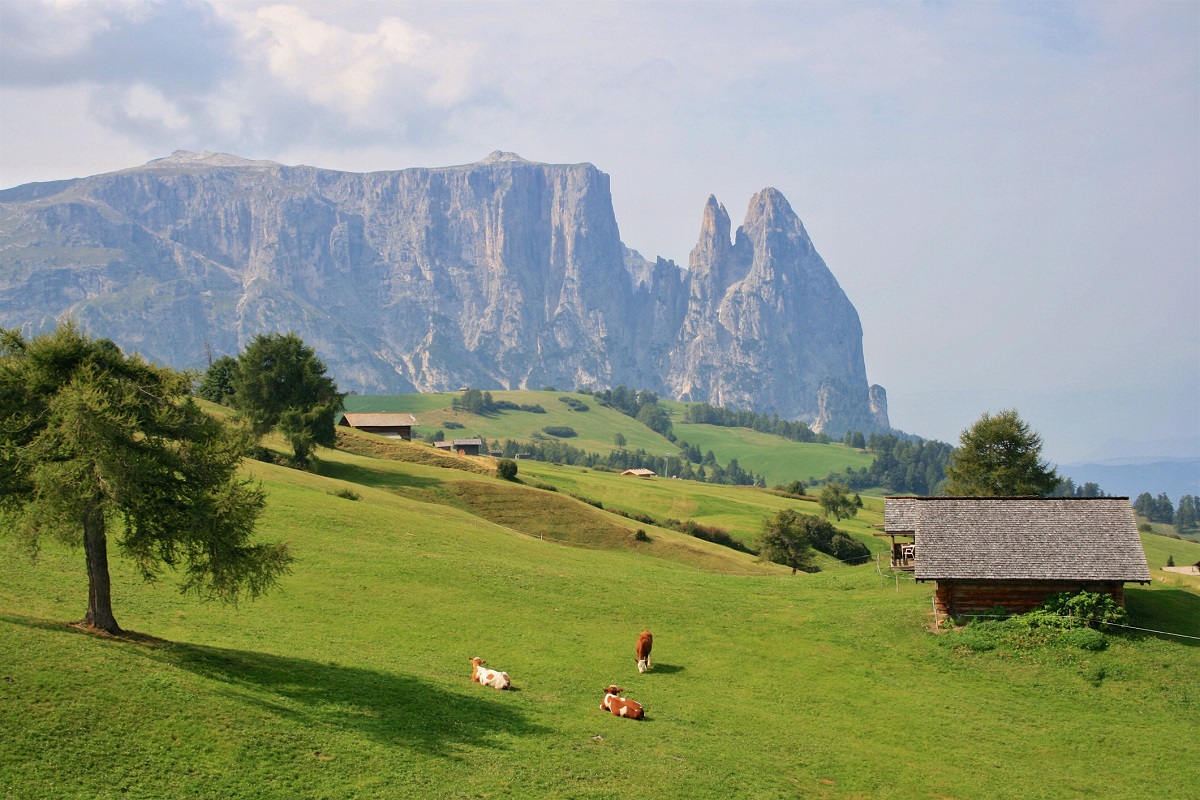
18. Italy Did Not Become a United Country Until 1861
Italy’s unification was a complex and tumultuous process, culminating in the establishment of a unified kingdom. This relatively recent unification has contributed to the strong regional identities and traditions that characterize Italy today.
19. Italy Is Home to Two of the World’s Smallest States: San Marino and Vatican City (A Country Within a City)
Nestled within Italy’s borders are San Marino and Vatican City , each with its own unique identity and governance . These enclaves offer a glimpse into Italy’s rich tapestry of history and culture.
Visit the beauties of Lazio with Italo
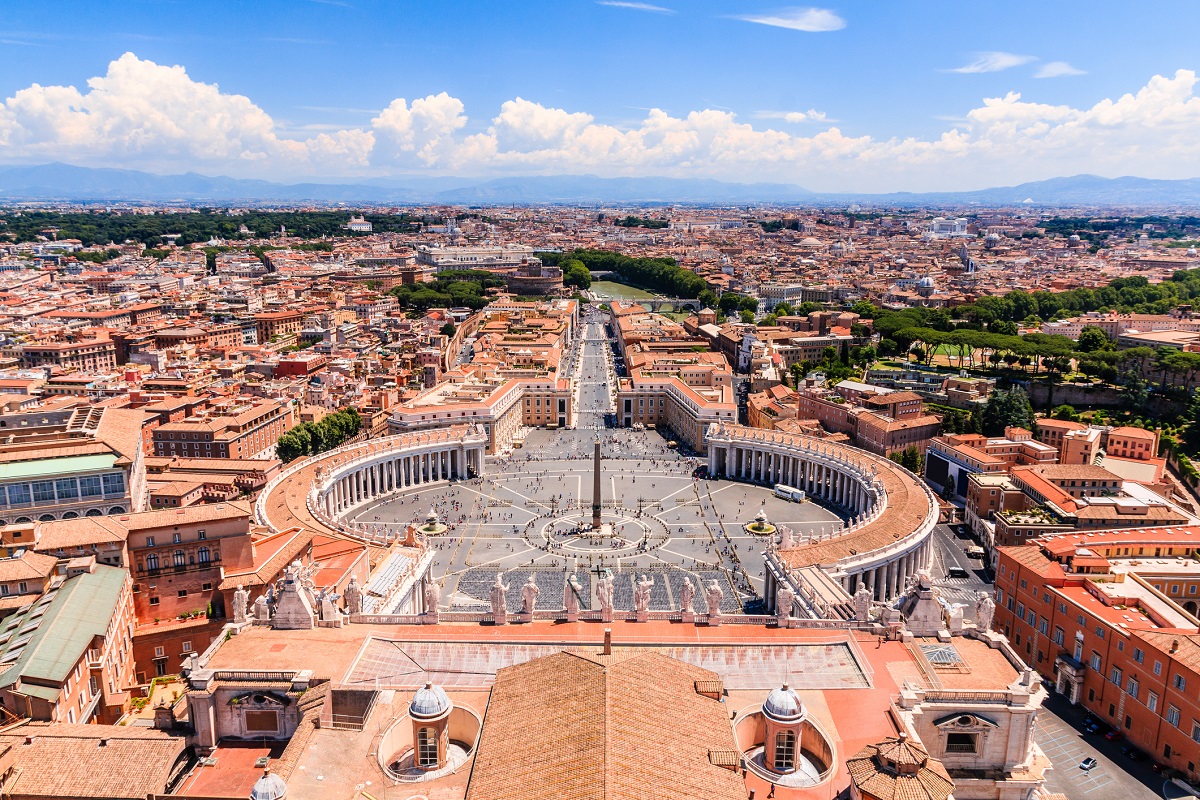
20. Italians Invented Pizza!
The invention of pizza, one of Italy’s greatest gifts to the world, embodies the simplicity and ingenuity of Italian cuisine. Originating from Naples , pizza has become a global phenomenon, yet nothing beats the original.
Reach the wonders of Naples with Italo’s high speed trains
You may also be interested in.
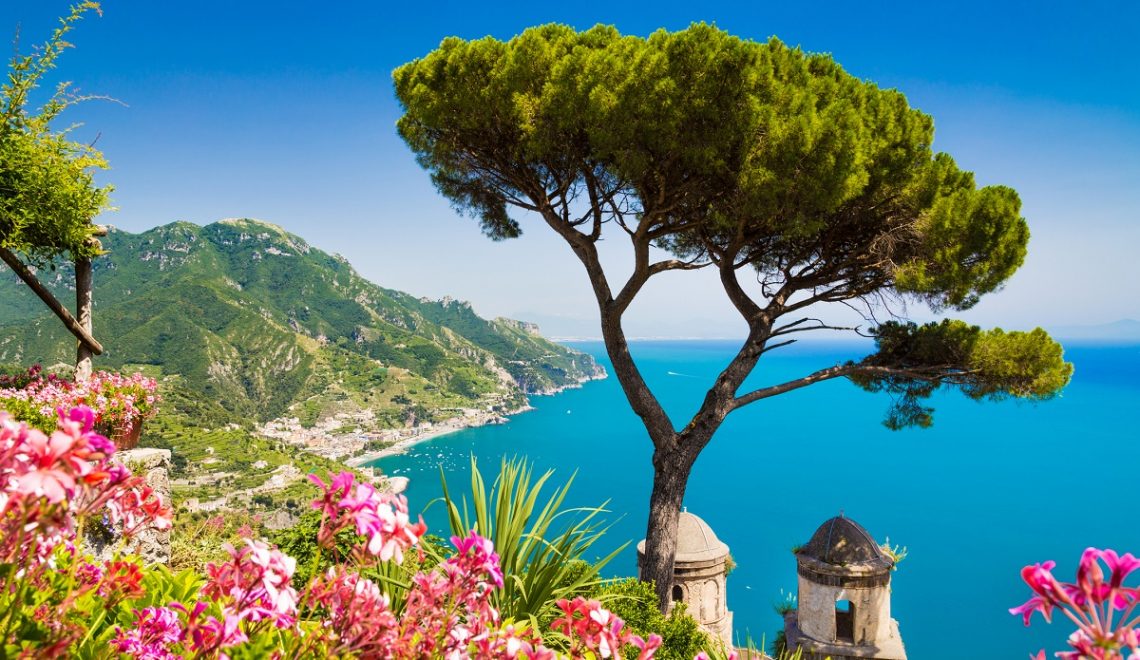
Italo Newsletter
Discount codes and promotions, other posts.
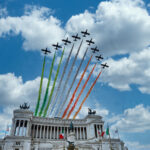
Discover our guides
- Where to eat in Rome
- Where to eat in Milan
- Where to eat in Naples
- Where to eat in Venice
- Where to eat in Bologna
- Best brunches in Italy
- Traveling with pets
- Best itineraries in Italy
- By train to the sea
- By train to the mountains
- Nature Trails
- Train stations in Italy
Our stations
Privacy overview.
Italy Travel Guide
Book your individual trip , stress-free with local travel experts
Select Month
- roughguides.com
- Travel guide
- Itineraries
- Travel Ideas
- Local Experts
- Related Articles
- Travel Advice
- Accommodation
Plan your tailor-made trip with a local expert
Book securely with money-back guarantee
Travel stress-free with local assistance and 24/7 support
Rakesh, USA
It was my first time using rough guides and it will not be my last. From the first time I connected with the team it had been great. They were easy to comm...
Chances are, once you’ve experienced the joys of travelling in Italy, you might never want to visit anywhere else. Its cultural legacy is awe-inspiring, with remnants of the Roman Empire manifest at (pretty much) every turn. Then there’s the diverse landscapes, and the fabulous food - all underpinned by an unmistakeable character of living life to the full.
Travel Facts about Italy
Where to go in italy - regions and areas, top attractions - what to see in italy, best things to do in italy, when is the best time to visit italy.
- How to get to Italy
How to get around Italy
Where to stay in italy, food in italy you need to try, culture and festivals in italy, nightlife in italy, plan your trip to italy, things you need to know before going to italy, typical cost and money saving tips for italy, what to pack for a trip to italy, is italy safe for travel, what you should avoid in italy, useful resources for your travel to italy, travel ideas for italy, created by local experts.

Experience the hit TV show 'The White Lotus' in Sicily
Stay in beautiful Taormina with gorgeous views of Mount Etna and discover Sicily, including famous filming locations. Go on exclusive wine tastings, discover the Greek theater in Taormina with a private guide, visit other Sicilian towns and enjoy the crystal clear water on this week-long trip.

Enchanting Italian Lakes
Experience the picturesque lakes of Northern Italy, including Lake Garda, Como, Lugano and Maggiore; explore the charming Borromean Islands – former favourites of Ernest Hemingway – and stroll the romantic streets of Verona and Milan. All of this, and much more, with this self-drive trip!

From Venice to Florence: A Grand Tour of Northern Italy
From the atmospheric canals of Venice and the picturesque coastline of Cinque Terre, to the trendy designer boutiques of Milan and the Renaissance-infused streets of Florence, Northern Italy has plenty to offer. Experience it all with this comprehensive trip.
_listing_1475755133743.jpeg)
Florence: A Trip Back In Time
Florence. A mere mention of the name conjures up grand images of Renaissance romance, awe-inspiring art and astonishing architecture. Come and see for yourself.

Eternal Rome for the Weekend
Welcome to this whirlwind tour of Rome, also known as the Eternal City. Rome is one of the most photogenic cities on earth, so make sure you pack your camera.

Wine and food in Tuscany
Stay at a beautiful hotel in San Gimignano, a medieval hill town half way between Florence and Siena. Tuscany is known for its wines and food and that's what you'll be exploring on this itinerary - several wine and food pairings await. All hand-picked by your local travel specialist.
All the information here is from The Rough Guide to Italy , our in-depth Italy travel guide - check it out for your all your Italy travel needs.
- Language: Italian, with a whopping 34 dialects.
- Population: just under 60 million, with around three million residing in Rome, the capital.
- Politics: Italy has been a democratic republic since 1946, when the monarchy was abolished by popular referendum.
- Heritage: Italy is home to a staggering 55 UNESCO World Heritage sites, 50 cultural and five natural. Tuscany alone has more classified historical monuments than any other country in the world.
- Food and drink: the average Italian eats 23 kilos of pasta annually, and the nation drinks an astounding 14 billion cups of coffee every year.
For more Italy travel tips, read our facts about travelling in Italy article .
Every trip to Italy is unique and that's why it's essential to stay protected. With our go-to travel insurance provider, Heymondo , you get great value and 24/7 support wherever you are.
Figuring out where to go when you visit Italy is no mean feat. From ancient hilltop towns to modern bustling cities, dramatic mountain landscapes to sweeping coastal scenery, each pocket of Italy delivers something different.
Rome , Italy’s capital, is the one city in the country that owes allegiance neither to the north or the south. It’s quite unlike any other city, and in terms of historic sights it outstrips everywhere else by some way.
Rough Guides tip: Explore our detailed guide on how to get around Rome to feel more confident during your Rome holidays.

Rome from above aerial view of the Roman Forum and the Colosseum © Calin Stan/Shutterstock
Piemonte and Lombardy
The northwest regions of Piemonte and Lombardy make up the country’s most cosmopolitan region, and the two main centres, Turin and Milan , are its wealthiest cities. In the north, the presence of the Alps makes skiing and hiking prime activities, while Lombardy’s lakes and mountains are time-honoured tourist territory.
Liguria , the small coastal province to the south, has long been known as the “Italian Riviera” and is accordingly crowded with sun-seekers for much of the summer. Its capital, Genoa , is a vibrant port town with a long seafaring tradition.
The Veneto and Friuli Giulia
The Dolomites stretch into the northeastern regions of the Veneto and Friuli-Venezia Giulia , but the main focus here is Venice . This unique city is every bit as beautiful as its reputation suggests.
Emilia-Romagna
Emilia-Romagna ’s coast is popular among Italians, and Rimini is Italy’s brashest (and trendiest) seaside resort. Then there’s the ancient centres of Ravenna , Ferrara , Parma and regional capital, Bologna , one of Italy’s liveliest cities, and traditionally its gastronomic and academic capital.
Central Italy represents perhaps the most commonly perceived image of the country. Tuscany , with its classic rolling countryside and the art-packed towns of Florence , Pisa and Siena , is one of Italy’s most visited regions.
Neighbouring Umbria is similar in all but its tourist numbers, though it gets busier every year, as visitors flock to towns like Perugia and Assisi .
Campania ’s capital, Naples , is a unique, unforgettable city, the spiritual heart of the Italian south, and close to some of Italy’s finest ancient sites in Pompeii and Herculaneum, not to mention the country’s most spectacular stretch of coast around Amalfi.
Puglia , the “heel” of Italy, has underrated pleasures, notably the landscape of its Gargano peninsula, the souk-like qualities of its capital, Bari , and the Baroque glories of Lecce in the far south.
The island of Sicily is a place apart, with a wide mixture of attractions ranging from some of the finest preserved Hellenistic treasures in Europe, to a couple of Italy’s most appealing beach resorts in Taormina and Cefalu, not to mention some gorgeous upland scenery.

The stage of Taormina's Greek Theater with the Etna in the background, Taormina, Sicily © K. Roy Zerloch/Shutterstock
Sardinia feels far removed from the mainland, especially in its relatively undiscovered interior, although you may be content just to laze on its beaches, which are among Italy’s best.
Discover more places in Italy

- Friuli-Venezia Giulia Travel Guide
- Le Marche Travel Guide
- Liguria Travel Guide
- Lombardy and the Lakes Travel Guide
- Piemonte and Valle d’Aosta Travel Guide
- Puglia, Italy
- Rome Travel Guide
- Sardinia, Italy: What To Do, Weather & More
- Sicily Travel Guide
- Trentino-Alto Adige Travel Guide
- Tuscany, Italy
- Umbria Travel Guide
- The Veneto Travel Guide
- Venice Travel Guide
Picking landmarks and attractions in Italy everyone should see in a lifetime is a nigh impossible task, but we’ve taken a stab at selecting some of the best places to travel in Italy; sights that will enhance every Italy trip experience.
- The Colosseum is perhaps Rome’s most awe-inspiring ancient monument, an enormous structure that despite the depredations of nearly two thousand years of earthquakes, fires, riots and wars, remains relatively intact.
- Venice’s magnificent Piazza San Marco houses the Basilica di San Marco, Italy’s most lavish cathedral.
- Hemmed in by lush hillsides and dramatic mountains, Lake Como’s captivating landscape is best enjoyed by zigzagging between shores by boat.
- When in Florence , it’s impossible not to gravitate straight towards the square at its hears, Piazza del Duomo, beckoned by the iconic form of the cathedral’s extraordinary dome.
- Romain remains at Pompeii and Herculaneum - these two sites, buried by the volcanic debris of Vesuvius in AD 79, afford an unparalleled glimpse into ancient Roman daily life and architecture.
- The Amalfi coast - this rugged stretch of coastline has to rank as one of Italy’s most breath-taking routes. Secluded coves and picturesque towns punctuate the scenic journey.
Discover more great places to see in our ultimate list of things not to miss in Italy .

Grand Canal, Venice, Italy © Apple Kullathida/Shutterstock
History and culture
Rome alone has enough historic attractions to warrant dozens of visits (and that’s no exaggeration). Discover more about the Eternal City’s ravishing ruins and architectural treasures, from the Colosseum and the Roman Forum , to the Spanish Steps and the Vatican .
Florence is an exquisite city of exquisite art, the jewel in its elegant crown Italy’s finest art gallery, the Uffizi, home to Botticelli’s “The Birth of Venus” and Caravaggio’s “Medusa”, to name but a few of its masterworks. Though meandering Venice’s winding alleys and canals feels like you’re exploring a museum (such is the city’s beauty and uniquely curated vibe), the Accademia museum is an absolute must-visit for art-lovers.
Water-sports
The extensive Italian coast offers plenty of opportunities for sailing and windsurfing. Scuba diving is popular in Sicily and off most of the smaller islands. Water-sports aren’t just restricted to the coast - they can be found in places such as lakes Como and Garda in the north, and Trasimeno and Bolsena further south towards Rome, while river canoeing, canyoning and rafting are popular in the mountain areas of the north of the country. Discover more about sports and outdoor pursuits - our Italy guide to all things active.
Of course, Italy’s coast isn’t all about high energy pursuits. Its beaches are stunning places to soak up the sun; people watch and pose; eat, drink and generally be very merry. Discover the best beaches in Italy , spanning secluded coves, lively seafronts, and dramatic cliff-backed harbours.
Skiing and snowboarding
With the Alps on the doorstep, it’s easy to spend a weekend skiing or snowboarding from Milan, Turin or Venice. Some of the most popular ski resorts are Sestriere and Bardonecchia in Piemonte, and Val di Fassa in the stunning Dolomite mountains. Find out about the best winter resorts for skiing .
Hiking and biking
All these mountain resorts are equally ideal as bases for summer hiking and climbing. The dramatic, spiky landscape of the Dolomites , for example, is perfect hiking country, with its trails often subject to snow, ice and scorching sun in the same day - this is Italy travel at its most epic. For less strenuous treks, the rolling hills of Tuscany and Umbria make perfect walking and mountain-bike country - consider booking a tour in the company of an Italy travel guide who has local hiking or biking know-how.

Varenna old town in Como lake © Boris Stroujko/Shutterstock
Italy is a truly year-round destination, so the answer to the question “what’s the best month to go to Italy?” will depend on what you want from your Italy travel experience.
Generally speaking, though, the best time to travel to Italy is spring ( April , May and June ) or autumn ( September and October ). emperatures are warm and you’ll skirt the stifling heat of the summer months - top Italy travel advice if you want to avoid the crowds, too.
Visiting Italy in November , December , January , February and March is doable, but keep in mind that it can be cold. Especially in the north.
Find out more about the best time to visit Italy .
The best way to travel to Italy is to fly. Regular direct flights serve most of Italy from the UK, and you can fly direct from various cities in the US to Rome and Milan. Alternatively, if you travel to Italy by train, you’ll limit your carbon footprint and get to see incredible scenery too. An Interrail (European residents) or Eurail pass (non-European residents) is good value if you plan to make stops en route.
Read on for the best ways to get to Italy .
If you’re wondering how to travel around Italy, the extensive rail system is inexpensive, pretty reliable and quick, apart from regional trains, which tend to be slow and don’t necessarily extend to everywhere you might want to go, though regional buses cover the corners the trains don’t reach. For trips to the islands, you can hop on a ferry or hydrofoil, and the northern lakes region operates frequent ferries outside the winter months.
Learn more about transportation and how to get around Italy .
When you visit Italy, an immeasurable variety of accommodation awaits - boutique hotels, youth hostels, self-catering villas, family-run B&Bs, rural farmhouses, mountain monasteries. While rarely particularly cheap, standards are reliable and accommodation is well regulated. Bear in mind, though, that while accommodation is plentiful, you’ll need to book ahead to bag your ideal bunk down spot in popular resorts and major cities.
Discover how to find the best accommodations in Italy .
One of the joys of travel to Italy is sampling the variety of quality food and drink. Italian cuisine is region specific - the northwest brings a French influence, with its rich butter and cream sauces, while Umbria specialises in salamis, hams, and black truffles, and the southern diet features Mediterranean vegetables. Naples is considered to be the home of the humble pizza, all along the coast seafood dominates, and pasta is prevalent pretty much everywhere. When it comes to drink, Italians take their coffee seriously, and Italian wine is world-renowned, with Tuscany producing classic Chianti, and Veneto’s Prosecco an effervescent delight.
Read more about local food and drink in Italy .

Florence cityscape © Bob Hilscher/Shutterstock
If you travel to Italy, chances are you’ll come across a festival of one kind or another. The Italians love a party, and there are thousands of festivals throughout the year. Religious processions are widespread, Good Friday being particularly well celebrated, and carnival (the big party before the sobriety of Lent). Then there are traditional events, such as the Palio horse race in Siena , food festivals, often celebrating regional cuisine, as well as arts festivals, often taking place against a backdrop of Roman or medieval architecture.
Read more about public holidays in Italy .
The resort area of Rimini is arguably the clubbing capital of Italy, mainly concentrated on the seafront itself, and in the fashionable enclave of Misano Monte (15km south of Rimini and about 5km inland). Also home to legendary nightclubs, cosmopolitan fashion powerhouse Milan does things a little differently. Milanos like to start their evenings early, with an extended “Happy Hour” that begins around six with an aperitivo - a pre-dinner drink that typically lasts until 9pm.
Though not short of night clubs, Roman nightlife is more focussed on al fresco food-based activities. Bustling, bohemian Trastevere comes up trumps for hearty homecooked food and, while Naples lays claim to inventing it, Roman pizza is something to write home about.
The saying goes that Rome wasn’t built in a day, so you shouldn’t expect to see more than a fraction of the city’s attractions in a short visit. That said, if you’re looking for ideas for a few days in Italy, a (preferably long) weekend in Rome will deliver in magnificent style. The same goes for city breaks in Venice, Florence and Milan, and lesser-visited Bologna and Genoa.
As for ideas for a week (or more) in Italy, you might consider touring the Italian Lakes , or soaking up southern Italy , taking in Naples, Pompeii, Vesuvius, the island of Capri , and Sorrento and the Amalfi Coast. Alternatively, exploring the island of Sicily makes for an idyllic longer break.
For more inspiration see some of the Italy itineraries from our Italy travel guide and local travel experts.
- Dining do’s and don’ts - always wish your table mates “Buon appetito!” before eating, never start to eat until everyone is seated, and always serve others before yourself.
- Be mindful that tucking into takeaway treats on the move isn’t always welcome (or legal). Florence, for example, has banned eating on the streets around All’ Antico Vinaio, on account of the mess incurred by the popularity of the areas’s takeaway eateries.
- Be respectful (quiet, and observe any rules around photography) when visiting churches and other religious sites.
- Say “Permesso” when you need to pass someone on the street, as you’d say “excuse me” in English.

Positano, italy. Amalfi Coast © iacomino FRiMAGES/Shutterstock
Practical travel tips for Italy
From travel safety to visa requirements, discover the best tips for traveling to Italy
- Eating and drinking in Italy
- Getting around Italy: Transportation Tips
- Shopping tips for Italy
- Sports and Outdoor activities in Italy
- Travel Tips Italy for planning and on the go
- Best time to visit Italy
- How to spend 7 days In Italy - 8 unique itineraries
- The Best 10-Day Italy Travel Itinerary
- How To Spend 14 Days In Italy - 5 Unique Itineraries
- How to get from Rome to Florence
- Electricity - the supply is 220V, though anything requiring 240V will work, and plugs either have two or three round pins.
- Italy’s currency is the euro (Italians pronounce it “eh-uro”).
- Banks give the best exchange rate. Banking hours are normally Monday to Friday mornings from 8.30am until 1.30pm, and for an hour in the afternoon (usually 2.30–4pm).
- Most towns and villages have at least one ATM.
- Opening hours - most shops and businesses open Monday to Saturday from 8am until 1pm, and from about 4pm until 7pm, with additional closures on Saturday afternoons, though an increasing number remain open all day. Traditionally, everything except bars and restaurants closes on Sunday, though in large cities and tourist areas, Sunday shopping is more common.
For advice about practical matters when travelling in Italy, check the travel advice for Italy .
In general, you’ll find the south of Italy less expensive than the north. As a broad guide, expect to pay most in Venice, Milan, Florence and Bologna, less in Rome, while in Naples and Sicily prices drop quite a lot. As an indication, you should be able to survive on a budget of about €50–60 per day if you stay in a hostel, have lunchtime snacks and a cheap evening meal. If you stay in a mid-range hotel and eat out twice a day, you’ll spend closer to €130–140 per day. Transport and food are relatively inexpensive, and room rates are in line with much of the rest of Europe, but bear in mind that in July and August, when Italians take their holidays, hotel prices can escalate.
- Comfortable shoes - yes, even if you’re strutting around fashionable Milan. Exploring Italy on foot is fabulous fun, so you won’t want to be hindered by inappropriate footwear.
- That said, Italians are known for their style, so even if you’re setting off for a beach or adventure holiday, you’ll want to pack something smart for the evenings.
- Travelling from outside mainland Europe? Bring multi-plug adapter.
- While English is widely spoken, pack an Italian phrasebook . Attempting to speak little lingo is polite, plus it could come in handy in remote rural regions.
- Italian summers are hot, hot, hot - don’t forget the sunscreen.
Italy is relatively safe for visitors, though you can reduce the chance of petty theft by taking sensible precautions - don’t flash anything valuable, and make sure bags can’t be snatched. You’re most at risk in busy areas, where pickpockets and scippatori or “snatchers” on scooters are most likely to operate.
Read more on travel safety in Italy , and for up to date information about safety and travel requirements for Italy, check government guidelines. UK nationals should heed Foreign, Commonwealth & Development Office advice , while travellers from the US should check governmental travel advisory guidelines for Italy .

Statue of Apollo, Pompeii © BlackMac/Shutterstock
- Don’t sit down for a coffee if you’re going to down it in one - the cost of a coffee drunk at a table can be double that of drinking it at the counter.
- Don’t ask for a cappuccino as lunchtime approaches - in Italy, the frothy stuff is only supped with breakfast.
- Common sense this one, but steer clear of restaurants that try to usher folks inside. Italy has an abundance of excellent eateries - you don’t need to pay over the odds at joints that hustle for business.
- Avoid depending on debit and credit cards. Lots of gelateria, street food vendors and trinket stalls only take cash - you wouldn’t want to miss out on that ice cream of a lifetime by being beholden to cards.
- Check out The Rough Guide to Italy - our exhaustive, in-depth Italy travel guide that covers everything you need to know before you go, and while you’re on the road.
- You can pick up regional Rough Guides to Italy too, and city guides. Explore the full range .
- Our expert-curated (fully customisable) Italy itineraries are packed with inspiration.
- Given that enjoying Italy’s food, glorious, food is an essential Italy travel experience, taking a food tour is a great way to sample authentic cuisine, whether you’re in Rome , Naples , or Venice .
Top image: Amalfi coast, Italy © proslgn/Shutterstock
The Rough Guides to Italy and related travel guides
In-depth, easy-to-use travel guides filled with expert advice.

Find even more inspiration here

Planning your own trip? Prepare for your trip
Use Rough Guides' trusted partners for great rates
written by Rough Guides Editors
updated 06.06.2024
Ready to travel and discover Italy?
Get support from our local experts for stress-free planning & worry-free travels.
- Where to stay
- Travel advice

Italy Travel Guide
Your ultimate italy travel guide, with tips, ideas on things to do, and best things to see in italy. great for first-time and returning travelers..
Located in southern Europe, Italy is a Mediterranean country bordered by three seas (Adriatic, Tyrrhenian, and Ionian).
Known as the birthplace of Western culture, Italy is a stunning country affectionately referred to as the Bel Paese (the beautiful country) .
A country full of history and beauty, it is a must-see for travelers.
From Unesco World Heritage Sites like the ruined city of Pompeii to coastal beauties like the Amalfi Coast and Cinque Terre, Italy is a great place for those who want to experience something different.
Add in great Italian cuisine and it makes a perfect vacation.
Get inspired to visit Italy and plan your dream trip with our Italy travel guide .
Popular City Guides
Our highlight.
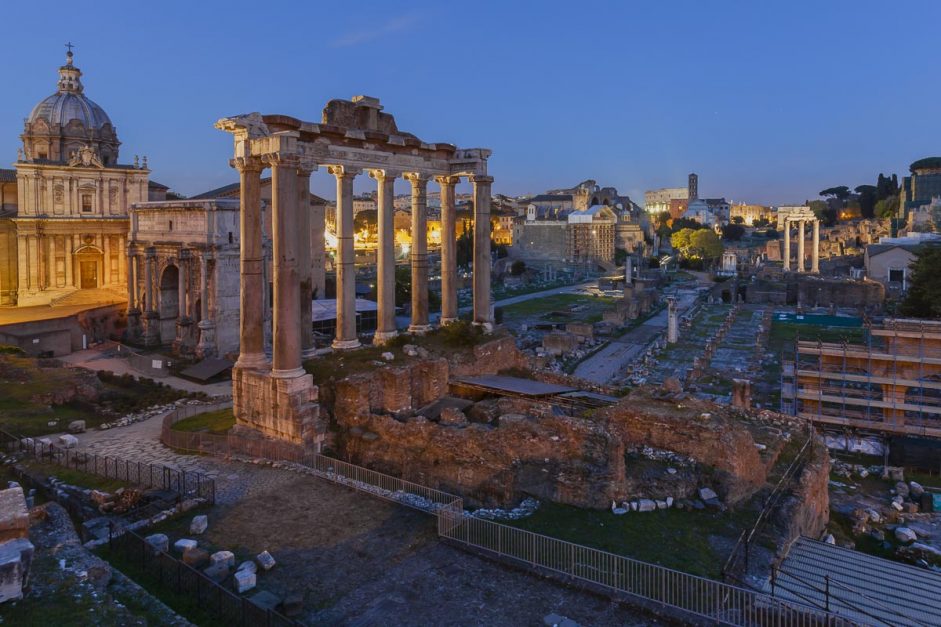
Table of Contents
Fast Facts About Italy
- Currency: The official currency is the euro and 1 euro is equal to 1.12 USD.
- Power: Power voltage is 220V at 50 Hz.
- Entry: To enter, you will need a U.S. passport valid for at least 6 months after your departure date.
- Getting Around : The best way to get around is by public transport or renting a car but beware, Italians are hairy drivers!
- Sales tax: The value-added rate (VAT) rate is 20%.
- Best Sim Cards: TIM, Vodafone, WindTre, and Iliad are the main mobile providers. A prepaid SIM card can be purchased through any of them.
- The Capital City of Italy is Rome – See the Best Things to do in Rome
Things to See and Do in Italy
- Off the Beaten Path – step outside of Rome and explore the many villages that surround Italy’s capital.
- Hike Mount Etna: Take your adventure to a new level by climbing Italy’s highest Volcano.
- Learn How to Make Traditional Balsamic Vinegar – sold for up to $100 US for 100 ml, learn all about the ins and outs of making this delicious Italian vinegar.
- Meet David on a Walking Tour of Florence – get introduced to the beauty of Florence and be catapulted to the front of the line to see the famous statue of Michelangelo’s David
- Visit the Leaning Tower of Pisa – Pisa may be crowded with tourists, but this is one sight you do not want to miss.
- Explore Romagna – not only is Romagna home to Pavarotti, Enzo Ferrari, Ferrucio Lamborghini but it is also the gastronomical capital of the country.
- Explore the Vatican Museums : When in Rome you can’t miss Vatican City and these museums. Even if you are not a history buff you will be blown away by the beauty of this part of Rome.
- Explore the Italian Riviera : From hiking the famous Cinque Terre trail to relaxing on Sestri Levante beach, this is what Italian luxury is like. A visit to the Italian riviera is a perfect way to spend a week in Italy.
Italy Travel Guides
- Best Things to do in Rome
- Best things to do in Venice
- Best Things to do in Florence
- The Best Things to do in Amalfi Coast
- 15 Reasons to visit Emilia Romagna
- Best Things to do in Bologna
Accommodation
Budget: You can find a number of budget hotels in Italy for around 30-40 euros per night. Enjoy free Wi-Fi and breakfast, private rooms, and great city locations.
Mid Range: For mid-range hotels, expect to pay between 50-80 euros per night. Enjoy private air-conditioned rooms, indoor and outdoor pools, a hotel restaurant and bar, and free Wi-Fi.
High End: Upscale hotels will range from 150-1,220 euros per night.
Take in the best with top-of-the-line hospitality, elegant rooms and suites, spa services, indoor and outdoor pools, multiple fine dining restaurants, fitness centers with personal trainers, private balconies, and more.
If you intend to visit Italy for food you won’t be disappointed.
Italian cuisine is famous for pasta, tomatoes, cheese, fish, and meat.
While many might think that spaghetti and meatballs are the traditional dish of Italy, this is not true, and in fact, is rarely eaten in Italy (except for tourist places).
The national dish is Ragu alla Bolognese Sauce (meat-based sauce served in tortellini, gnocchi, or tagliatelle pasta). Other favorites include pizza, lasagna, and bottarga (cured fish roe).
There are a number of restaurants where you can try authentic Italian cuisine, as well as cafes.
Try a cappuccino for about 1.34 euros (but remember, if you want to follow tradition, it is custom not to drink one after 10 or 11 AM).
In total, expect to pay about 10-20 euros per meal for most restaurants, or 50 euros per meal for three-course restaurants.
The Best Ways To Get Around Italy
Getting to Italy: The Leonardo de Vinci-Fiumicino Airport is one of the busiest airports to fly into and is 20 miles from the city center.
The Malpensa International Airport is great when going to Milan and is a 20-40 minute train ride to the city of Milan.
Transportation: Trains are a fast way to get around. You can find trains both for regional trips as well as between cities. High-velocity trains are a speedy and fairly inexpensive way to travel throughout Italy.
Go from Rome to Florence in 2 hours, for example, and pay just 25 euros.
Buses : Italy has a number of buses for shorter trips, as well as metro services in larger cities like Rome and Milan. Tickets start at 1-2 euros.
Make sure to purchase your tickets before boarding or you can get a fine up to 100 euros.
Taxis: Taxis are an alternative way to get around. You can hail one down or call for a taxi, though note that if you call, the meter starts running once you call.
A typical price for a taxi is about 15 euros, depending on the distance .
Car Rental : To rent a car, you must be at least 21 years old and have a U.S. license as well as an International Driver’s License. It is advised that you know the rules of the road before driving in Italy.
Prices start at around 55 euros per day. But you can find great deals for car rentals too so look around.
When to go to Italy
The best time to visit Italy is from April to June and September to October.
July and August are usually quite crowded, and hotel rates are at their peak, whereas spring and early autumn have lower prices and the temperatures are neither too hold or too cold for outdoor and sightseeing activities.
If you are spending most of your time in the north then I would definitley say the best time to visit would be during the fall and winter. You have fewer crowds but great mountain activities like skiing.
Where to Stay in Italy
Hotel Italia: A traveler favorite, stay at this great hotel in Rome. Just 9 minutes from multiple airports and minutes away from numerous attractions (including the famous Trevi Fountain), this is the place to stay.
Acca Palace : Stay at this four-star modern hotel in Milan. Sleep in private suites with a balcony and a minibar and enjoy amenities like room service, dry cleaning and laundry services, the hotel’s restaurant and bar, free high-speed Wi-Fi, and transportation to the airport.
San Gallo Palace—Florence: Just 30 minutes from the Florence airport and minutes from attractions like the Florence Cathedral and the Uffizi Gallery, this hotel puts you in the heart of everything.
Italy Accommodation Guides
- Where to Stay in Rome
- Where to Stay in Venice
- Where to Stay in Florence
- A Luxury Tuscan village
- 15 Best Italian Coastal Villages
What to Pack for Italy
Similar to many European countries, the climate of Italy is highly diverse depending on where you plan on traveling.
If you are spending your time on the Amalfi coast you will be packing differently than if you are up in the Italian Dolomites.
Considerable differences in temperatures between the north and south are more prominent during the winter months.
Winters are cold and damp in the north and milder in the South.
However, most of Italy has hot dry summers with July being the hottest month of the year.
- Toiletries – beauty items and toiletries can be expensive in Italy if you want to save some money than pack some extra in your bag.
- Blend in – Italians love to dress up, so why not pack some basic classic items that you can mix and match throughout your trip. Try to avoid baseball caps and white sneakers.
- Wedges – Italy is known for its cobblestone streets. If you want to pack a fancy pair of heels for a classy night out on the town than stick with wedges over stilettos. Wedges allow you to walk smoothly over the cobblestone.
- Layers – this is especially important for those traveling throughout Italy during the winter months. The general rule of thumb is to pack at least four layers: a base layer, long sleeve shirts, a fleece (mid-layer) and a top layer such as a windbreaker. Don’t forget a warm pair of gloves, a thick scarf, and a hat!
Italy Travel Guide: Best Booking Resources
Whenever we travel to Europe we make sure to start with these companies.
We have tried a lot of different ones over the years and all of these have consistently proven to be the best when it comes to offering great prices as well as great customer service.
We have used every one of these personally and continue to do so.
Booking.com : This is our go-to site when comparing prices for accommodation. It is usually and has the cheapest prices, especially in Europe and we love their interface. Not to mention you get free cancellation and you are guaranteed the best price.
Trip Advisor : What we like about Trip Advisor is that we can look at all the reviews and then book our accommodation. TripAdvisor is where we go when we want to compare prices with multiple accommodation providers.
Air BnB: Airbnb is the main search engine we use when we are looking for a home or apartment rental. It can sometimes be cheaper than hotels and it is the best way to stay in areas that offer a more local feel.
Hostelworld: With one of the largest databases of hostels in the world, Hostelworld is the go-to site when you are looking for budget accommodation.
Skyscanner: This is the first place we check for flights. It consistently comes back with the cheapest and best options. It allows us to compare a lot of airlines to get the best price.
Rome 2 Rio: If you want to see how to get somewhere by plane, train, bus, ferry, or car Rome2Rio lays it all out for you as well as related costs. I love how they show it all to you on a Google Map and it works offline.
Get Your Guide: For all your day trip and city guide needs, we use Get Your Guide. It has the world’s largest collection of things to do with more than 30,000 activities in 7500 destinations.
World Nomads Insurance: When traveling to Italy you should always have travel insurance. We have found the best bang for your buck is by far World Nomads.
Italy Travel Guide: Related Articles
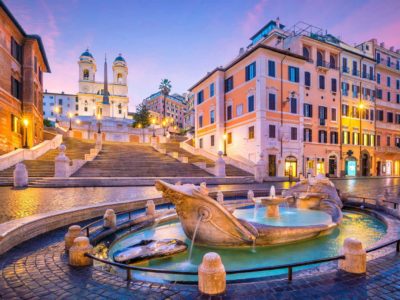
Where to Stay in Rome: Our Favourite Places And Neighbourhoods (2024)
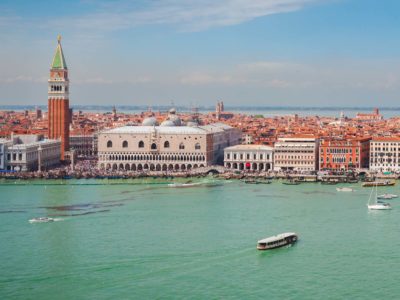
Where to Stay in Venice, Italy in 2024: 5 Best Areas for First-Time Visitors
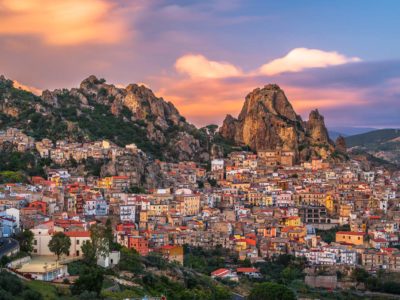
23 Best Things to Do In Sicily, Italy in 2024
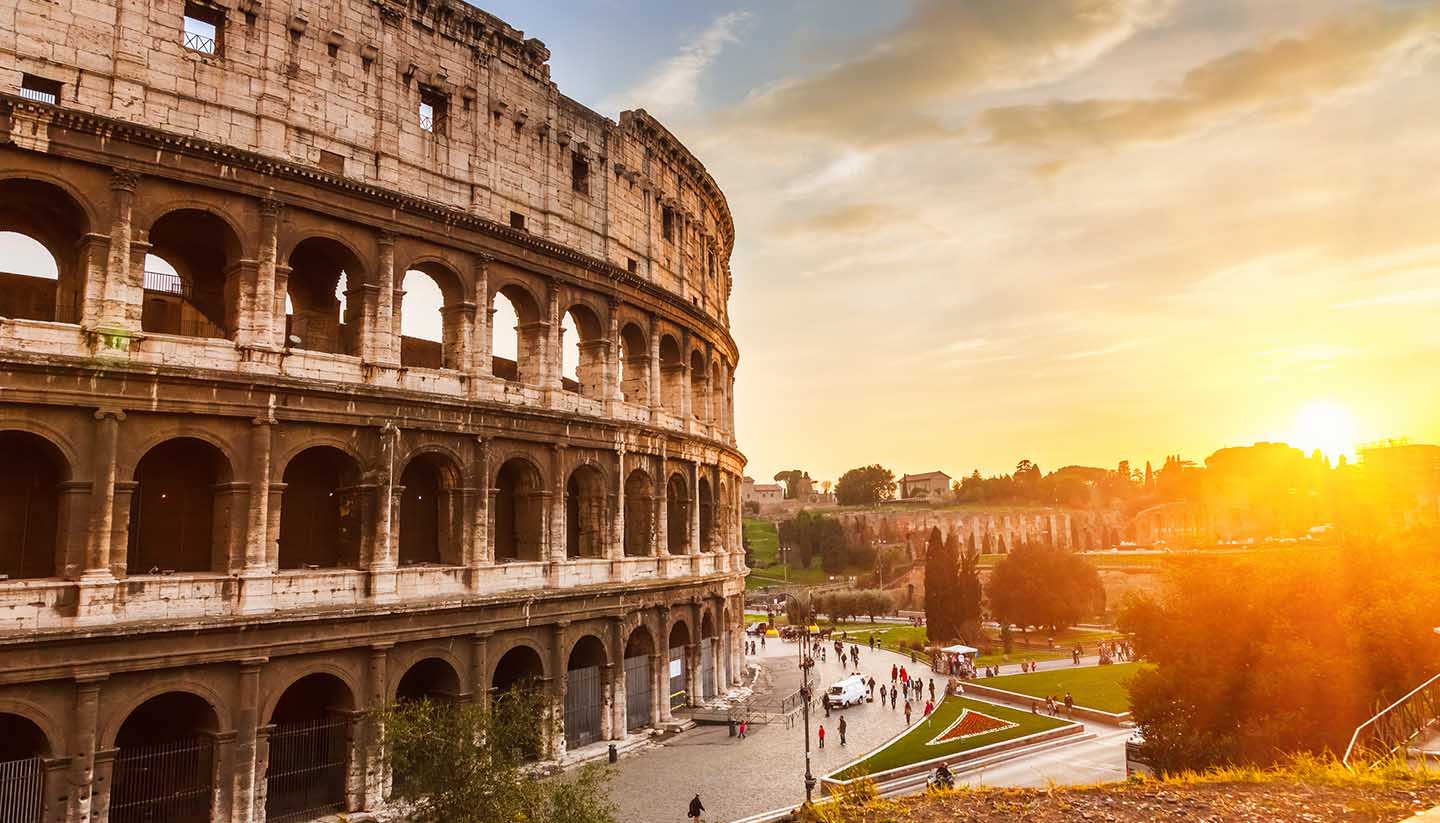
Introducing Italy
About italy.
- Images of Italy
- History, language & culture
- Weather & geography
- Doing business & staying in touch
Plan your trip
- Travel to Italy
- Where to stay
While you’re there
- Things to see & do
- Shopping & nightlife
- Food & drink
- Getting around
Before you go
- Passport & visa
- Public Holidays
- Money & duty free
Book your flights
- Bari Karol Wojtyla Airport
- Bologna Guglielmo Marconi Airport
- Cagliari Elmas Airport
- Catania Fontanarossa Airport
- Florence Airport
- Genova (Genoa) Cristoforo Colombo Airport
- Marche Airport (Ancona Falconara Airport)
- Milan Linate Airport
- Milan Malpensa Airport
- Naples International Airport
- Olbia Costa Smeralda Airport
- Palermo Falcone-Borsellino Airport
- Pisa International Airport Galileo Galilei
- Rome Ciampino Airport
- Rome Leonardo da Vinci Fiumicino Airport
- Trieste – Friuli Venezia Giulia Airport
- Turin Caselle Airport
- Venice Marco Polo Airport
- Verona Villafranca Airport
Ski Resorts
- Bardonecchia
- Sauze d’Oulx
- Aeolian Islands beaches
- Alghero beaches
- Amalfi beaches
- Bardolino beaches
- Capri beaches
- Cefalù Beach
- Garda beaches
- Isle of Ischia beaches
- Portofino and Paraggi Beach
- Rimini beaches
- Sorrento beaches
- Taormina beaches
Cruise Locations
Italy travel guide.
Travelling around Italy remains one of those rare experiences in life – like a perfect spring day or the power of first love – that can never be overrated. In few places do history, art, fashion, food and la dolce vita (“the good life”) intermingle so effortlessly. In Italy you'll find sunny isles, glacial lakes and fiery volcanoes, rolling vineyards and urban landscapes harbouring more UNESCO World Heritage sites than any other country on Earth. Few places offer such variety and few visitors leave without a fervent desire to return.
The artistic and architectural treasures of Rome, Venice, Florence and Naples draw visitors to them like moths to a flame. Not content with Romans conquering most of the known world, the Venetians dispatched Marco Polo to uncharted lands off the map, while Giotto, Leonardo da Vinci, Brunelleschi and Michelangelo kick-started the Renaissance in Western art and architecture.
Look around at all the splendid palaces, paintings, churches and monuments and wonder at the centuries of hard graft and the unswerving devotion to traditional techniques. Like the local art, wine is also designed to elevate your spirits. From the neatly-banded stone terraces of the Cinque Terre, which snake from sea level to terrifying precipices, to the blousy hillsides of Chianti, the riverine plain of the Po valley and the volcanic slopes of Etna, Italian wines are lovingly made to complement the carefully-sourced regional cuisine on your plate.
Much like its food, this country is an endless feast of experiences. No matter how much you gorge yourself, you’ll always feel as though you're still on the first course. Do you go skiing in the Dolomites, or cycling in wine country? Do you dive the sun-split waters of Sardinia, climb Aeolian volcanoes or stalk market stalls in Naples? The choice is dazzling and bewildering. So take the advice of the locals. Slow down, sit back, tuck in that napkin and get ready to begin.
301,340 sq km (116,348 sq miles).
59,801,004 (UN estimate 2016).
201 per sq km.
President Sergio Mattarella since 2015.
Prime Minister Giorgia Meloni since 2022.
Travel Advice
This travel advice also covers Vatican City.
Before you travel
No travel can be guaranteed safe. Read all the advice in this guide and any specific travel advice that applies to you:
- women travellers
- disabled travellers
- LGBT+ travellers
- solo and independent travel
- volunteering and adventure travel
Travel insurance
If you choose to travel, research your destinations and get appropriate travel insurance . Insurance should cover your itinerary, planned activities and expenses in an emergency.
About FCDO travel advice
The Foreign, Commonwealth & Development Office ( FCDO ) provides advice about risks of travel to help British nationals make informed decisions. Find out more about FCDO travel advice .
Follow FCDO travel on Twitter , Facebook and Instagram . You can also sign up to get email notifications when this advice is updated.
This information is for people travelling on a full ‘British citizen’ passport from the UK. It is based on the UK government’s understanding of the current rules for the most common types of travel.
The authorities in Italy set and enforce entry rules. If you’re not sure how these requirements apply to you, contact the Italian Embassy in the UK .
COVID-19 rules
There are no COVID-19 testing or vaccination requirements for travellers entering Italy.
Passport validity requirements
Italy follows Schengen area rules . Your passport must:
- have a ‘date of issue’ less than 10 years before the date you arrive – if you renewed your passport before 1 October 2018, it may have a date of issue that is more than 10 years ago
- have an ‘expiry date’ at least 3 months after the day you plan to leave the Schengen area
Check with your travel provider that your passport and other travel documents meet requirements. Renew your passport if you need to.
You will be denied entry if you do not have a valid travel document or try to use a passport that has been reported lost or stolen.
Visa requirements
You can travel without a visa to the Schengen area , which includes Italy, for up to 90 days in any 180-day period. This applies if you travel:
- as a tourist
- to visit family or friends
- to attend business meetings, cultural or sports events
- for short-term studies or training
The requirements for working in Italy are different.
If you’re travelling to other Schengen countries as well, make sure your whole visit is within the 90-day visa-free limit. Visits to Schengen countries within the previous 180 days before you travel count towards your 90 days.
If you cannot return to the UK before your visa-free limit expires, contact the nearest local immigration office (‘questura’) (in Italian).
Make sure you get your passport stamped on entry and exit.
If you’re a visitor, border guards will look at your entry and exit stamps to check you have not overstayed the 90-day visa-free limit for the Schengen area.
If your passport is missing a stamp, show evidence of when and where you entered or left the Schengen area (for example, boarding passes or tickets) and ask the border guards to add the date and location in your passport.
At Italian border control, you may need to:
- show proof of your accommodation, for example, a hotel booking confirmation or proof of address for your own property
- show proof of your travel insurance
- show a return or onward ticket
- prove that you have enough money for your stay – the amount varies depending on your accommodation
Staying longer than 90 days in a 180-day period
To stay longer, you must meet the Italian government’s entry requirements. Check which type of visa or work permit you need with the Italian Ministry of Foreign Affairs . You’ll need to apply and then book an appointment .
If you’re in Italy with a residence permit or long-stay visa, this does not count towards your 90-day visa-free limit.
Read about passport stamping if you live in Italy .
Italy-Slovenia land border
There are temporary border checks at Italy’s border with Slovenia. Allow extra time for crossing the land border. Be ready to show your passport or residency card if you are asked by the border police.
Registering with the authorities
You must declare your presence (‘dichiarazione di presenza’) to the local immigration authority (‘questura’) within 8 days of arriving if you’ve come from another Schengen-area country and are not staying in a hotel or bed and breakfast. The ‘questura’ will give you a form to complete.
You can get more information from the Ministry of Foreign Affairs or Italian police force .
Accommodation for people aged 17 and under
If you’re aged 17 or under, you cannot check into hotels or holiday accommodation without an accompanying adult.
Vaccine requirements
For details about medical entry requirements and recommended vaccinations, see TravelHealthPro’s Italy guide .
Customs rules
There are strict rules about goods you can take into and out of Italy . You must declare anything that may be prohibited or subject to tax or duty.
Taking food into Italy
You cannot take meat, milk or products containing them into EU countries . There are some exceptions such as powdered baby milk, baby food and special food or pet feed required for medical reasons.
Taking money into Italy
Declare cash or travellers cheques if the value is 10,000 euros or more. You will get a certified declaration to show you brought it in with you. If you do not, your money could be seized when you leave.
There is a high threat of terrorist attack globally affecting UK interests and British nationals, including from groups and individuals who view the UK and British nationals as targets. Stay aware of your surroundings at all times.
UK Counter Terrorism Policing has information and advice on staying safe abroad and what to do in the event of a terrorist attack. Find out how to reduce your risk from terrorism while abroad .
Terrorism in Italy
Terrorist attacks in Italy cannot be ruled out.
Events in Israel and the Occupied Palestinian Territories
Italian authorities have increased security around some Jewish community sites due to events in Israel and the Occupied Palestinian Territories. Stay aware of your surroundings, stay away from demonstrations and follow the advice of local authorities.
Political demonstrations
Demonstrations can happen with little or no warning in cities. Avoid any protests, political gatherings or marches.

Lost or stolen passports
If your passport is lost or stolen, you must renew your passport or apply for an emergency travel document . You cannot use a police report to leave Italy.
Crime levels are generally low but there are higher levels of petty crime, particularly bag-snatching and pickpocketing, in city centres and at major tourist attractions.
To reduce your personal risk:
- keep sight of your belongings at all times
- beware of thieves using distraction techniques
- avoid carrying all your valuables together in handbags or pockets
- leave spare cash and valuables in a safe place such as a hotel safe
Public transport
Take care on public transport, in crowded areas and in city centres, including main stations – particularly in and around Termini station in Rome.
Be particularly careful with your belongings:
- on trains to and from airports
- at cruise ship ports
- on the ‘Circumvesuviana’ train between Naples and Sorrento
- when unloading your baggage from trains and coaches
Theft from cars
Thefts from parked cars happen in Rome, particularly in the Colosseum area, Ostia, Milan and Pisa. Thieves also target coastal areas and towns, and motorway service stations. Avoid leaving luggage in your vehicle – even out of sight in the boot – for any length of time.
Thieves may use a variety of methods to distract you or encourage you to stop your car, including asking for help or directions or pointing out a fictional fault with your car.
Drink spiking and alcohol
Do not take drinks from strangers or leave your drinks unattended. Victims of spiked drinks have been robbed and sometimes assaulted. Alcohol and drugs can reduce your vigilance, making you less in control. If you drink, know your limit. Drinks served in bars in Italy are often stronger than those in the UK.
Laws and cultural differences
Personal id.
You must always be able to show some form of ID. In most cases a copy of the photo page of your passport should be enough, but you may also be asked for a second form of photo ID. The police will normally ask for your full passport if you are stopped while driving.
Public transport regulations
You must validate your tickets on public transport before you start your journey. Officials patrol public transport and will issue an on-the-spot fine of 100 to 500 euros (reduced to 50 euros if paid immediately) if you do not have a validated ticket.
Tourist tax
Many major cities in Italy impose a small tax on tourists. You must usually pay this tax at your hotel as it is unlikely to be included in your holiday booking. The rate of tax varies from city to city and can depend on the star rating of the hotel. Hotels often ask for payment in cash. Make sure you get a receipt. For more information, check with the local tourist information office.
Venice access fee
If you are visiting Venice, you may need to pay an access fee. See when access fees apply, exemptions and how to make a payment .
Public offences
Some Italian towns and cities have specific laws, and you could be fined for breaking them. For example, there may be laws against:
- dropping litter
- sitting on monument steps
- eating and drinking next to main churches, historic monuments and public buildings
- defacing historic monuments
It’s also an offence to enter or bathe in public fountains in many towns and cities, including Florence and Rome. You could face a fine of up to 10,000 euros for urinating in a public place.
On the island of Capri, you must not use or bring on to the island any disposable plastic objects such as bags, cutlery, plates, cups, food packaging, trays and straws. If you do, you could be fined up to 500 euros.
Illegal traders operate on the streets of all major Italian cities. It is illegal to buy items from unlicensed street traders. If you do, you could be stopped by the local police and fined.
It’s illegal to remove sand, shells or pebbles from coastal areas in Italy. You could face a large fine for doing so. It’s also illegal to collect various species of flowers, plants and herbs from mountain and wooded areas. For more information, check with the regional authorities of the area you’re visiting.
Winter sports
Get advice on weather and avalanche conditions before you travel and familiarise yourself with local skiing laws and regulations.
You can contact the Italian State Tourist Board for advice on safety and weather conditions before you travel.
Regulations for the ski season include:
- third-party liability insurance is a legal requirement and can be purchased locally with a ski pass
- you must wear a helmet if you are under 18
- you must not eat or drink on ski lifts or boarding areas
- you must not climb a slope with snowshoes except in an emergency
- you must not ski under the influence of alcohol or drugs
Off-piste skiing is very dangerous, with the danger of avalanches in some areas. Follow all safety instructions and go with a qualified guide. For more information about the avalanche risk, visit the European Avalanche Warning Service website.
Make sure your insurance covers off-piste activity. It is a legal requirement for skiers and snowboarders to carry tracking equipment, a snow probe and a shovel if they go off-piste.
See advice on preparing for winter sports .
Outdoor activities and adventure tourism
Hiking, mountaineering and other adventure sports have specific risks.
Check the company is well-established in the industry and make sure your insurance covers these activities.
For sports activities like skiing, potholing and mountaineering, and for sports classed as particularly dangerous, such as off-piste skiing, mountain biking, climbing, paragliding or BASE jumping, your insurance should include:
- mountain rescue services
- helicopter costs
- repatriation to your country of residence or transfer to neighbouring countries for treatment
Check weather forecasts and conditions and make sure you’re properly equipped for the worst-case scenario with items such as a map, compass, GPS and telecommunication equipment.
Risks are greater if you undertake any activity alone. You may want to hire a guide for expert advice. Always leave copies of your itinerary with someone.
Transport risks
Road travel.
If you are planning to drive in Italy, see information on driving abroad and check the rules of the road in the RAC’s Italy guide . The guide lists driving regulations and other legal requirements you need to be aware of.
The Italian Police guide on driving in Italy gives further safety advice.
You can use a UK photocard driving licence to drive in Italy. If you still have a paper driving licence, you may need to update it to a photocard licence or get the correct version of the international driving permit ( IDP ) as well.
Hire car companies often have stricter requirements for their customers, such as a year of driving experience, a higher minimum age and holding an IDP .
Check if you need a UK sticker to drive your car outside the UK .
If you’re living in Italy, or planning to live there, see the driving requirements for residents .
Only use officially licensed taxis, which have a taxi sign on the roof and a company name and number written on the side. Call a taxi, order one from an app or pick one up from an official rank.
Transport strikes
Transport strikes are often called at short notice. You can find information on the Ministry of Transport website (in Italian).
Pedestrian safety
Traffic can be busy, fast and chaotic, especially in the larger cities. Take care when crossing roads. Pedestrians should cross roads at a crossing. You can be fined for crossing the road if you are within 100 metres of a pedestrian crossing but do not use it. Drivers do not always stop, even though they are required to. The green pedestrian crossing signal also allows cars to turn right on to the crossing, so cross with caution.
Traffic restrictions
You need a pass to drive into the historic centre of many Italian cities in a private or hire car. You can buy a pass from most car hire companies. The boundaries are usually marked with the letters ZTL in black on a yellow background. If you pass this sign, your registration number is likely to be caught on camera and you will be fined if you do not have a pass.
There is a congestion charge for Milan city centre .
In Rome, city authorities sometimes restrict traffic to reduce pollution. This means certain vehicles are not allowed on the roads in the green band (‘fascia verde’) area, which covers most of Rome. The Rome Municipality has more information.
Extreme weather and natural disasters
Find out what you can do to prepare for and respond to extreme weather and natural hazards . For severe weather warnings, visit the European Meteorological Services website.
Wildfires are a risk during the extended summer months. They are highly dangerous and unpredictable. Check the latest alerts and weather forecast and follow advice of local authorities if you’re considering travelling to affected areas. Take care when visiting or driving through woodland areas and report fires to the emergency services.
For information on what to do in the event of a wildfire, visit the Civil Protection Department .
Heavy rainfall is common throughout Italy in winter, which can cause local flooding. Monitor local media, weather reports and follow the advice of local authorities in affected areas.
High waters are a common occurrence in Venice and can cause flooding in parts of the city.
Earthquakes
Many parts of Italy lie on a major seismic fault line, which means that minor tremors and earthquakes happen regularly. Learn more about what to do before, during, and after an earthquake .
There are several active volcanoes in southern Italy . National emergency planning has been updated for Vesuvius as well as the Phlegraean fields , an area that remains active and which has experienced tremors in 2024.
Read what to do in the event of a volcanic eruption and follow the instructions of the local authorities.
Before you travel check that:
- your destination can provide the healthcare you may need
- you have appropriate travel insurance for local treatment or unexpected medical evacuation
This is particularly important if you have a health condition or are pregnant.
Emergency medical number
Dial 118 and ask for an ambulance.
Contact your insurance company quickly if you’re referred to a medical facility for treatment.
Vaccine recommendations and health risks
At least 8 weeks before your trip:
- check the latest vaccine recommendations for Italy
- see where to get vaccines and whether you have to pay on the NHS travel vaccinations page
See what health risks you’ll face in Italy , including:
- biting insects and ticks
Altitude sickness is a risk in parts of Italy, including the Alps and the Dolomites. Read more about altitude sickness on TravelHealthPro .
Healthcare in Italy
FCDO has a list of medical providers in Italy where some staff will speak English.
Health insurance cards
To get medically necessary state healthcare in Italy, you need a Global Health Insurance Card ( GHIC ) or a European Health Insurance Card ( EHIC ).
The NHS’s getting healthcare abroad has details about:
- how to apply for a GHIC
- how to get temporary cover if you lose your card or it does not arrive in time
- who qualifies for a new EHIC instead of a GHIC
- what treatment counts as medically necessary
A GHIC or EHIC is not an alternative to travel insurance. You may have costs your GHIC or EHIC does not cover, including:
- changes to travel and accommodation bookings
- additional standard costs for treatment
- medical repatriation to the UK
- treatment that is ruled non-urgent
- private healthcare
- private clinics
See guidance on healthcare if you’re living in Italy .
The legal status and regulation of some medicines prescribed or bought in the UK can be different in other countries.
Read best practice when travelling with medicines on TravelHealthPro .
You will need to go to a pharmacy to get most over-the-counter medicines. Pharmacies are widely available and are usually identified by a green cross. UK prescriptions are not accepted, though you may be able to buy an equivalent medication from the pharmacy.
Alternatively, you can visit an Italian GP to obtain a local prescription. Prescription medicines are not free in Italy, but with an EHIC or GHIC , and an Italian prescription, you will pay a reduced rate.
Travel and mental health
Read FCDO guidance on travel and mental health . There is also guidance on TravelHealthPro .
The Foreign, Commonwealth & Development Office ( FCDO ) cannot provide tailored advice for individual trips. Read this travel advice and carry out your own research before deciding whether to travel.
Emergency services in Italy
Ambulance: 118
Police: 112
European emergency app
You can also download the 112 Where Are U app , the official European emergency number app. It is only available in some parts of Italy.
Contact your travel provider and insurer
Contact your travel provider and your insurer if you are involved in a serious incident or emergency abroad. They will tell you if they can help and what you need to do.
Refunds and changes to travel
For refunds or changes to travel, contact your travel provider. You may also be able to make a claim through insurance. However, insurers usually require you to talk to your travel provider first.
Find out more about changing or cancelling travel plans , including:
- where to get advice if you are in a dispute with a provider
- how to access previous versions of travel advice to support a claim
Support from FCDO
FCDO has guidance on staying safe and what to do if you need help or support abroad, including:
- finding English-speaking lawyers , funeral directors and translators and interpreters in Italy
- dealing with a death in Italy
- being arrested in Italy
- getting help if you’re a victim of crime
- what to do if you’re in hospital
- if you are affected by a crisis , such as a terrorist attack
Contacting FCDO
Follow and contact FCDO travel on Twitter , Facebook and Instagram . You can also sign up to get email notifications when this travel advice is updated.
You can also contact FCDO online .
Help abroad in an emergency
If you’re in Italy and you need emergency help from the UK government, contact the British Embassy in Rome or the Consulate General in Milan .
FCDO in London
You can call FCDO in London if you need urgent help because something has happened to a friend or relative abroad.
Telephone: 020 7008 5000 (24 hours)
Find out about call charges
Risk information for British companies
The Overseas Business Risk service offers information and advice for British companies operating in Italy on how to manage political, economic, and business security-related risks.

Related Articles

24 hours in: Florence
As the birthplace of the Renaissance period, opera and even gelato, Florence has enough cultural heritage to fill a whole lifetime.
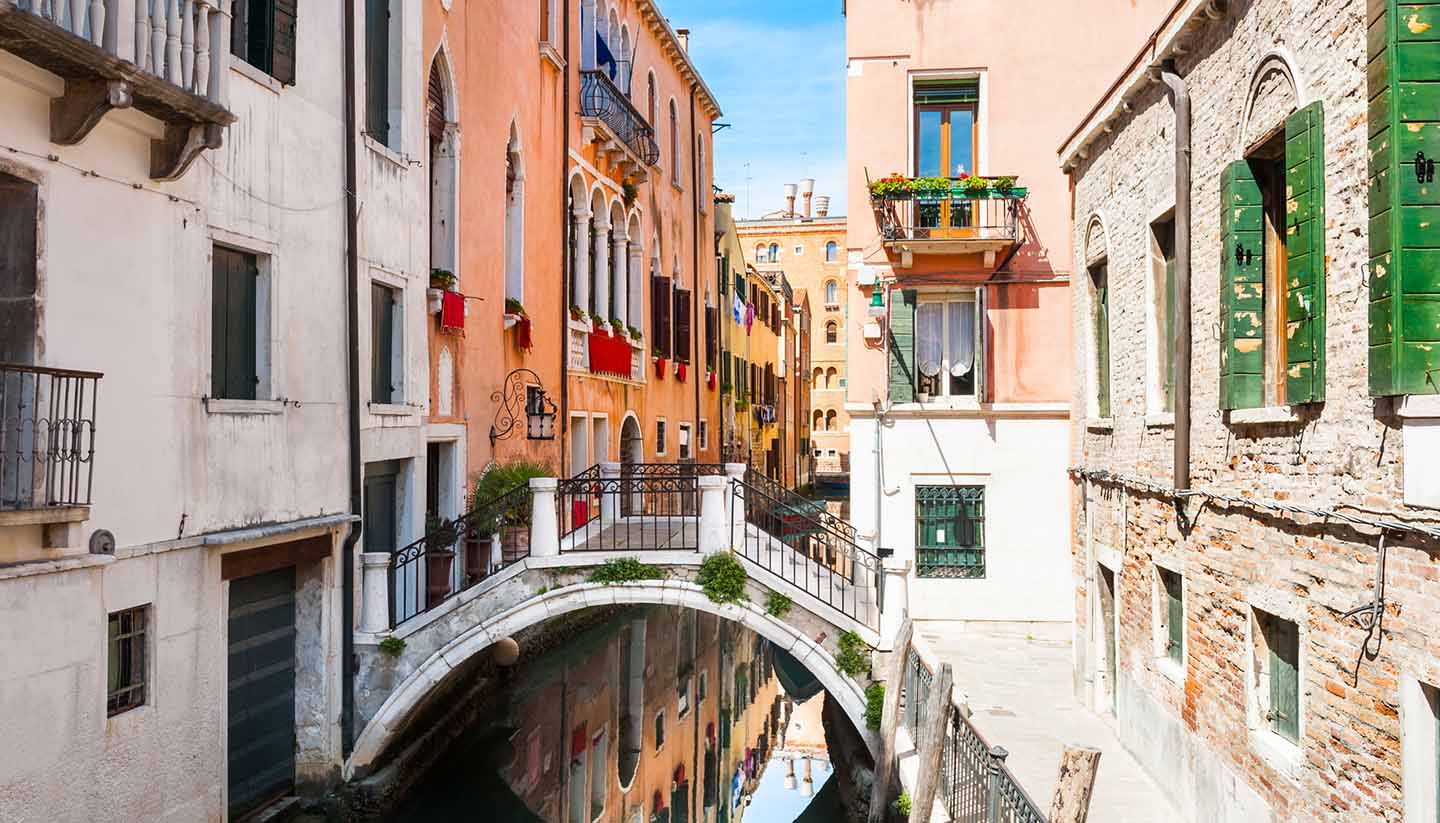
‘They’ll burn your boat’: Paddling against the patriarchy
Almost all of Venice's Gondolieri are men. Paula Hardy meets Jane Caporal, the renegade sticking her oar in to change all that.
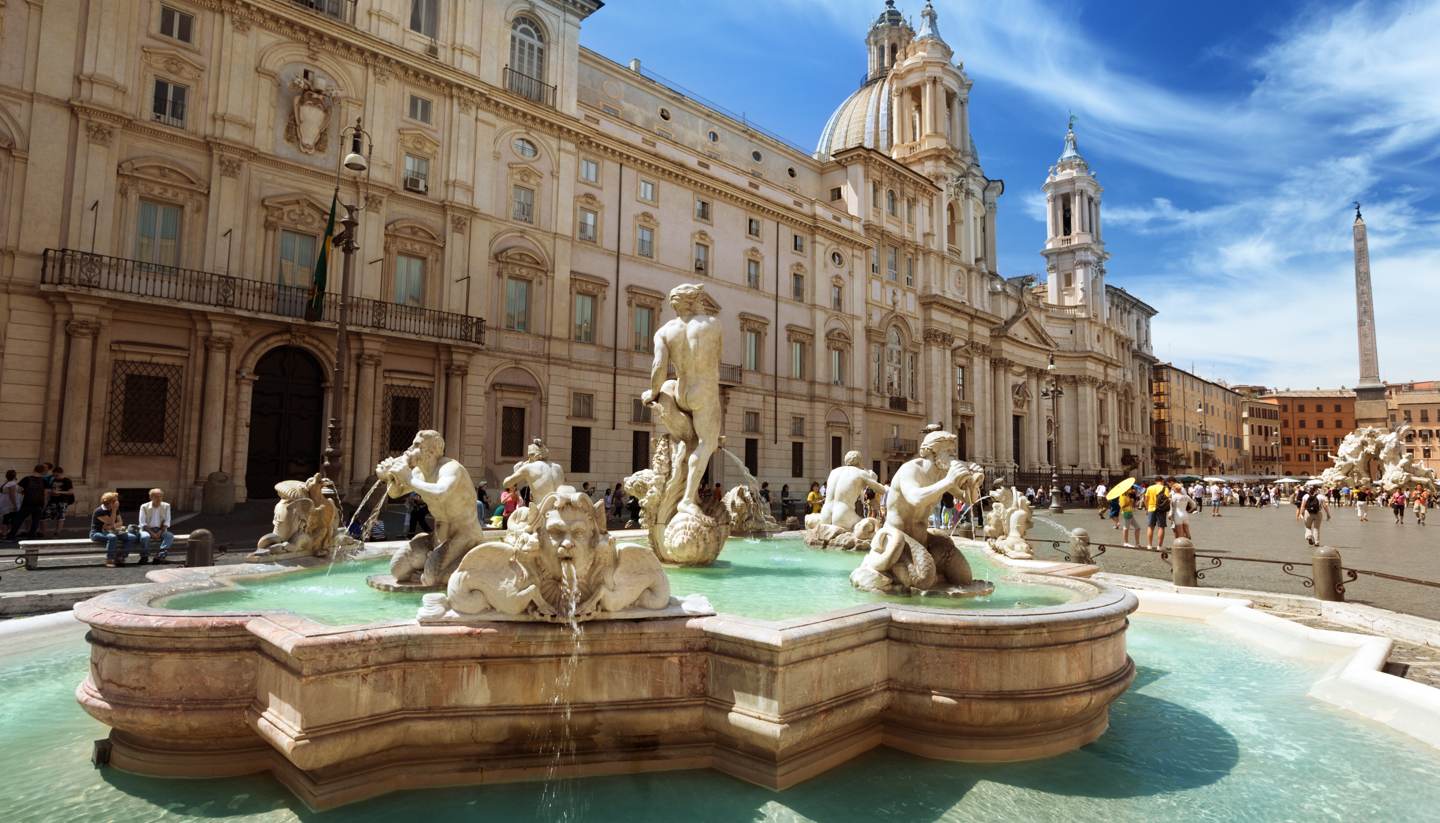
City Highlight: Rome
From world-famous ruins to chic cafés and must-try specialties, in Italy’s cosmopolitan capital it’s certainly true that “one lifetime is not enough”
Book a Hotel
© Columbus Travel Media Ltd. All rights reserved 2024

Mon-Fri: 0900 -1800 Sat: 0900 - 1700 Sun & BH: Closed Local rates apply
Rated Excellent on Trustpilot

Expert Holiday Directors

60 years experience
Holiday Search
30 Interesting Facts about Italy
Italy is renowned for its rich heritage, deliciously varied regional cuisine, and incredible art and architecture. From compelling historical landmarks to fascinating local traditions, these 30 facts about Italy will amaze even the most passionate enthusiasts of this nation and its dedication to la dolce vita (the sweet life). Experience the sweet taste of Italy yourself on one of our award-winning Italian escorted tours .
Italy has a long Mediterranean coastline, many islands and its natural attractions include stunning sea vistas, serene cypress-dotted countryside and three mountain ranges. From ancient hillside villages to the Eternal City of Rome , or iconic cities of Florence and Venice , Italy is a country of delightful contrasts and there are countless intriguing facts about this endlessly appealing nation.
1. Florence paved the way in Europe
Florence can be recognised for at least one impressive architectural accomplishment: it was the first city in Europe to have fully paved streets. Visitors will also be captivated by its many fine galleries, including the Uffizi and its magnificent collection of paintings from the Middle Ages.
Walk these beautifully cobbled streets for yourself on our Treasures of Tuscany & Florence tour.
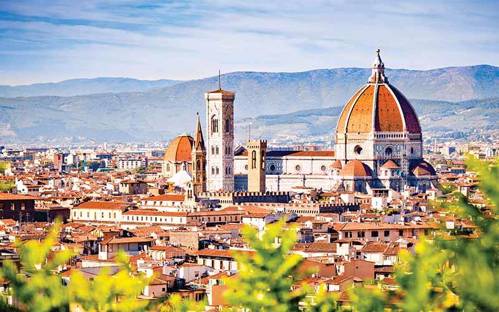
2. Italy has made many contributions to art and literature
Italy has been a centre for talented artists and influential writers. One particular period that stands out is the Renaissance, which helped shape remarkable masters like Leonardo Da Vinci and Michelangelo. Stand in the silenced Sistine chapel, and look skywards to admire the intricate details of perhaps one of the world's most famous pieces of art.
3. Pinocchio was originally published in a newspaper
This beloved story had a humble beginning within the pages of a simple Italian newspaper. In July 1881, readers of Giornale per i Bambini (or children's newspaper) were delighted to come across the charming first part of The Story of a Puppet by Carlo Collodi.
4. The Roman Empire covered around 2.3 million miles
Italy's rich history encompasses the extraordinary growth of the Roman Empire. At its peak, this empire stretched across three continents and included approximately 2.3 million square miles.
Italy isn't the only country where you can explore ancient ruins. Jeresh is home to some of the best preserved roman ruins outside of Italy and we visit them on the Jordan's Ancient Wonders tour .
5. Venice has 471 bridges
Venice, also known as "The Floating City", is famous for its intricate network of canals often lined with palazzi (grand houses). Gondolas and boats are the primary modes of transportation in this ancient city built on a lagoon. Wind your way across this iconic city which includes 471 bridges connecting one side of a canal to another. The oldest and most famous bridge is the Rialto bridge and until 1854 was the only place you could cross the Grand Canal on foot.
Explore St Mark's Square and the Rialto Bridge as you kick start your Grand Tour of Italy in style.
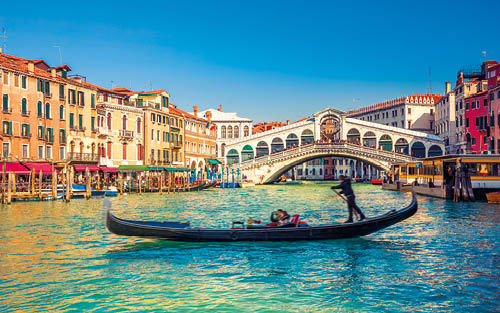
6. Italy’s drinking water is beautifully pure
The drinking water in Italy is not only safe but also respected for its exceptional quality. In fact, it often rivals bottled water and is subject to rigorous quality control measures.
7. Rome has Europe's largest film studio
Cinecittà Studios in Rome is Europe's largest film studio. It has provided sets for many iconic movies throughout the years, including beloved classics like , Roman Holiday (1953), Ben-Hur (1959), The Godfather Part III (1990) and Gangs of New York (2002).
8. Italy has a major part in olive oil production
Italy is responsible for approximately 20% of global olive oil production. Each region within Italy boasts its own blend of olive oil, each distinctively representing the diverse soil and climate conditions found throughout the nation. In northern Italy, the flavours are quite delicate, but as you head south, the flavours become stronger and can become quite peppery.
9. San Gimignano has a towering history
San Gimignano in Tuscany is renowned for its unique skyline adorned with mediaeval buildings. At one point, the city boasted an astonishing 72 towers, which were symbols of wealth and success for affluent families who engaged in friendly rivalry to construct the tallest tower.
Pick your favourite as you wander the streets on an optional tour of San Gimignano .
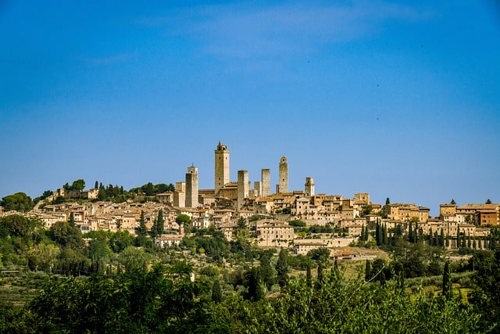
10. Italy has a strong fashion legacy
Italy is respected worldwide as a leading fashion hub, with influential cities like Milan at the forefront of the industry. This stylish country gave us prestigious brands such as Gucci, Prada, and Versace.
11. It’s traditional to throw a coin into the Trevi Fountain
It is a popular tradition to throw a coin over your shoulder into this famous fountain in Rome. According to this tradition, throwing a single coin guarantees your future return. However, throwing two or three coins could guarantee finding love or even marriage. So many visitors take part in this ritual that the fountain has to be emptied twice a week!
12. Religion is a vital part of Italian culture
Religion plays a prominent role in Italian culture, with the majestic Vatican City serving as the spiritual and administrative centre of the Roman Catholic Church. The majority of Italians identify as Catholics, and when visiting Italy, you will encounter numerous chapels, and churches. From the sublime artwork of the Sistine chapel to Florence's iconic Duomo di Milano or viewing the Volto Santo relic, a sacred wooden sculpture of Christ thought to date back to 742 AD, in Romanesque St Martin Cathedral, no two are the same.
13. Italy contains two independent states
Italy is home to not only one, but two independent countries: Vatican City and San Marino. These two remarkable entities have their own fascinating histories and unique cultural traditions. It's hard to miss the colourful uniforms of the Vatican's Swiss Guards, sworn protectors of the Holy See, as you stand in the Piazza San Pietro (St Peter's Square) and take in the beautiful architecture of St Peter's Basilica.
14. The Leaning Tower of Pisa was used in World War II
During the Second World War, when Italy was under Nazi occupation, the Leaning Tower of Pisa became an observation outpost, showing how well-known landmarks can also perform a range of functions in times of war or crisis.
15. Dried pasta isn’t originally from Italy
Dried pasta was brought to Italy during the medieval period by Arab travellers. This cultural fusion demonstrates the significant impact of cultural exchange and development. Eventually, pasta became famous worldwide, and there is a museum dedicated to it in Rome.
16. Ancient civilisations shaped Italy
Before Rome became the centre of a powerful empire, Italy was the birthplace of the ancient Etruscan and Samnite civilisations. These societies had enormous cultural influence and helped shape what would later become part of Roman heritage.
17. Bologna has two famous towers
Bologna is renowned for its iconic Le Due Torri, or Two Towers: Asinelli and Garisenda. Interestingly, the tower of Garisenda leans even more than the Leaning Tower of Pisa. Leaning 4 degrees compared to Pisa's 3.9 degrees. Restoration work is hoped to begin on the tower soon to stabilise it's current slant for generations to come.
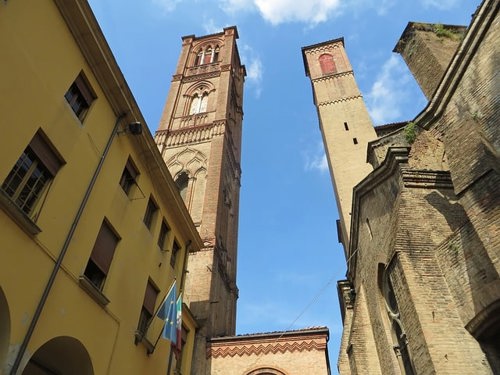
18. Italy has the world's oldest operating university
The University of Bologna holds the title as the oldest university still in operation today. Established in 1088, this esteemed institution has maintained a legacy of academic and scientific excellence for centuries. With buildings dotted throughout the city of Bologna you are bound to wander past some of the stunning architectural masterpieces that make up this university. Often open to the public, the buildings make for a unique view of Italy.
19. Venice is sinking
The enchanting waterways of Venice also expose a less romantic truth – the city is sinking. With sea levels rising and the natural subsidence of land, concerns have been raised about the future of this UNESCO heritage site.
20. Italy is shaped like a Boot
One of the most well known facts of Italy is it's rather unique shape. Commonly known as "The Boot of Europe" because of its distinctive outline, resembling high-heeled footwear. This geographical characteristic makes Italy easily identifiable on maps.
21. There are lots of Italian superstitions
Italian culture is rich with superstitions, such as avoiding encounters with black cats to touching iron for good luck. It’s even considered unlucky to place a hat on a bed and some hotels don't have a 17th floor as the number is considered unlucky
22. Italy is vulnerable to earthquakes
As a result of its location between the Eurasian and African tectonic plates, Italy encounters frequent seismic activity. Some parts of the country are susceptible to earth movement.
23. Italy benefits from linguistic diversity
Although Italian is the official language of Italy, the country is home to a rich variety of local languages and dialects. In northern Italy, German is spoken due to historical ties and close proximity to Austria. Different regions in Italy have their own unique languages like Calabrian (Calabrese), Venetian, Sicilian, and Neapolitan.
24. The country is named after cows
The origin for the name of Italy has often been subject to debate. One school of thought believes the name Italy could have been derived from the term italus, which means calf land. This could be connected to early agricultural practices, myths in the region or the fact that Italians do like milk and cheese.
25. Italy used to be a dictatorship
Benito Mussolini, a prominent figure in European totalitarianism, held political power in Italy from 1922 to 1943. He founded and led the National Fascist Party. Il Duce governed with a firm hand until he was executed by soldiers.
26. Tomatoes were introduced to Italy from Peru
Despite common misconception, tomatoes did not originate in Italy. They were actually brought to Italy from Peru in the 16th century and have since become a fundamental ingredient in Italian cuisine.
27. Pizza's birthplace is Naples
When it comes to notable edible contributions from Italy, the invention of pizza undoubtedly holds a significant place. Naples, often known as the birthplace of pizza, introduced this culinary delight to the world in the 1800s.
Although there are believed to be some references to an ancient Greek flatbread that is thought to be a potential precursor for Pizza. Whichever origin story you side with, we can all agree that Italy has certainly perfected the pizza.
Try a slice for yourself in the shadow of Mount Vesuvius on our tour of Pompeii, Paestum and Herculaneum .
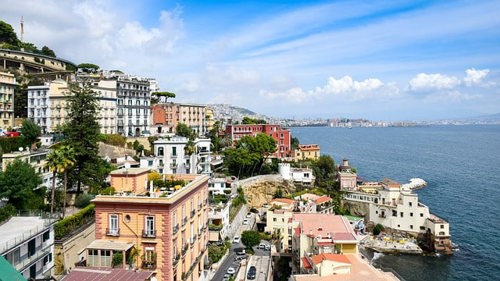
28. Football is very popular in Italy
Football is a national passion in Italy. The country has a strong football tradition and has won the FIFA World Cup four times, putting them joint second place for the most World Cup wins.
29. Italian motoring is world-renowned
Italy is well known for its automotive industry. Brands like Fiat, Ferrari, Lamborghini, and Maserati produce some of the world's most iconic and sought-after high-performance cars.
30. Italians eat a lot of pasta
It is widely recognised that Italians have a profound passion for pasta, and an intriguing statistic supports this claim: on average, each person in Italy consumes nearly 60 pounds (or 27 kg) of pasta every year. Pasta is also eaten as the primo piatto, the first course (not to be viewed as an appetiser) followed by everything eles.
Explore Italy with Travelsphere
Discover the enduring appeal of Italy for yourself with Travelsphere's range of escorted tours, all designed to give you the best in terms of experiences, food, accommodation, and excursions. Our 15 Day Grand Tour of Italy is an excellent choice, allowing you to immerse yourself in the multifaceted culture of this remarkable country.
In destinations such as Pompeii, prepare to delve into the Italy's illustrious past, where ancient Roman ruins breathe life into its history. Each day on one of our guided tours takes you on a captivating journey - walk in the footsteps of historical legends and witness the magnificence of Italy through their eyes. In the company of like-minded travellers, who share your passion to see the world, you’ll create many incredible memories.
For those travellers looking to experience the unparalleled beauty of the Italian Riviera, then look no further than our I Italian Riviera & Portofino tour . You’ll navigate through picturesque landscapes and colourful villages giving you a taste of authentic Italy all while enjoying one unforgettable moment after another.
Popular Italy Escorted Tours
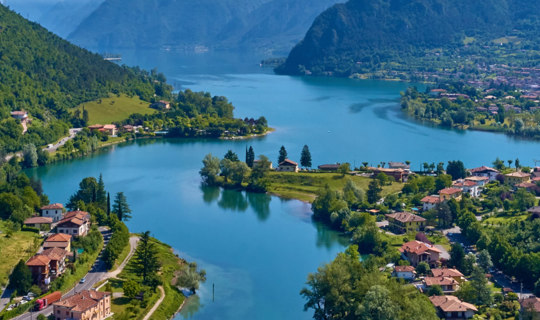
Secret Lakes of Italy
Discover the scenic beauty of northern Italy’s secret lakes, where tranquil waters, unspoiled nature and delicious cuisine await.
- Return flights
- 7 nights in 3 and 4-star hotels
- 11 meals: 7 breakfasts, 1 lunch, 3 dinners
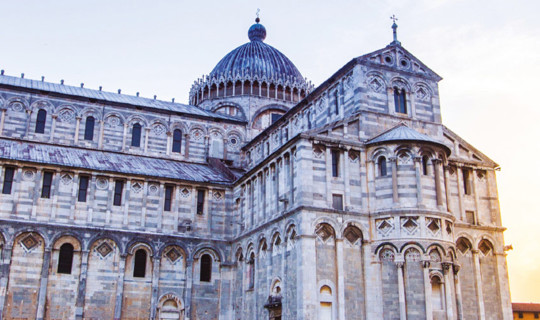
Grand Tour of Italy
Explore Italy from top to toe on an incredible journey that takes in the iconic cities of Venice, Florence and Rome and discovers the wonders of Pompeii, Sicily and more.
- 14 nights in 4-star hotels
- 23 meals: 14 breakfasts, 1 lunch, 8 dinners
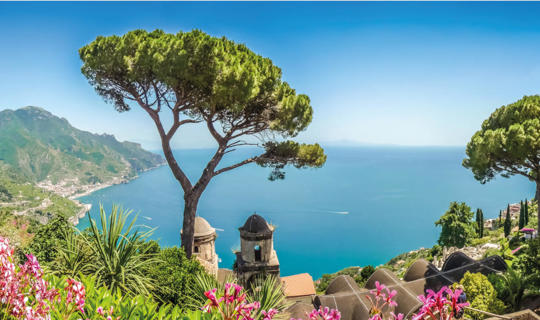
Amalfi Coast, Pompeii & Capri
Pastel-coloured villages perched on dramatic cliffs overlooking the azure sea - it's this picture-postcard scenery that makes the Amalfi Coast so special.
- 7 nights half-board in a 4-star hotel
- 15 meals: 7 breakfasts, 1 lunch and 7 dinners

Puglia & Basilicata
These two spectacular regions in Italy’s heel abound with incredible sights. Look out for traditional Trulli houses, Sassi cave dwellings and ornate Baroque buildings.
- 15 meals: 7 breakfasts, 1 lunch, 7 dinners
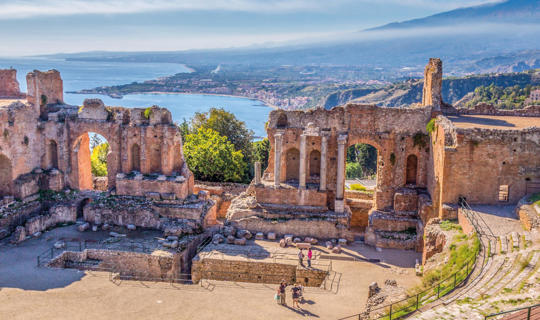
The Best of Sicily
Brooding Mount Etna forms a dramatic backdrop to your discoveries as you revel in Greek and Roman history and uncover medieval treasures.
- 7 nights half-board in 4-star hotels
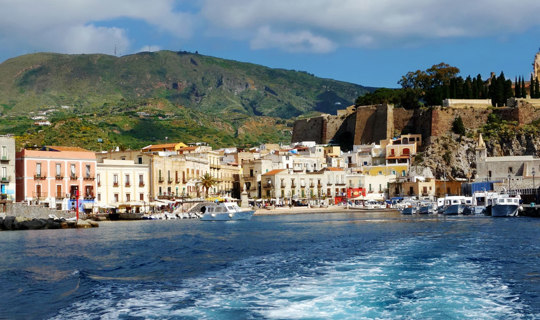
The Best of Sicily with Aeolian Islands Add-on
Brooding Mount Etna forms a dramatic backdrop to your discoveries as you revel in Roman history in Sicily followed by a relaxing four days on the UNESCO-protected Aeolian island of Lipari.
- 12 nights in 4-star hotels
- 20 meals: 12 breakfasts, 1 lunch, 7 dinners and welcome drink
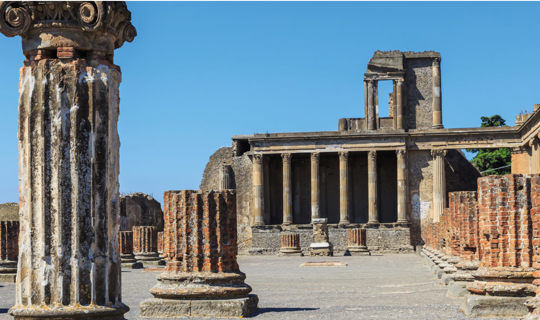
Pompeii, Paestum & Herculaneum
Uncover captivating stories, marvel at majestic ruins and wander the well-preserved streets of some of Italy’s most fascinating archaeological sites.
- 14 meals: 7 breakfasts, 7 dinners and welcome drink

Pompeii, Paestum & Herculaneum with Island of Ischia Add-on
Explore this fascinating part of Italy with Mount Vesuvius as your backdrop. Your holiday includes four nights on the delightful island of Ischia where you can fully appreciate authentic Italian Island life.
- 11 nights in 4-star hotels
- 22 meals: 11 breakfasts, 11 dinners
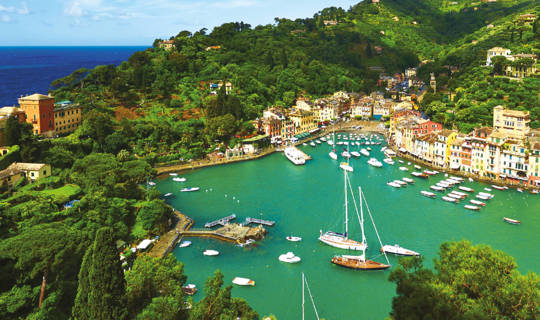
The Italian Riviera, Portofino & the Cinque Terre
Revel in the glamour and scenic highlights of the Italian Riviera as you explore by road, rail and boat.
- 15 meals: 7 breakfasts, 1 lunch, 7 dinners and welcome drink
Other articles you may like
Ancient cities of italy, what to drink in italy, best time to visit italy.

- Destinations
Italy Travel Guide
- Terms of Use
- Privacy Policy
- Your US State Privacy Rights
- Children's Online Privacy Policy
- Interest-Based Ads
- About Nielsen Measurement
- Do Not Sell or Share My Personal Information
- Nat Geo Home
- Attend a Live Event
- Book a Trip
- Inspire Your Kids
- Shop Nat Geo
- Visit the D.C. Museum
- Learn About Our Impact
- Support Our Mission
- Advertise With Us
- Customer Service
- Renew Subscription
- Manage Your Subscription
- Work at Nat Geo
- Sign Up for Our Newsletters
- Contribute to Protect the Planet
Copyright © 1996-2015 National Geographic Society Copyright © 2015-2024 National Geographic Partners, LLC. All rights reserved

Italy Travel Guide: Tips and Advice to Plan Your Trip
Planning a trip to Italy? Great! This Italy travel guide is full of tips and advice to help you do just that.
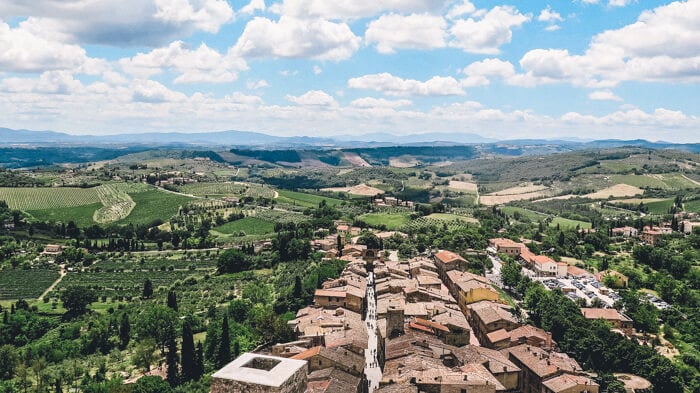
Italy is an EU member state situated in southern Europe. It’s the country that looks like a boot jutting out of the bottom of Europe! Italy encompasses the entirety of this boot-shaped peninsula, along with several islands, the largest of which are Sardinia and Sicily. Italy was one of the founding members of NATO and is an OECD member country.
So, why travel to Italy? The country is a world-renowned tourist destination. It's often referred to as the cradle of civilization and boasts hundreds of museums, galleries, and monuments that will offer you a glimpse at the country’s fascinating cultural heritage. It's also famous for its beaches, iconic coastal towns, pretty hillside towns, and delicious cuisine – renowned as the birthplace of pizza and pasta.
Italy travel guide: quick facts
Aosta valley, emilia-romagna, friuli-venezia giulia, trentino alto adige, entry requirements, independent travel around italy, best places to stay in italy, what to pack for italy in summer, what to pack for italy in winter, what to pack for italy in spring and fall, when to travel to italy, what to eat in italy, famous events in italy, bank holidays in italy, don't forget travel insurance, basic phrases and their pronunciation, safety in italy, the use of cash and cards in italy, calling abroad, wifi and data use in italy, tipping in italy, a brief history of italy.
Where is Italy? In between Austria, San Marino, Vatican City, Slovenia, Switzerland, and France
Size: 301,338 km2 or 116,347 sq mi
People living there: more than 60,782,000
Capital: Rome
Governmental structure: Constitutional, parliamentary republic
National day: June 2
Time zone: Central European Time + UTC+1 / GMT+1
Currency: euro (EUR)
Power voltage and socket type(s): 230V, plug types F and L. If these don't match with your devices, make sure to bring a universal adapter .
Official religion(s)/Freedom of religion: Freedom of religion. 80% of Italians are registered as Christian, with 70% being Catholic followed by other Christian denominations. 12% of Italians are not religious. Less than five percent of citizens are Muslim, Jewish, Buddhist, and Hindu.
Official language(s) and general knowledge of English: Italian is the official language. English is semi-widely spoken in the northern part of Italy, infrequently spoken in southern Italy.
Drives on this side: Right
International driver's licence accepted? Yes
Phone code: +39
Looking for less dry, more fun facts about Italy? You'll find a whole list here .
Italy’s Regions
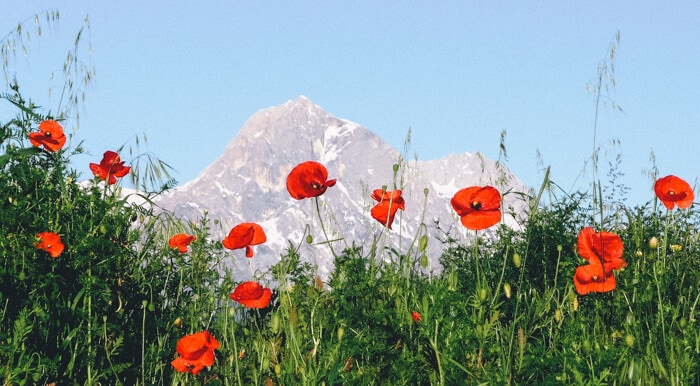
What Abruzzo lacks in people, it more than makes up for in natural beauty. The Gran Sasso d’Italia is a popular spot for skiing in the winter and hiking in the summer. Once you’ve had your fill of slopes and valleys, a sandy coastline is just a stone’s throw away.
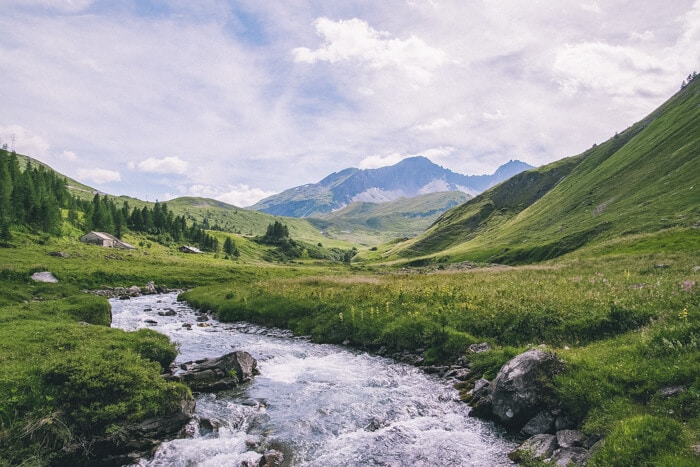
The Aosta Valley is a hub for thrill seekers thanks to the abundance of adventure activities on offer. However, that isn’t all the region is good for. Medieval castles pepper the landscape in the Aosta Valley and there are several top quality spas dotted around too.
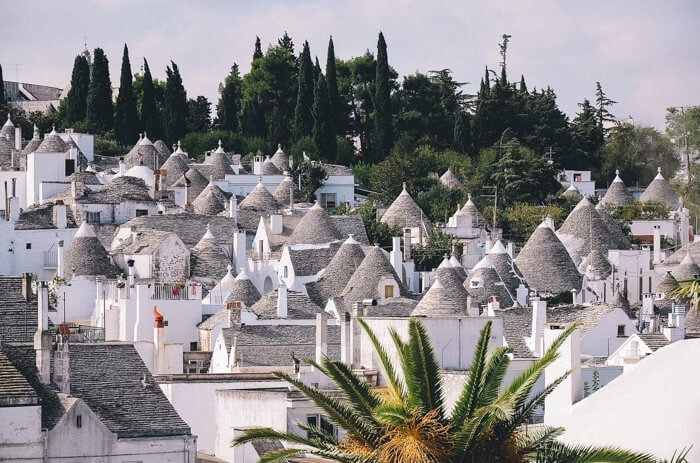
History buffs should take the opportunity whilst in Apulia to visit the Castel del Monte. This magnificent, octagonal castle was originally built in 1240 and has been extensively restored over the centuries.
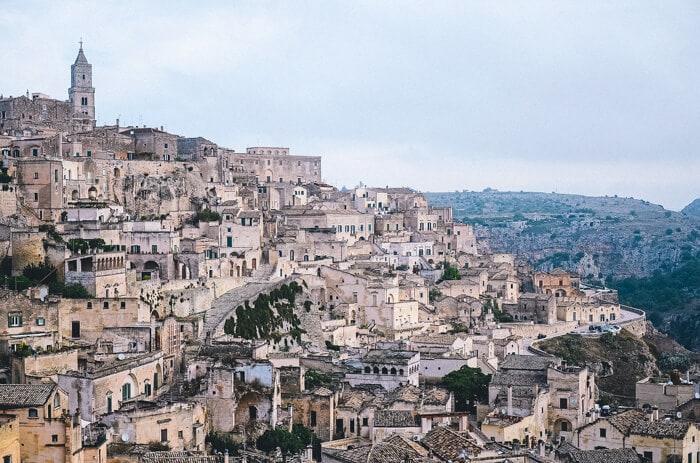
Basilicata is also home to the largest national park in Italy: the Pollino National Park. Here you will find caves that date back to prehistoric times, natural hot springs, and hiking paths.
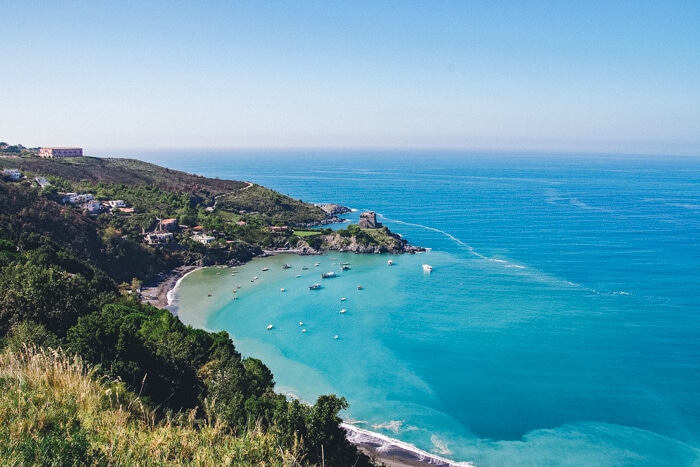
Chianalea di Scilla is always a favorite with visitors thanks to its virtually unrivaled beauty. Here, traditional houses sit one atop the other, built into the side of the cliff. Below, shimmering water gleams under never-ending sunshine. It makes for a perfect day trip!
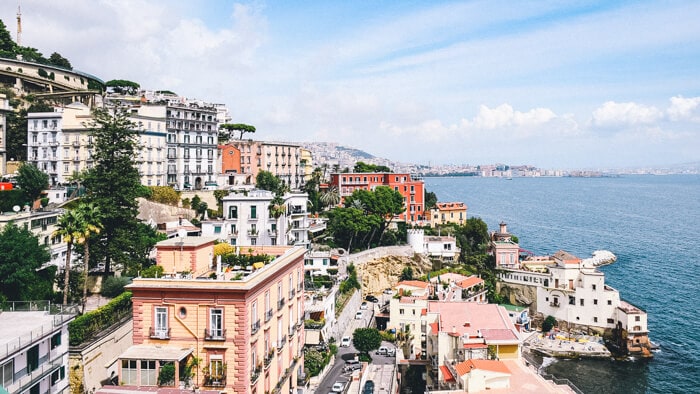
For those looking to stay active during their vacation, a brisk hike up the iconic Mount Vesuvius to see its crater should do the trick. If you’d rather chill out, head over to the star-studded Amalfi Coast for beautiful beaches and elegant boutiques. The Amalfi Coast is famous for it's picturesque hilltop villages and stunning sea views.
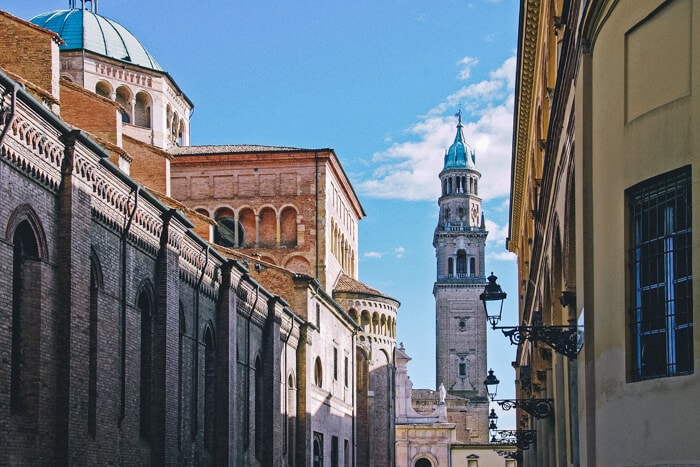
- Top things to do in Modena
- Viting the Lamborghini Museum
- At the Ferrari Museum in Modena
- Fun things to do in Rimini
- Things to do in Parma
- How to spend a day in Ravenna
- What to see in Ferrara
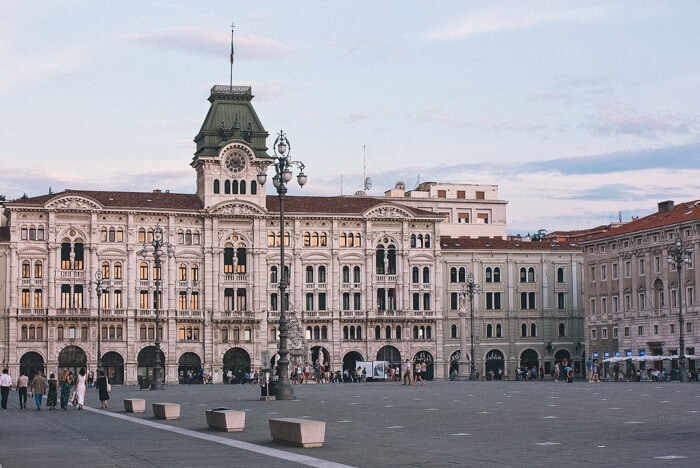
Trieste is the capital city of this gorgeous, mountainous region. Emerald slopes roll out in every direction and the mish-mash of cultures here never fails to fascinate. It’s no wonder writers like Joyce and Hemingway found so much inspiration here. This region is one of the least visited in the country, meaning you’ll virtually have the place to yourself if you choose to go. Enjoy wine-tasting tours, long hikes through the countryside, the ancient ruins of the Roman Empire at Aquileia and the beach in Grado .
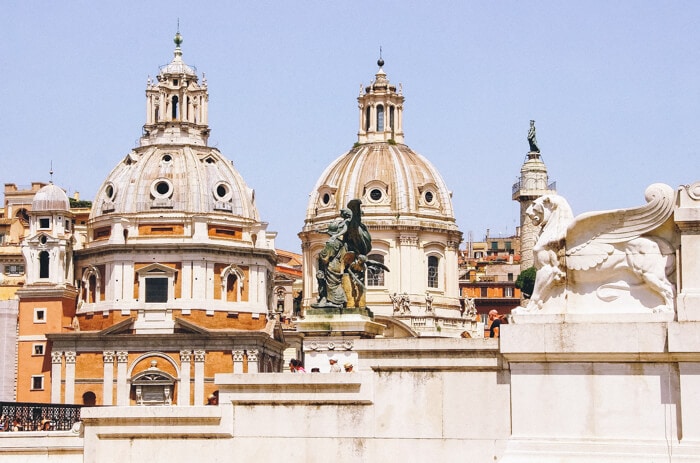
Read here how to spend 4 days in Italy's capital.
While technically its own country, Vatican City is one of the highlights of a trip to Rome. Marvel at the astonishing architecture of the Sistine Chapel and St. Peter’s Basilica. Whether you are Christian or not, a trip to the Vatican is a must – even if it’s just to say you’ve been to the world’s smallest country!
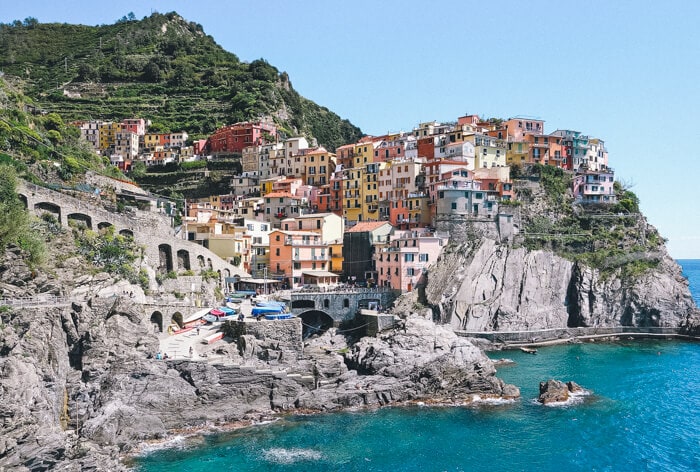
In the capital of the region, Genoa, the Piazza de Ferrari and the Piazza Matteotti are favorites with visitors. You’ll be able to do some excellent people watching there. If you’re looking for a spot of history, check out the castle, cathedral, or hillside fort.
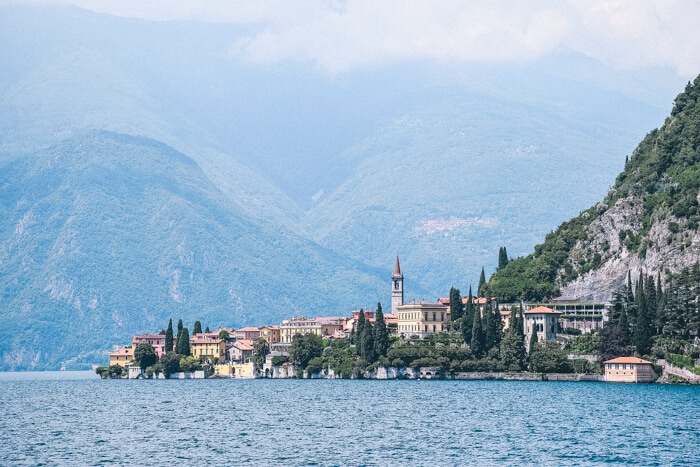
On the nature side of things, Lombardy boasts the breath-taking Lake Como and Lake Garda. The shores of the lake are noticeably less crowded than the beaches in the South and the scenery is utterly sublime.
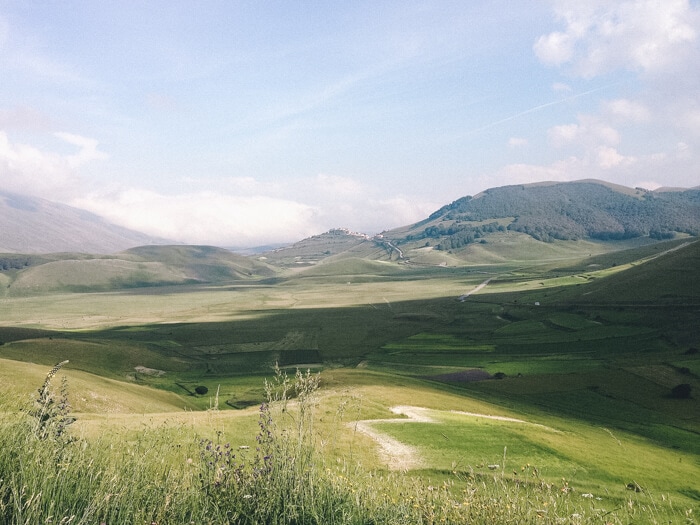
When it comes to natural beauty in the region, Mount Conero steals the show. From the glittering coast line, it rises up in shades of vivid green and makes the perfect destination for hiking and picnicking.
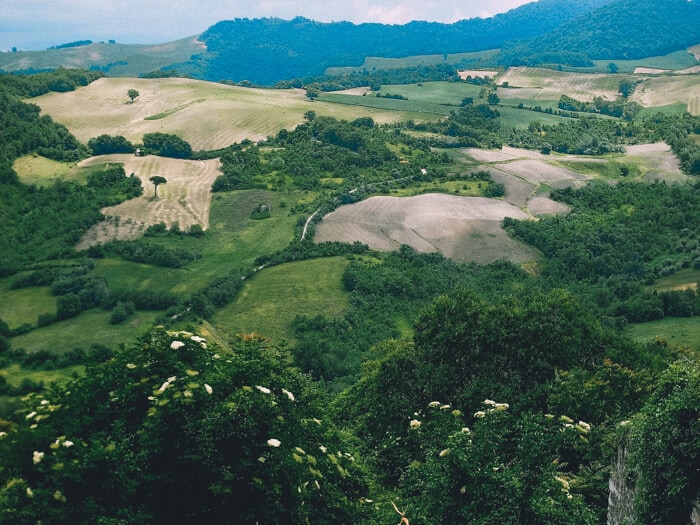
If you’re a football fan, you might want to grab tickets to watch Turin’s team Juventus play a match. Juventus is the oldest and most successful team in Italy so it’s worth watching a game even if you’re not that keen on football.
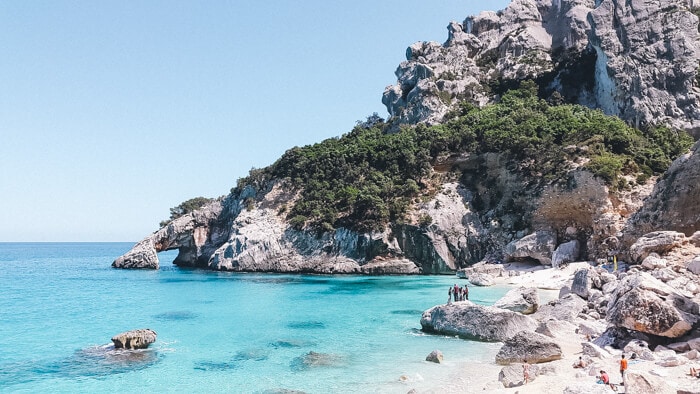
Aside from the beaches, Sardinia also has a few interesting sights. Along the coast, there are the Caves of Neptune and away from the coastline, Sardinia has a collection of quaint and colorful towns and around 7,000 “nuraghe”, towers from the Bronze Age. Cagliari is the capital.
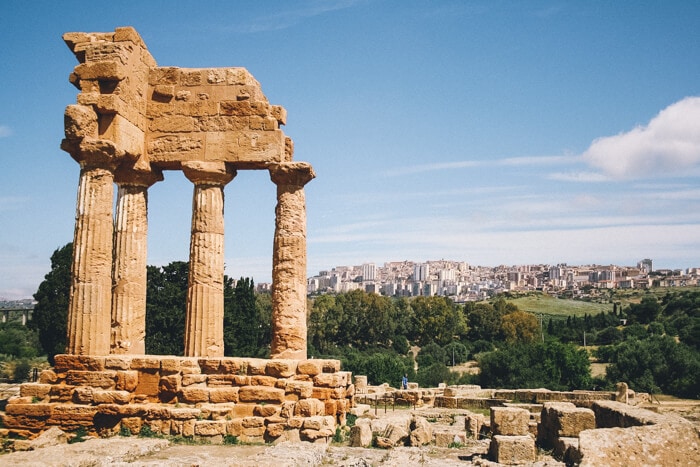
Elsewhere on the island is the Monastery of San Nicolò, which dates back to the 1500s. Of course, when the sun is shining the best place to be is Rabbit Beach or in a kayak exploring the Aeolian Islands, an archipelago of rocky islands to the north of Sicily.
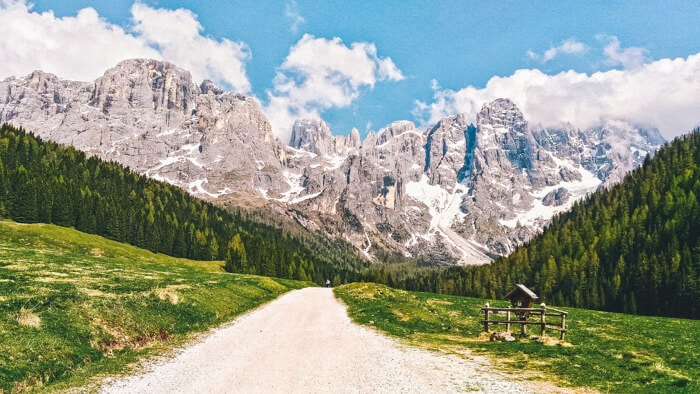
Outside of Florence, vineyards and olive groves stretch out endlessly across Tuscany's rolling hills. Tuscan wine is a must try and the region is also home to the country’s most internationally recognized landmark: the leaning tower of Pisa.
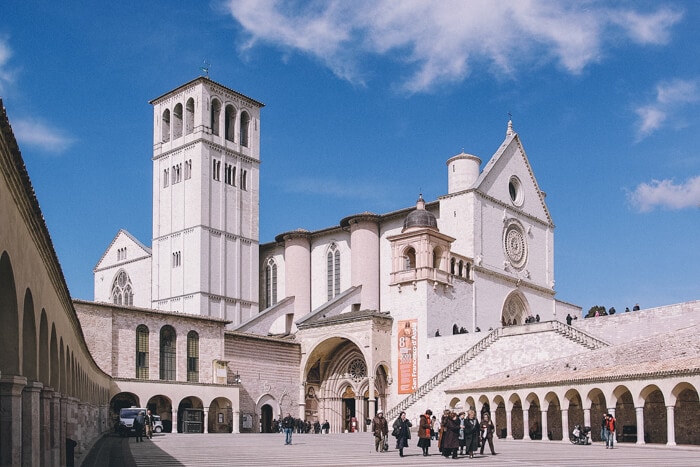
If you're into beautiful hill towns , Umbria is a must.
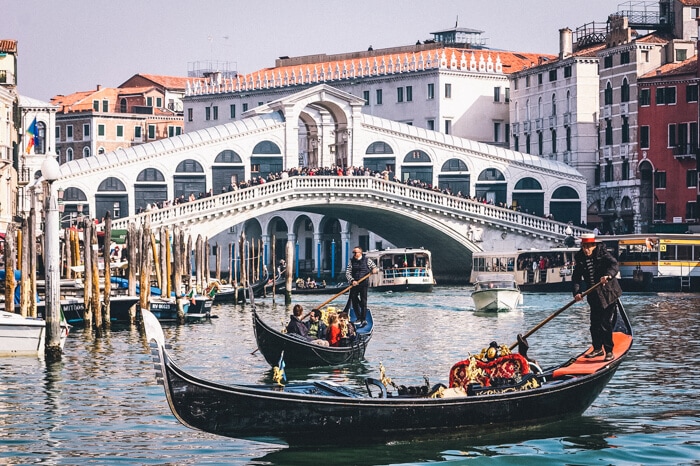
Luckily, there is more the Veneto than just Venice. Verona and Padova get a lot less visitors to process but are no less fabulous to explore. Whether you visit the famous balcony that inspired Shakespeare’s Romeo and Juliet in Verona or hit up the boutiques in Padova, you are guaranteed an incredible trip.
How to travel to Italy
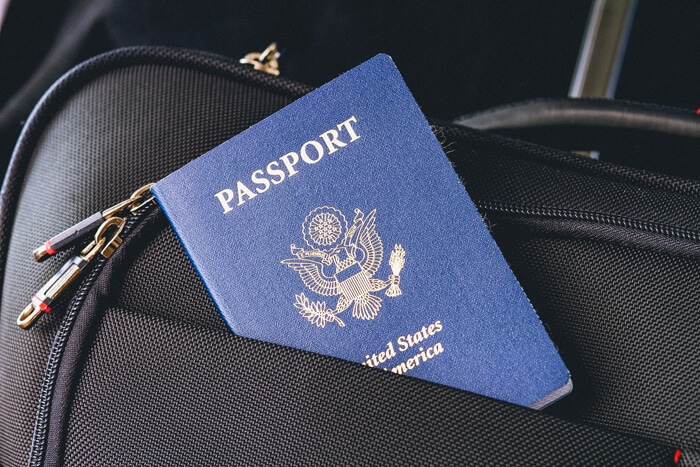
Citizens of the US and the rest of the world may enter Italy for 90 days without a visa.
Transportation
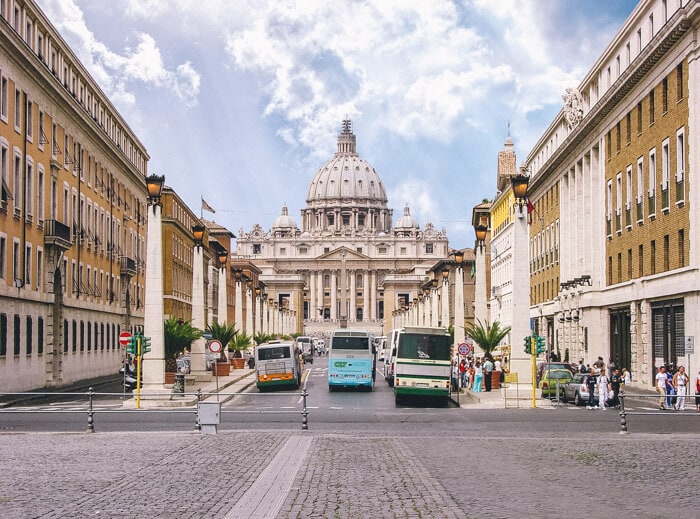
Italy is very well connected by bus to its neighboring countries and beyond. There are a number of buses that travel to Italy from, among other countries, Portugal, France, Spain, Germany, Austria, Luxembourg, Belgium, the Netherlands, Slovenia, and Croatia. Some of the long distance bus companies riding into Italy are:
There are direct, international trains into Italy from Germany, Austria, Switzerland, and Hungary. If you're coming from any other country, you'll have to switch trains at some point.
Check bEurope for train options and prices.
There are ferries to Italy from a number of Greek islands, including Corfu and Kefalonia. There are also ferries into Italy from Albania, Spain, France, Malta, Montenegro, Morocco, and Tunisia and ferries between mainland Italy and the islands of Sicily and Sardinia.
Some companies offering ferry services to Italy are:
1. Ferries in Greece : Offers ferry crossings from Greece to Ancona, Bari, Brindisi, Ravenna, and Venice. Check their timetables and prices here.
2. Croatia Ferries : Offers ferry crossings from Croatia to Ancona, Bari, Cesenatico, Pesaro, Pescara, Trieste, and Venice.
Look here for an overview of ferry routes and prices to Italy.
Italy’s busiest international airport is the Leonardo da Vinci-Fiumicino Airport in Rome. The Malpensa and Orio al Serio airports in Milan and the Marco Polo airport in Venice also have large international terminals ut it's also possible to fly to smaller cities like Bologna.
Check Skyscanner for a good overview of cheap flights and other options. .
How to travel around Italy
Exploring Italy independently is delightfully easy. Trains are the best way to travel in Italy if you want to visit the bigger cities. The national rail system is run by Tren Italia and you can buy tickets for the trains directly from their website or from Loco2 and Italia Rail, which also sell national train tickets.
An Italian road trip, driving from city to city is also an option, but beware of Italian drivers. The rules of the roads were made to be broken here and inner-city driving is mission impossible if you aren’t used to the way things are done here. That being said, car rental is a great way to see Italy's countryside regions and drive in between smaller towns. Make sure you have an international driving permit if you are visiting from outside Europe.
Money saving tip: if you want to rent a car, book it in advance. Car rental in Italy can get extremely expensive, especially if you travel during high season.
Booking.com is my go-to place for booking hotels, guest houses and bed and breakfasts abroad. It has a bunch of filtering options so I can easily get a list of only the hotels that meet my criteria. If you're looking for accommodation, I highly recommend you check there .
On the occasions that I want to book an apartment rather than a hotel, I use Airbnb .
What to pack for Italy
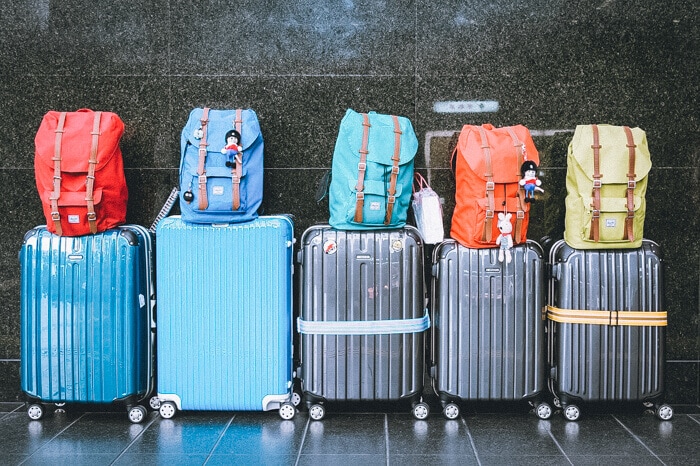
If you're going to Italy in summer, you need to take into account that it can get really warm. Think 40 degrees celsius on its hottest days. This is what you are going to need:
- lots and lots of suncream
good walking sandals
- light clothes
- a re-usable water bottle
Winter only really happens in the north and center of the country. In Milan and Rome, it can get quite chilly – even dropping into negative numbers in extreme cases.
- lots of layers that you can add and remove as necessary
- a warm, waterproof coat
- winter boots
- a scarf, gloves, and a hat
The weather in Italy during spring and fall is roughly the same. It will be warm and dry for the majority of the season. Pack light clothing with a sweater for the evenings. You might also want to take flip flops for when the sun is out and closed toe shoes as well as a jacket for rainy or colder days.
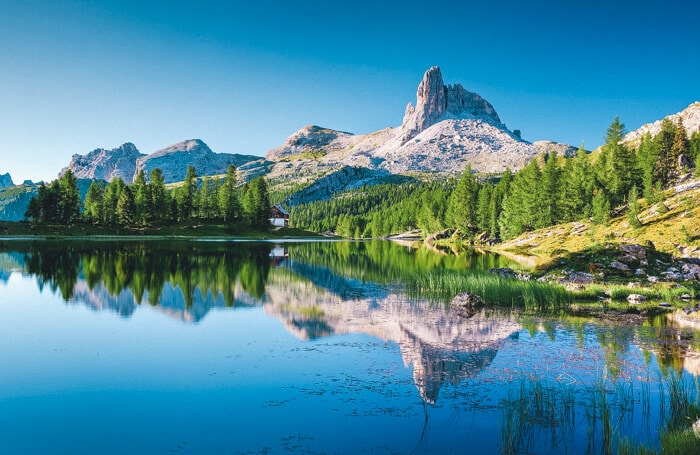
In the summer months, the temperature is too high for the cities to be enjoyable but is perfect for hiking in the north. Beware that the summer is high season for coastal towns and beach locations. In high season prices will be higher and you should expect huge crowds.
If you want to ski then December-February is the best time to visit.
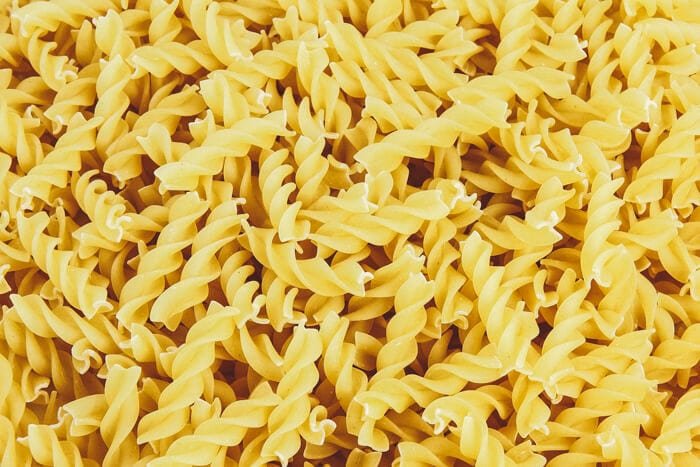
- Pasta – there are dozens of different types of pasta and even more types of sauce. Just pick whichever combo takes your fancy – you won’t be disappointed.
- Pizza – everywhere in Italy serves delicious pizza, but if you want the very best you should head down to Naples.
- Risi e bisi – rice and beans, it’s simple but delicious and comes from Veneto.
- Focaccia di recco – a thin layer of focaccia pastry with creamy cheese in the middle from Liguria.
- Arancini – deep fried balls of rice covered in breadcrumbs. Fillings vary by region and often include cheese, meat, and ragu.
- Osso buco alla Milanese – tender veal shanks with delicious marrow served with gremolata with lemon, garlic and white wine.
- Prosciutto crudo – uncooked, thinly sliced ham (it’s amazing on pizza!).
- Gelato – it’s ice cream, but it is the best ice cream you have ever had. Nocciola, stracciatella, and bacio are all popular flavours.
- Bistecca fiorentina – Steak from the meat right below the ribs. From Tuscany.
- Risotto – creamy rice with meat and/or vegetables, best from the regions of Lombardy and Piedmont.
- Truffles – luxurious and expensive, truffles are used to infuse oil and are shaved onto dishes. They mostly grow in Umbria, Tuscany, Le Marche, and Piedmont.
- Limoncello – a lemon liqueur sipped from a shot glass after a big meal to “settle the stomach”. The drink originally comes from the Amalfi Coast.
I tried quite a few of these things when I did a food tour in Rome. Read here about the food tour in Rome I went on.
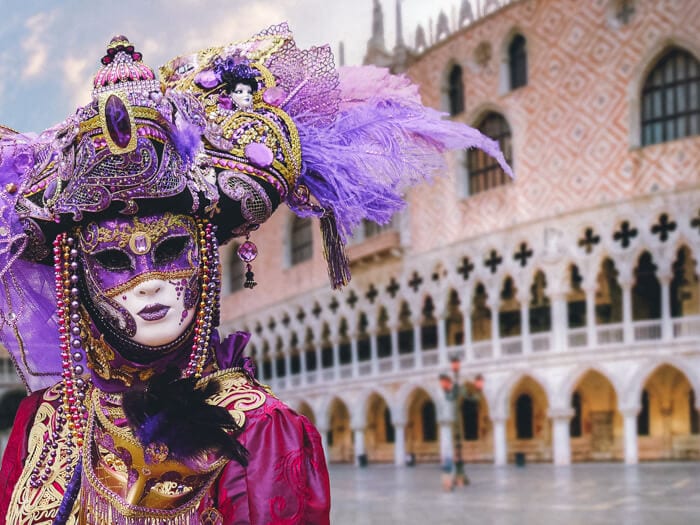
- Carnavale – there are carnival celebrations all over the country but the parties in Venice get the most attention and are world famous (February)
- Ravello Festival – musical performances, dance shows, photography exhibitions (June-August)
- The Procession of Mysteries – a religious festival representing the passions and death of Jesus in Tipani, Sicily (April)
- Labour Day – celebration of Italy’s workforce and achievements (May 1st)
- Feast of Saint Efisio – a cultural and religious festival in Sardinia that gained intensity after the devastating plague of 1652 (May 1st)
- Nameless Music Festival – Italy’s largest EDM festival near Lake Como (June)
- HOME Festival – a mixed line-up festival just east of Treviso in an airfield (August/September)
- L'ardia Di San Costantino – a horse race through Sardinia in commemoration of Constantine’s victory in the year 312 (July)
- National Day (June 2nd)
- Ferragosto – day of Assumption and major national holiday (August 15th)

- Easter Monday
- April 25th – Liberation Day
- May 1st – Labour Day
- June 2nd – Republic Day
- August 15th – Assumption of Mary/Ferragosto
- November 1st – All Saints’ Day
- December 8th – Immaculate Conception
- December 25th – Christmas Day
- December 26th – Saint Stephen’s Day
Plan for the best, prepare for the worst. Travel insurance has you covered in case (part of) your trip gets canceled, you get sick or hurt abroad, and sometimes even when your electronics break or get stolen. I always make sure I'm covered every trip I go on.
Don't have travel insurance yet? Check out SafetyWing. They offer super flexible plans that you can even sign up for while you're already on your trip. On top of that, they were the first travel insurance to cover COVID, and when I got COVID, they reimbursed all of my expenses without making a fuss. Their customer support team is great and I can personally recommend them.
Italy has no obvious safety issues. In certain parts of the big cities, crime is more prevalent but the touristy parts of the cities are usually the safest. The number one crime that targets tourists is pickpocketing so keep an eye on your valuables at all times. The best Italy travel advice is to be cautious of your belongings when in crowded places and tourist hot spots.
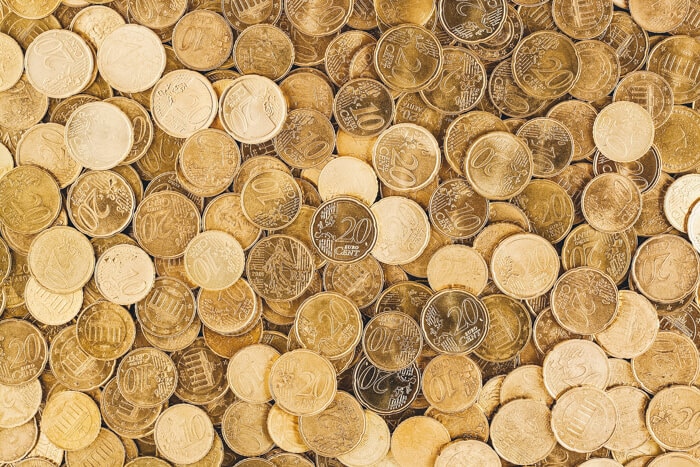
Those with a SIM card from an EU country don't have to pay roaming charges when calling, texting, or using data in Italy. The same goes for some global phone plans.
If you don't have a EU SIM but still want to have unlimited WiFi, check out Solis Wifi .
Skyroam offers both day passes and monthly subscriptions providing you with 4G throughout your trips. I've been using their daily passes not just when I travel outside the EU (no roaming charges for me in the EU) but also as a backup for when I think I'll go over my phone's data plan.
Tipping is welcomed in Italy but not obligatory. Some restaurants will already charge you for “bread and cutlery” which is basically a service charge in which case an extra tip isn't expected. Check out this section on tipping in Italy for guidelines on what to tip hotel staff, porters, and other tourism service providers.
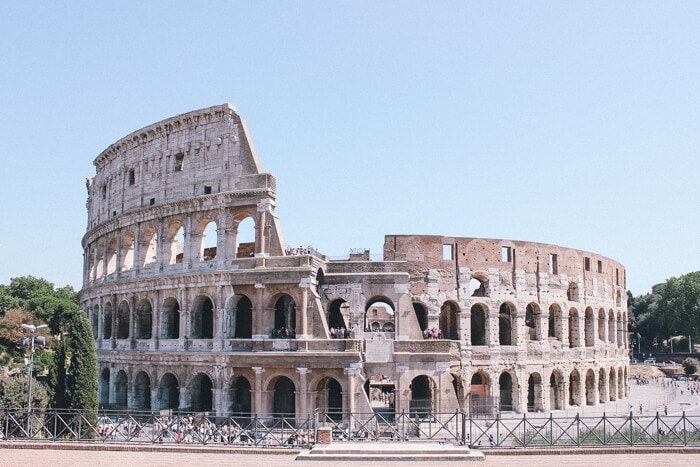
Fast forward to the 1300s and Italy played a central role in the Renaissance period that swept through Europe. After a devastating plague in 1348, which killed one-third of the population, the cities of Italy saw a resurgence as they worked to recover from the Black Death. The arts and culture scene boomed with the emergence of da Vinci, Botticelli, and Michelangelo.
Over the next couple of centuries, there was much warring between the different states of Italy. This continued until foreign invasions by the Germans, Spanish, Turks, and French began at the end of the 15th century. By 1559, the Italian Wars had ended and the next few hundred years were marked by religious and political turmoil.
Today, Italy is a hub of art and culture, but it still suffers from political turmoil. It is currently rated one of the most corrupt countries in the Eurozone, which has caused numerous political, social and economic issues for Italy and the Italian people.
And that's it! I hope you enjoyed these tips for visiting Italy. If you did, I'd really appreciate it if you could share my Italy travel guide so more people can use it to create their Italy travel itinerary.

15 fun things to do in Rimini, Italy – Rimini Travel Guide

15 fun things to do in Modena, Italy on a day trip

4 days in Rome: itinerary with fun things to do and see

Doing a Colosseum Underground Tour in Rome with Walks of Italy

Visiting the Enzo Ferrari Museum in Modena in Italy

Visiting the Lamborghini Museum in Sant'Agata Bolognese

75 fast facts about Italy that will surprise you

10 fun things to do in Parma, Italy in one day

6 fun city day trips from Bologna (+ a special country!)

Things to do in Ferrara, Italy on a day trip

Testing the Taste of Testaccio Food Tour in Rome, Italy

Where to stay in Umbria – 7 beautiful Umbrian towns to visit

Going on a Bologna Food Tour with Taste Bologna

17 things to do in Ravenna, Italy on a fun day trip

Visiting the little-known border town Gorizia in Italy

Food and fun things to do in charming little Grado, Friuli

Having the Vatican Museums all to yourself… at night
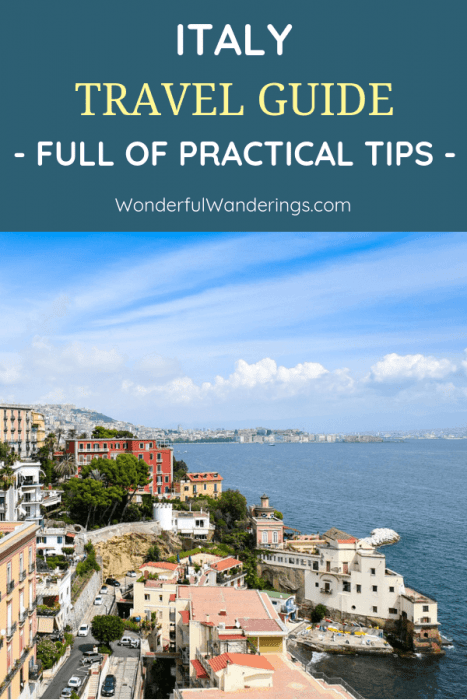
Join 58,000+ other Wonderful Wanderers!
As an Amazon Associate I earn from qualifying purchases.
- Travel recommendations
- The taste of travel
- Tips & tricks
- Travel experiences
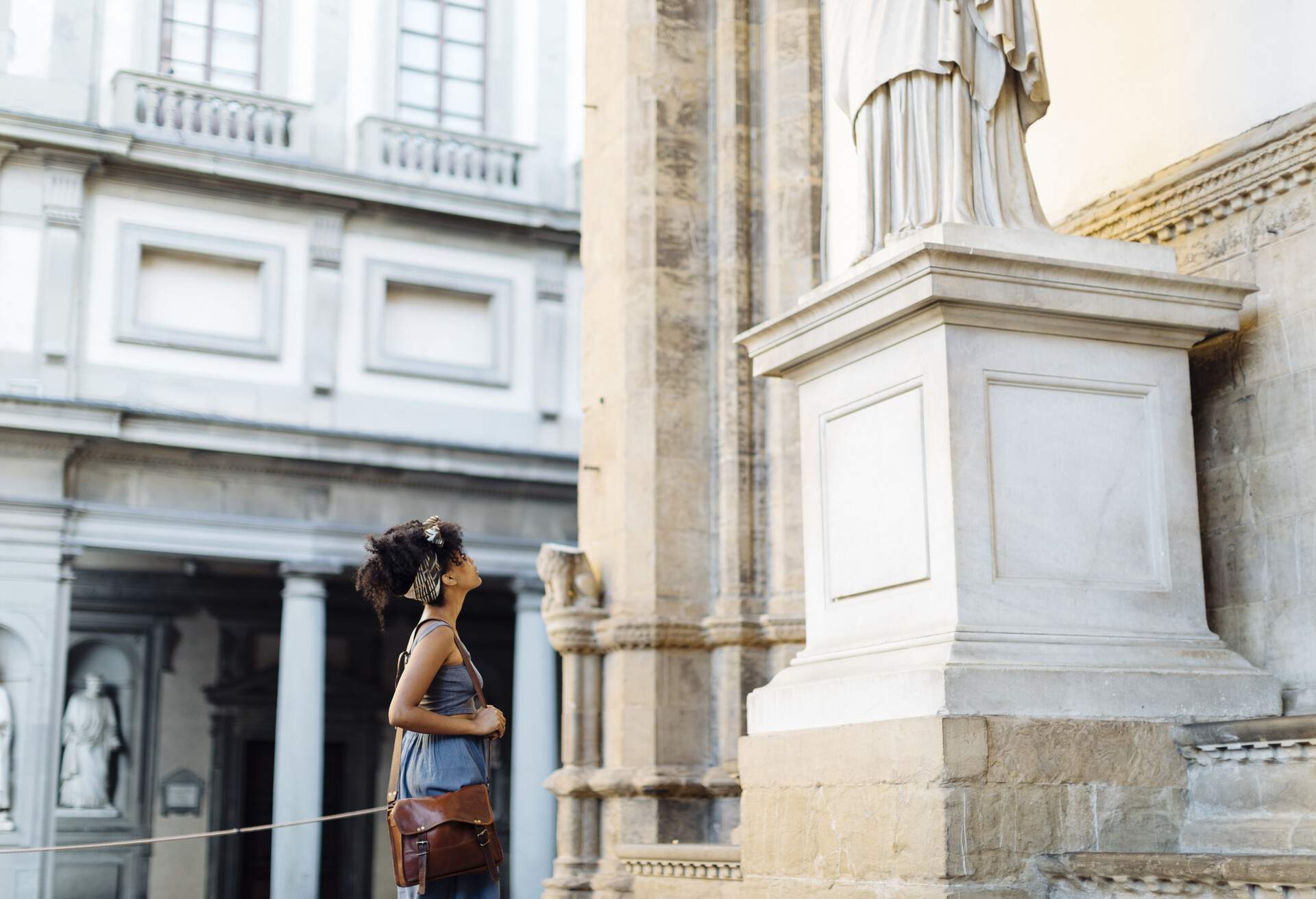
Explore these fun facts about Italy as you journey around the country

Europe’s 10th largest nation boasts world-famous cuisine, spectacular mountain ranges, breathtaking cultural landmarks and charming coastal communities.
Its cities are also among the most visited destinations on the continent, so come join us as we explore some fun facts about Italy . Informative, strange and often intriguing, they will certainly add flavor to your adventures around the country!
Fun facts about Italy
A historical perspective.
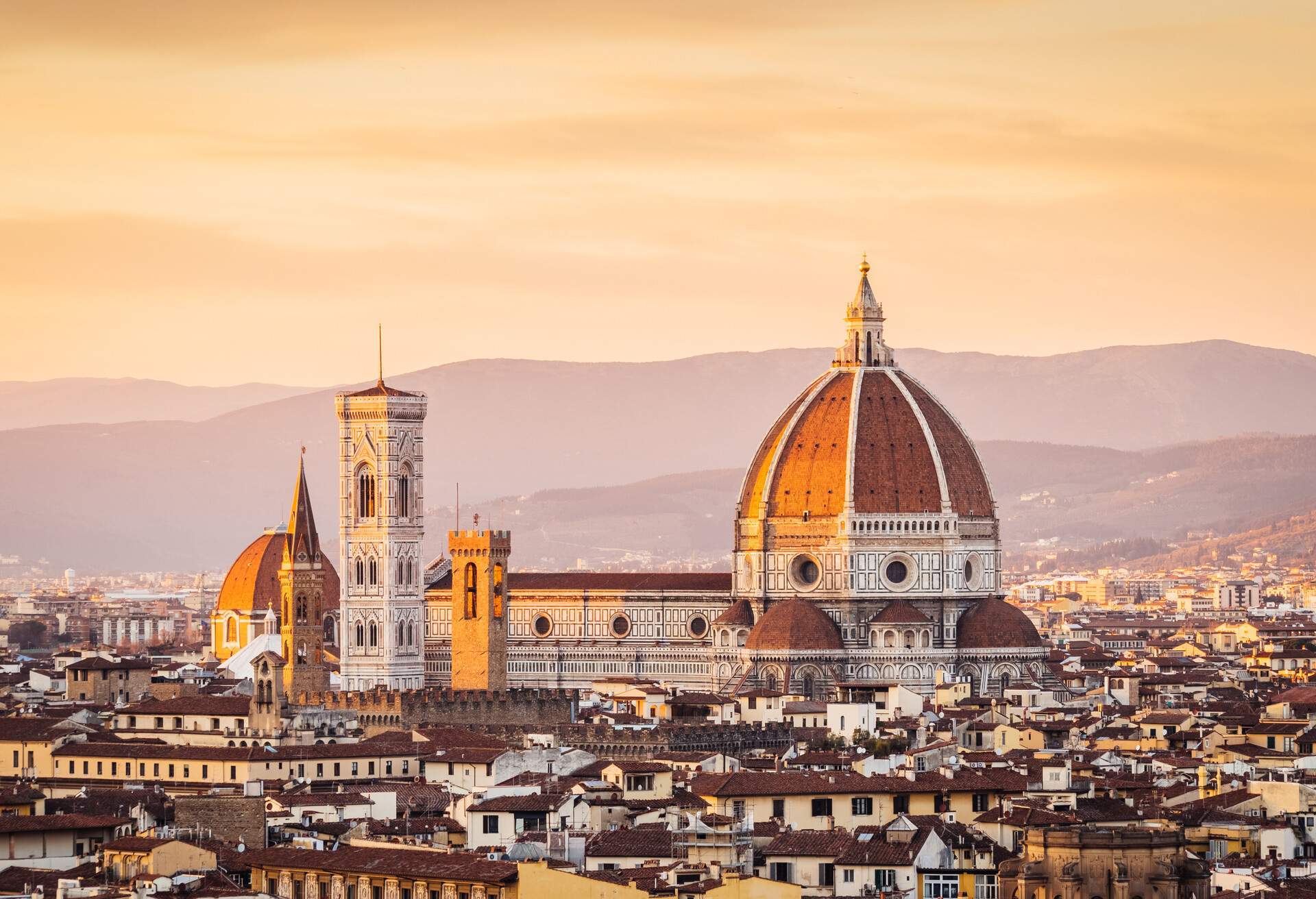
The history of Italy stretches back through antiquity when, according to legend, Rome was founded by the twins Romulus and Remus. The famous depiction of them being suckled by a she-wolf gained notoriety as the mighty Roman Empire dominated the world and it remains one of the country’s most potent symbols. The most famous of Italy’s many rulers is undoubtedly Julius Caesar, who is forever enshrined in Shakespeare’s famous play. Augustus (27 BC-AD 14) was the first emperor and Romulus Augustus was the last, before the empire fell to the barbarian horde.
During the Renaissance, several city-states rose to power, each ruled by dynasties as ducal territories. Of these, the Sforzas of Milan and the Medici of Florence stand head and shoulders above the rest; they almost single-handedly transformed the cities into wealthy and powerful centers for culture and commerce. The unification of these individual territories into modern Italy occurred between 1848 and 1871 with the exploits of Cavour and Garibaldi.
Trivia: Rome is actually the third capital of Italy, preceded by Florence and Turin.
A few geographical titbits
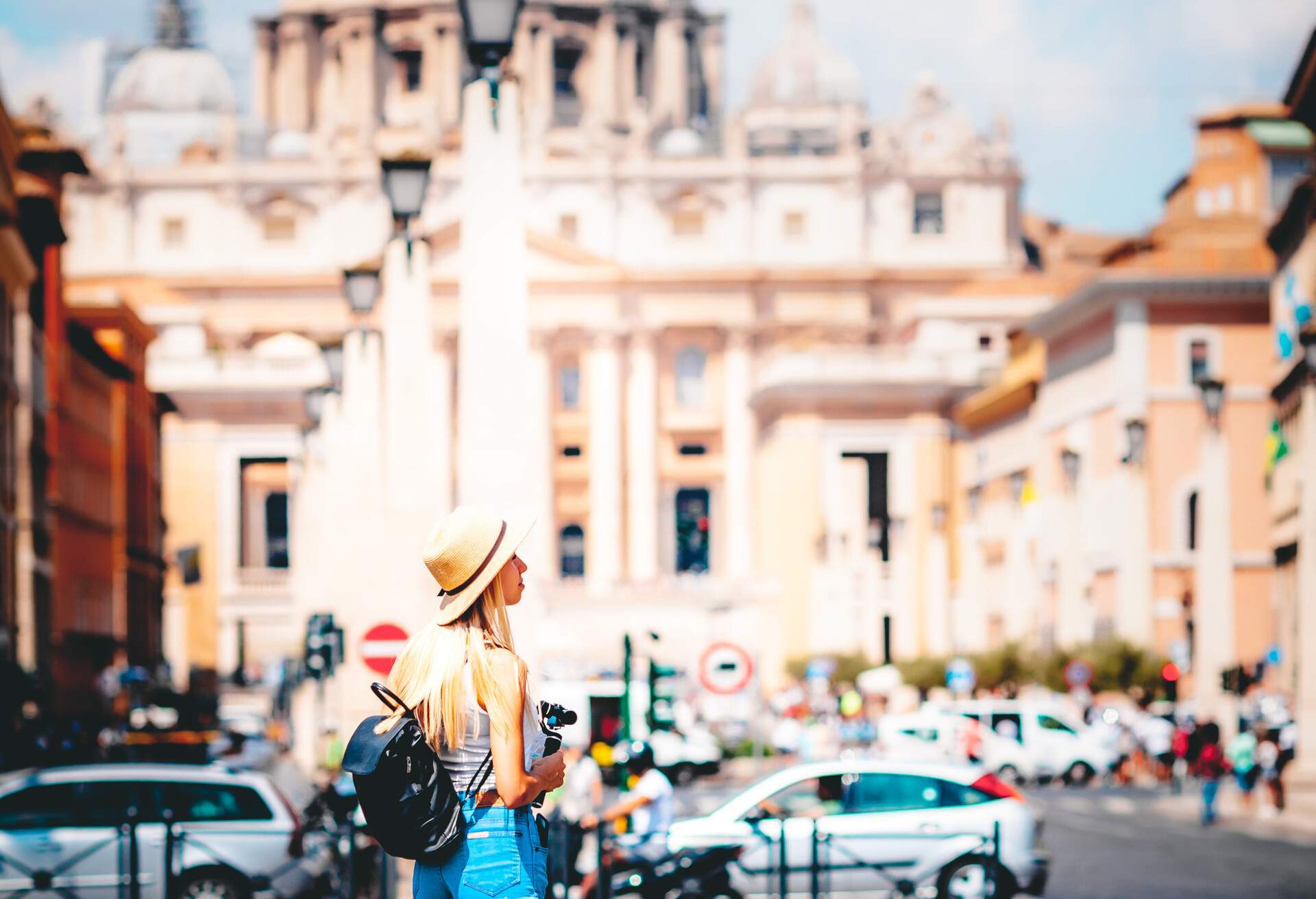
Unsurprisingly, the most fun fact about Italy is its iconic shape. Affectionately known as “Lo Stivale” by the locals, the rest of us have come to appreciate the enormous charm of “the boot” at the southern end of Europe. One thing is for sure: regardless of where you’re from, it’s always easy to locate the country on a world atlas.
Did you know that Italy also shares a border with six different countries? The nation counts France, Switzerland, Austria, Slovenia, San Merino and Vatican City as its immediate neighbors. The first three, the northern nations, all share the iconic Alpine mountain range, while Slovenia sits along the eastern border. San Marino and Vatican City are actually two independent territories, or “microstates”, located within Italy’s borders.
Italy has a huge number of mountains, and the enigmatic Mont Blanc in the Alps is Europe’s highest peak, at just under 16,000 ft. Meanwhile, the Apennines range stretches the length of the country from Turin to Sicily. These mountains are responsible for three of the world’s most famous volcanoes: Etna, Stromboli and Vesuvius, which are still active and erupt periodically. Etna, the largest volcano in Europe, is located at Etna National Park in Catania, Sicily.
Trivia: Italy is surrounded by four individual bodies of water: the Tyrrhenian and Ligurian seas to the west, the Adriatic Sea to the east and the Ionian Sea to the south.
Fun facts about Italy’s political structure and economy
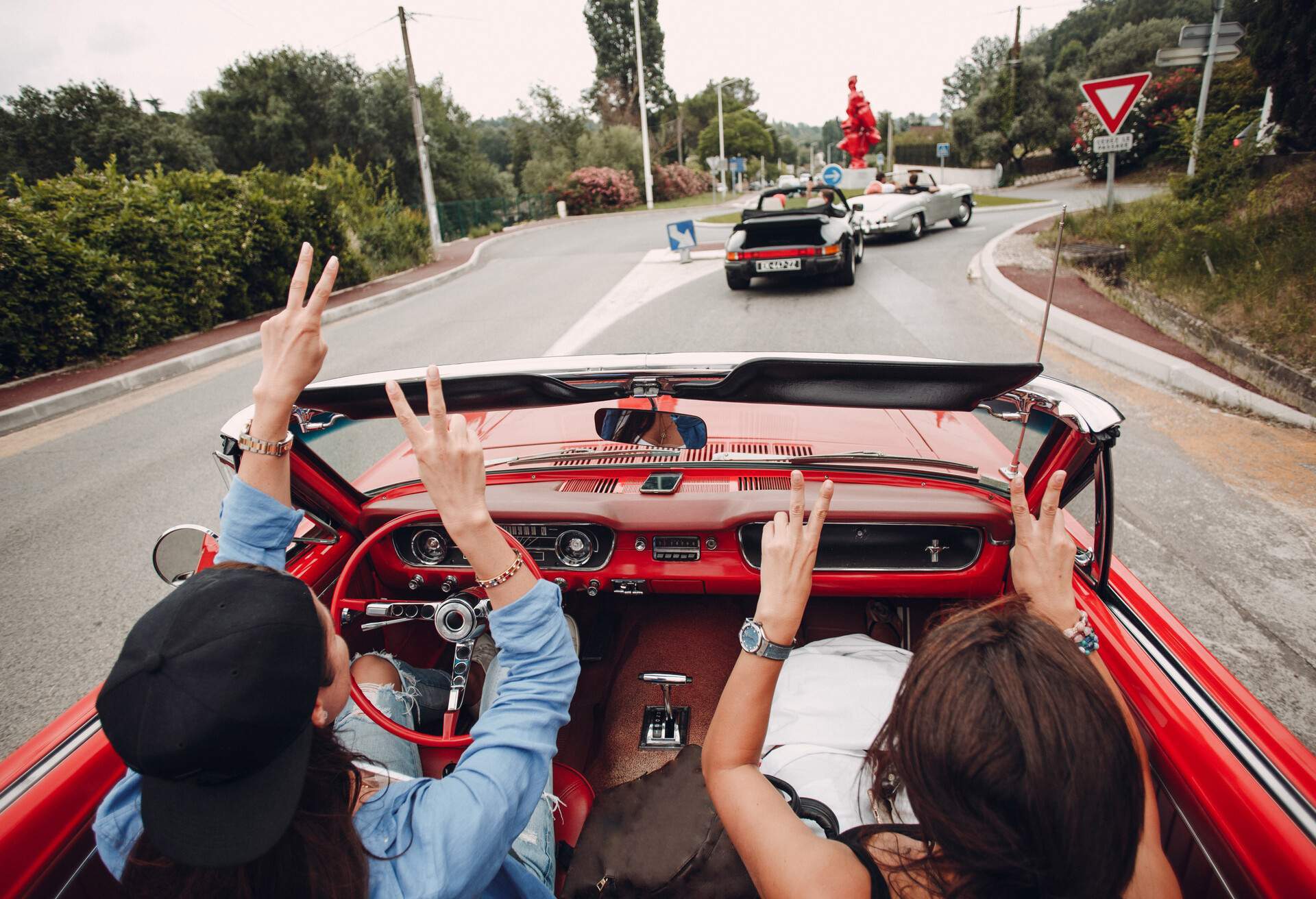
Italy was a kingdom before it became a republic in 1946. It currently has a president, though this is only a ceremonial position. The Prime Minister holds the reins of power and governs the country from the capital, Rome. While it also shares a bicameral (two-tier) system with countries like the UK, Italy is made up of a Senate and a Chamber of Deputies.
As a founding member of the European Union, Italy’s economy ranks eighth largest in the world and the fourth largest in Europe. For comparison, the UK comes in at number six on the global ranks and second on the continent. Tourism is one of the main drivers of the economy, and when it comes to annual visitors, Italy draws them by the tens of millions to claim the fifth spot on the global charts.
The nation also produces a significant quantity of luxury sports cars. In fact, some of the world’s fastest and most iconic brands like Lamborghini, Ferrari, Maserati and Alfa Romeo are all made in Italy. Only one of these, however, can claim to be champion of Formula One. If you’re a dedicated Tifosi fan, Maranello in the province of Modena is considered hallowed ground.
Trivia: Ferrari Scuderia holds the record for F1 World Championships, with 16 Constructors and 15 Drivers titles.
Italian culture and society

The country is one of the world’s cultural capitals and its impressive list of 59 UNESCO World Heritage sites has long led the way in this category. Florence is revered as the birthplace of the Italian Renaissance, gifting to the world a spectacular list of artists. Painters and sculptors such as Della Francesca, Botticelli and Michelangelo keep company with writers/poets like Dante Alighieri and Giovanni Boccaccio. Dante is considered the father of the modern Italian language and his Divine Comedy ranks alongside Chaucer’s Canterbury Tales as the two greatest works of the Medieval period.
Italians may live a beautiful life, but it is a little-known fact that for some Italians, it’s also a very long one. Life expectancy rates in this nation are among the highest in Europe and the second-highest in the world after Japan. The southern island of Sardinia holds the distinguished honor of being among the world’s five Blue Zones, where reaching the age of 90 is the norm rather than the exception. If you want to discover their secrets to eternal youth, booking a trip to the island is the best way to start.
Trivia: the University of Bologna predates the University of Oxford by about 12 years and is the world’s oldest institution of higher learning still in existence.
Fun facts about Italy’s cuisine
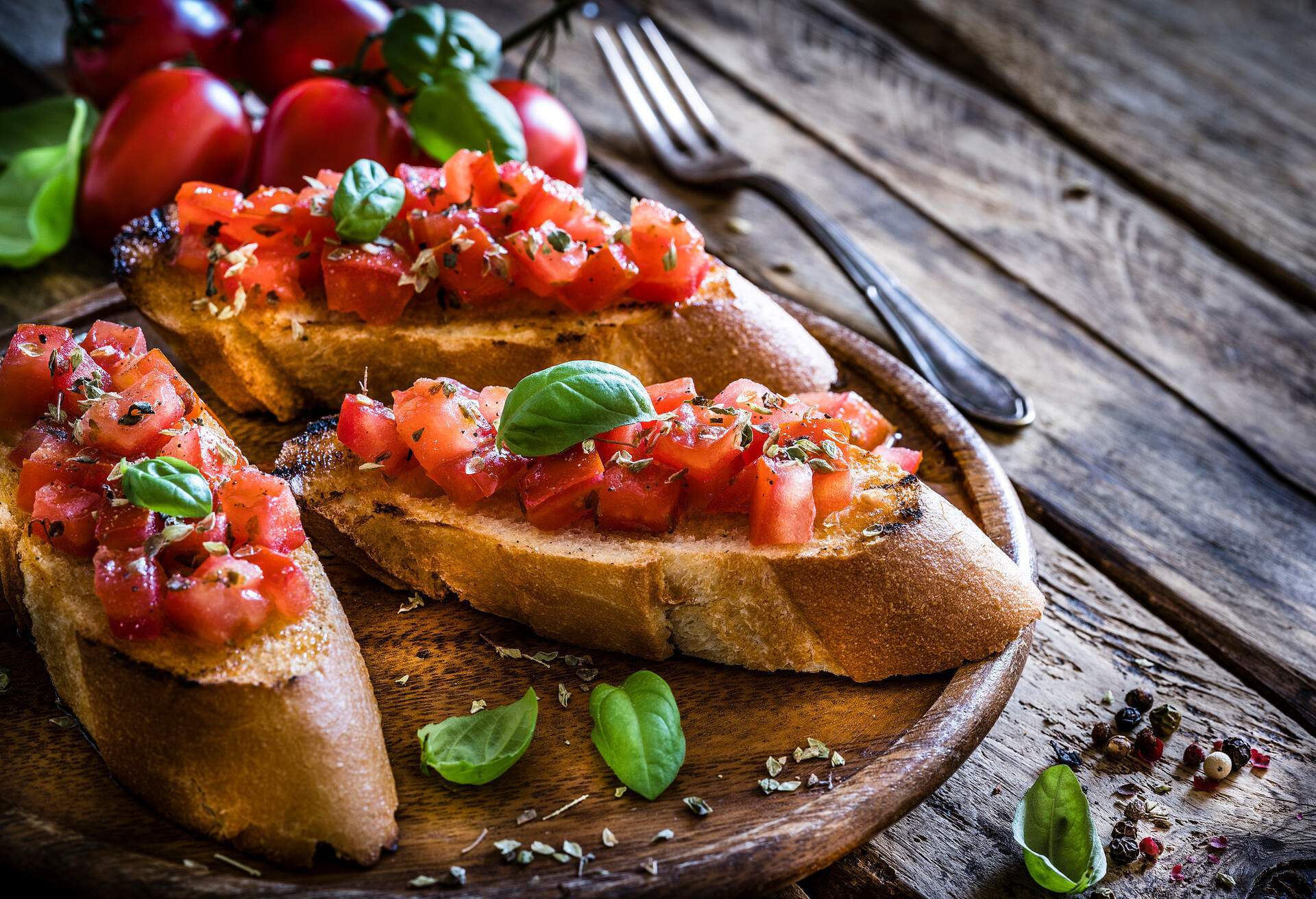
When it comes to food, few countries can match the culinary delights of Italy. From pasta (in all its delicious varieties) to the delectable sauces that flavor them; from sweet desserts like tiramisu and cannoli to breakfast beverages like cappuccino and espresso, Italy has transformed the ritual of eating into a fine art and spread its influence far across the globe.
The most famous food in Italy by a mile is pizza, which is traditionally made as pies, although Sicilians favor square slices. Among pasta dishes, spaghetti, linguine and lasagna are hugely popular, while Bolognese is the ragu or sauce most widely used. Moreover, the capital city of the Emilia-Romagna region is widely regarded as the country’s food capital.
Trivia: the average Italian consumes about 55 lbs of pasta annually!
Miscellaneous facts
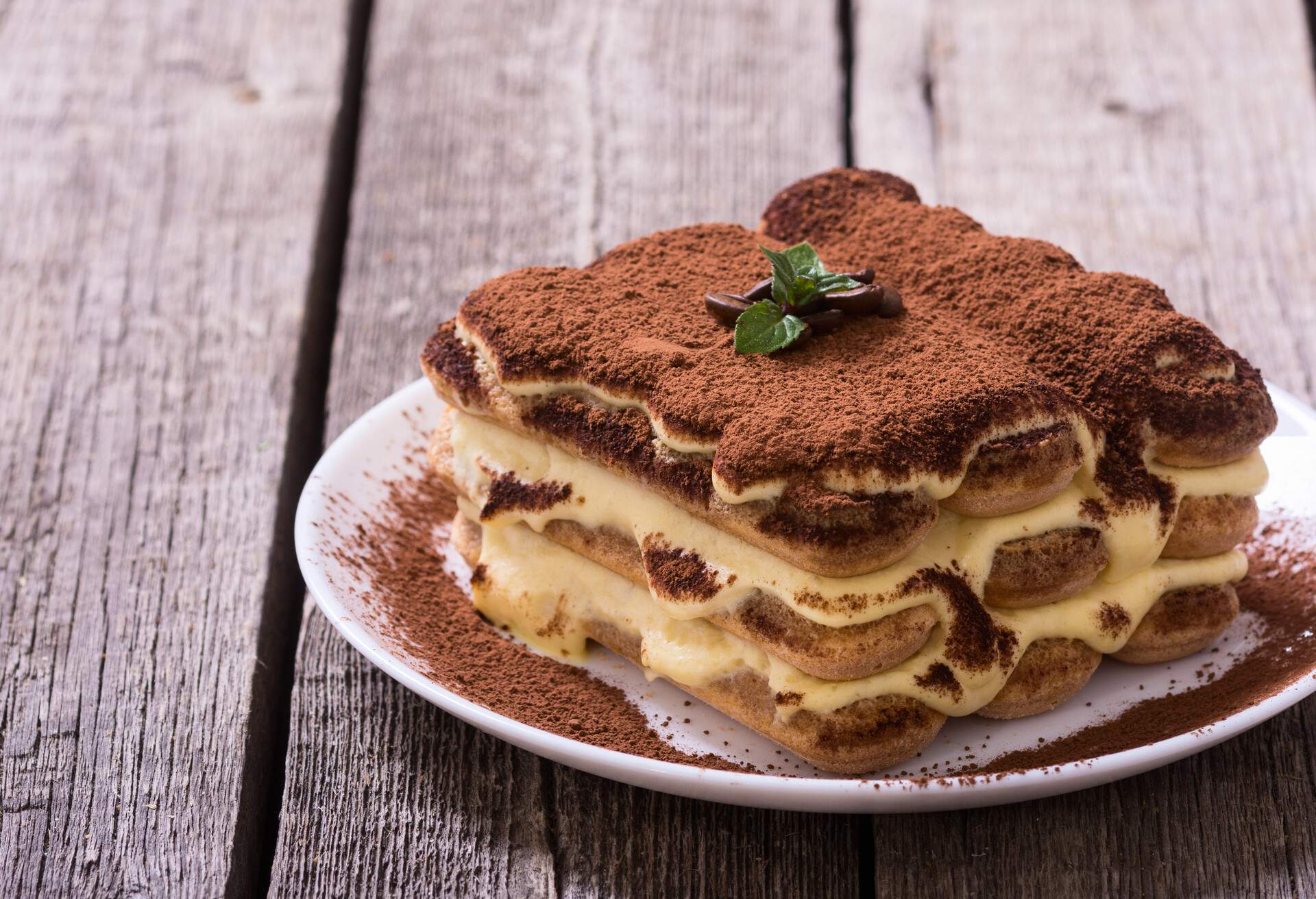
There are a few other items that deserve a place on our list of fun facts about Italy. For example, we can’t ignore the fact that despite its universal appeal, ice cream is actually less nutritious than gelato. Another fascinating one is the meaning of the word tiramisu. If you break it down, tira (pulls), mi (me), su (up/over) really refers to a pick-me-up, which is what the legendary dessert was designed to do after the customary multi-course Italian dinner.
For sheer imagination alone, we have to include the fact that the city of Venice was built to protect locals from invading barbarians. Over the centuries, it’s estimated that more than 10 million logs have been used to keep it afloat. Unfortunately, the city is sinking at an accelerated rate due to over-construction and climate changes, so if you’ve never visited, the clock is quite literally ticking. Lastly, there’s an impressive wine fountain near Pescara that flows every hour on the hour, 365 days a year, and was originally installed to quench thirsty pilgrims from Rome.
Excited for your next adventure? Our friends at Where to Go, produced by the team behind the award-winning DK Eyewitness travel guides , are here to help!
Each fortnight, hosts James and Lucy talk to local experts about the destination they have chosen to call their home, exploring their personal connection to the place, what makes it so special and the best things to see and do.
Listen to the podcast below for more inspiration and tips from Italy:
About the author

Explore more articles
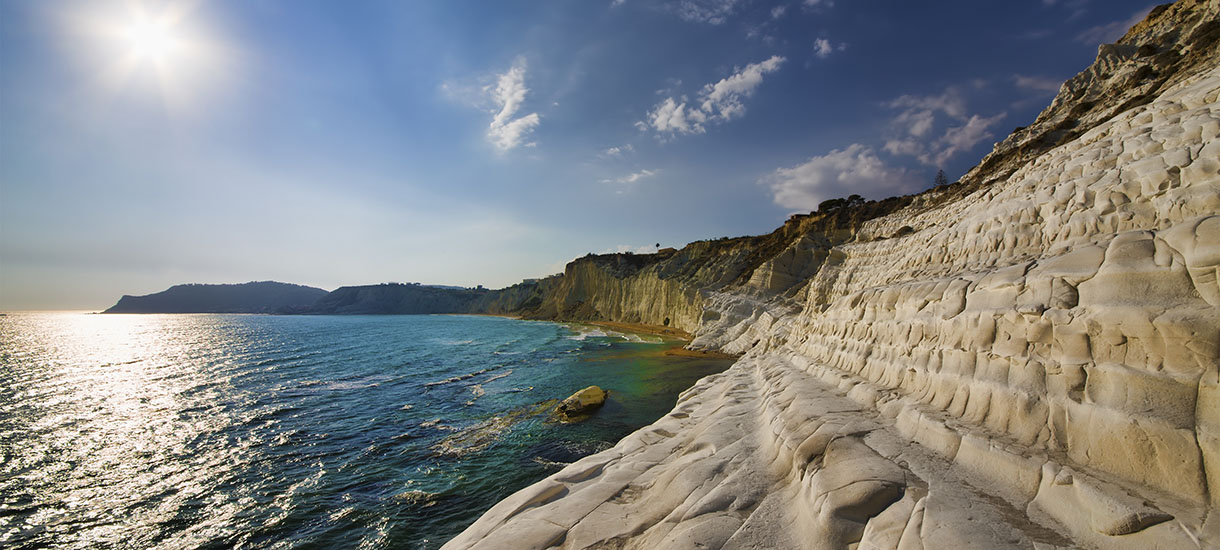
California consumers have the right to opt out of the sale * of their personal information. For more information on how we securely process personal information, please see our Privacy Policy .
Do not sell my info ON
* The definition of "sale" under the California Consumer Privacy Act is applicable only to California consumers.
News for Kids
- Dominican Republic
- Netherlands
- New Zealand
- Papua New Guinea
- Philippines
- Puerto Rico
- South Africa
- South Korea
- Switzerland
- United Arab Emirates
- United Kingdom
- United States of America
- 7 Continents
- Australia/Oceania
- North America
- South America
- Chinese New Year
- Elections 2024
- Olympics 2024
- European Union
- Trivia & Quizzes
- Solar System Quiz
- Travel Reviews
- Travel Health
- Travel Links
Competition 2024
- Winners 2023
- Winners 2022
- Winners 2021
- Winners 2020
- Winners 2019
- Request A Correction
Italy Facts
Interesting facts for kids.
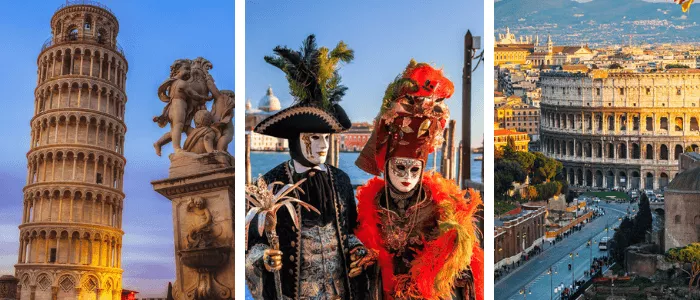
Here are some interesting Italy Facts which were chosen and researched by kids especially for kids.
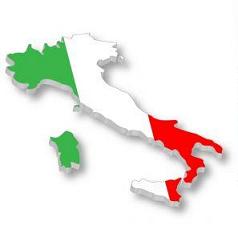
- Population : About 59 million people live in Italy (2024)
- Capital : Roma (Rome) with 4.3 million inhabitants
- Name : Repubblica Italiana (Italian Republic) or simply: Italia , Nickname: ' Bel Paese ' which means beautiful country
- Government : Democracy, Republic
- Language : Italian. Official minority languages are German, French and Ladin in some regions in Northern Italy
- Literacy : More than 98% can read and write
- Religion : mainly Christians (80%, of theses most are Roman Catholics)
- Currency : 1 euro = 100 cents, before 2001: Italian lira
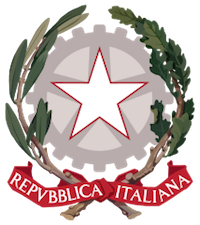
- History : Rome was founded in 753 BC by the twins Romulus and Remus. The Roman Empire was founded in 27 BC and Augustus Caesar proclaimed himself emperor of Rome in 31 BC. After the Roman Empire broke down in 395 AD, there were many separate kingdoms and city states. Italy became one nation only in 1861. Since then the country also includes the islands of Sicily and Sardegna. The 'Kingdom of Italy' lasted from 1861 until 1946. During the Second World War, Italy's Prime Minister Benito Mussolini sided with the German Nazi regime. The Italian Republic was formed in 1946.

- Prime Minister : Giorgia Meloni (since 2022)
- National Day : 2 June ( Festa della Repubblica )
- National Symbols : Italian grey wolf (national animal), red rose or white lily (national flowers) and the white five-pointed star with a thin red border line
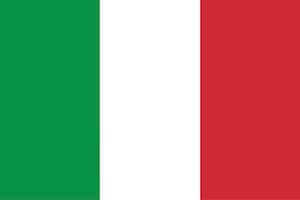
- Flag : 'Tricolore' with green, white and red coloured vertical bands. The flag colours are said to represent these virtues: hope (green), faith (white), and charity (red)
Italy Facts Where is Italy?
Italy is a country in Southern Europe. The country is located on a peninsula in the Mediterranean Sea.
The Adriatic Sea borders the eastern side of the peninsula while the Ligurian Sea and the Thyrrenian Sea border the western coastline of Italy. The Ionian Sea is to the south of the peninsula.
Italy borders six countries: France , Austria , Switzerland , Slovenia, Vatican City and San Marino. Both, Vatican City and San Marino, are enclaves within Italy as you can see on the map.
The country is eas y to recognize on any world map, as the country is shaped like a high-heeled boot, as yo u can see on the map above. The island of Sicily could be imagined as a ball, so that it looks like the boot is kicking a ball, don’t you think?
Italy is slightly larger in size than the three countries of the UK, the Netherlands and Belgium combined or about as big as the state of Arizona/ USA.
A flight to Italy's capital city Rome takes roughly 2.5 hours from London/ UK and about 8 hours from New York/ USA.
Italy Facts | Italy Geography
Italy has more than 7,600 km/ 4,722 miles of coastline as the peninsula is located for a large part in the Mediterranean sea.
Italy is popular for its many picturesque ports, scenic lakes and sandy beaches.
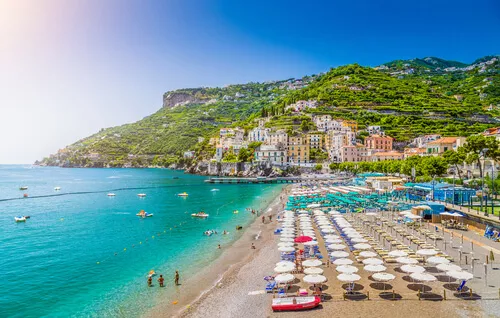
Italy has two bigger islands, Sicily to the south and Sardegna to the west.
Two islands of Italy, Lampedusa and Lampione, are located far to the south and are closer to Africa than to Italy. Both islands are on the African continental shelf.
There are many smaller islands such as Capri, Ischia and Elba which are all to the west of mainland Italy.
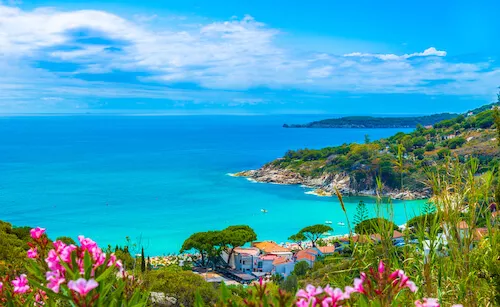
The main cities in Italy are Roma/Rome, Milano/Milan, Firenze/Florence and Napoli/Naples.
The Alps and the Apennines are the two main mountain ranges in Italy. About 40% of the country is covered by hills and mountains.
In the North, the mountain range of the Alps separates Italy from the other European countries France, Switzerland, Austria and Slovenia.
The highest mountains of Italy can be found in the Alps. The Dolomites are a part of the Alps mountain range in Italy's north and many of the peaks are above 3,000 m/ 9,843 ft high!
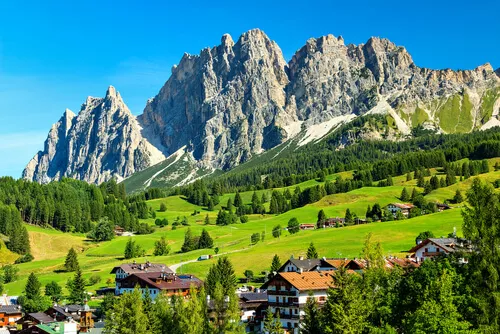
There are many lakes in northern Italy, in the centre of the country, the landscape flattens, this flat area is called the Po Valley.
The Apennines mountain range run all the way down the boot and separates the eastern and the western regions of Italy.
And did you know that in Italy, there are still active volcanos?
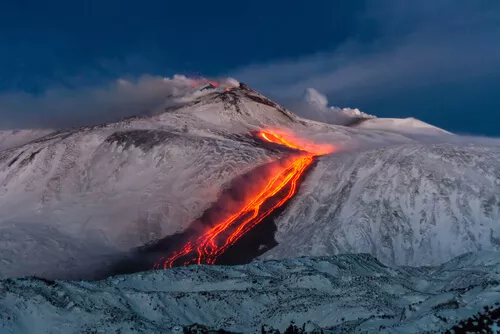
In the South of Italy you will f ind Italy’s three active volcanoes: Vesuvius near Naples, Etna on Sicily and Stromboli off the Coast of Italy.
Italy Facts | Italy Geography Superlatives
Here are some fascinating Italy facts that are always good to know:
- Italy's largest island is Sicily. This island is also the largest island in the Mediterranean Sea.
- The biggest city of the country is Rome with 4.2 million people.
- The highest mountain peak in Italy is Monte Bianco , better known as Mont Blanc, which is 4,807 m or 15,776 ft. high.
- The longest river in Italy is the Po River in Northern Italy with a length of 652 km/ 405 miles.
- Lake Garda is the largest lake in Italy. It is located in northern Italy and famous for the winds that attract many surfers to its shores.
- The longest border to any neighbouring country is shared with Switzerland. This border is 698 km/ 434 miles long.
- The Etna is the most active volcano in Europe . It is located on the island of Sicily.
And again, remember, Italy surrounds two of the world’s smallest countries! These are San Marino in Northern Italy, which is also the oldest republic in the world, and Vatican City in Rome, the smallest country in the world.
Read about the most famous landmarks in Italy on our separate page here.
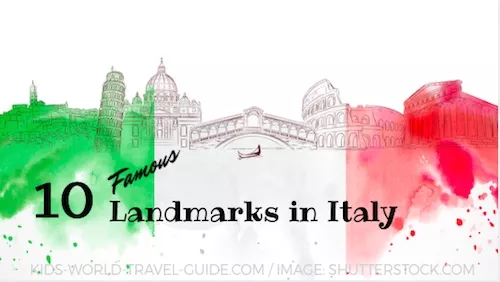
Italy Facts Italy Attractions for Kids
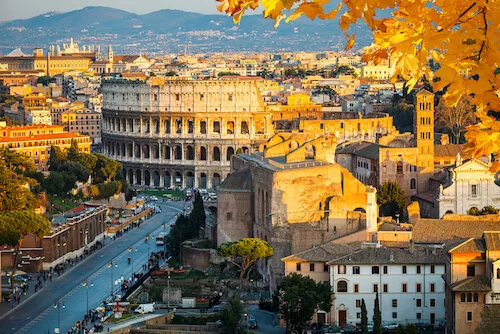
- Rome : Italy's capital city is a wonderful place to learn about the Romans and ancient history. There are so many historic sites in the city that is nicknamed 'Eternal City' and you must visit historic monuments as as the Foro Romano (Forum Romanum) with its ancient Roman ruins or the Colosseo.
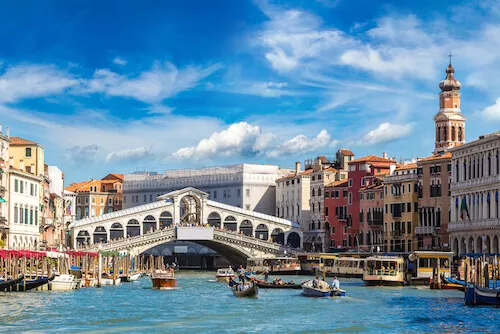
- Venice : This Northern Italian city is often referred to as 'Lagoon City' or 'The City of Masks'. The Italian name of the city is Venezia. Venice is famous for its canals, bridges and gondolas. The city is built on 120 islands and is known for its colourful carnival.
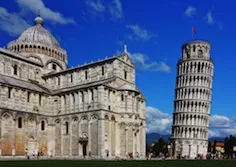
- Pisa : The city on the river Arno is famous for its duomo and the leaning tower. One just must experience the Leaning Tower of Pisa which dates back to the 12th century. The bell tower of the main cathedral of the city is as fascinating as the colourful decorated churches.
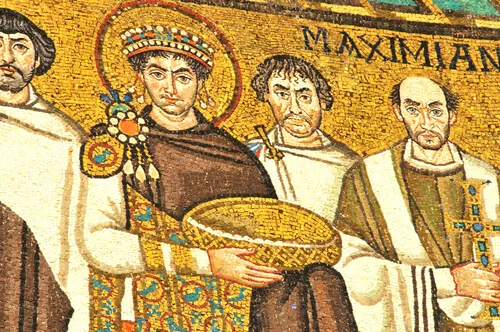
- Ravenna : The city is famous for the ancient colourful mosaics that decorate the city's churches. The extensive mosaic decorations date back to the 5th century and are fascinating artworks to explore. The city was once on of the main centres of Roman Christian art.
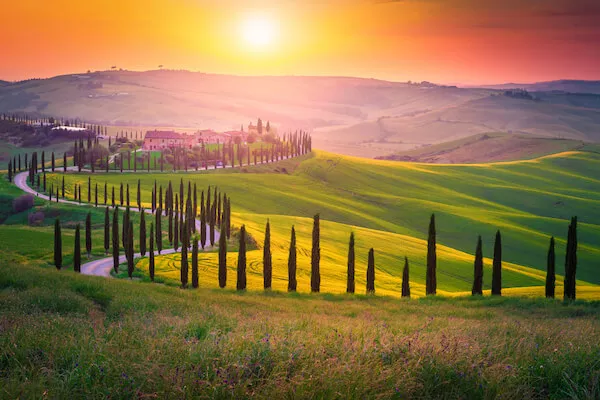
- Tuscany : The Tuscany is a popular tourist region with scenic countryside in central Italy. The rolling hills invite for hiking trips and there are lovely medieval towns such as San Gimignano, Lucca or Montepulciano. The capital of the Tuscany region is Florence.
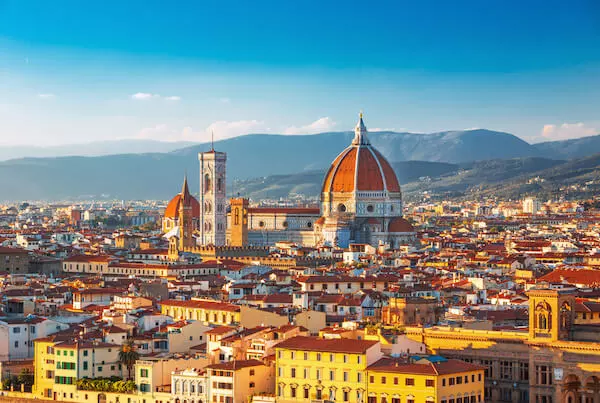
- Florence : This city in Tuscany called Firenze in Italian is known for its arts museums and historic churches, Renaissance art and architecture. Many of the great Italian artists such as Michelangelo or Leonardo da Vinci once lived in this city.
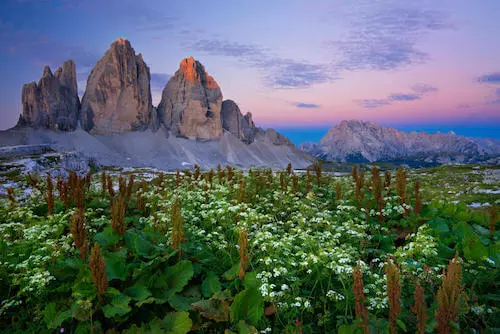
- Dolomites/Dolomiti and Italian Alps : The provinces in Northern Italy are renowned for fabulous skiing, hiking and mountainside holidays. You should also to visit South Tyrol's capital Bolzano. In the city’s Natural History Museum you can marvel at Oetzi, a mummy from the Ice-age.
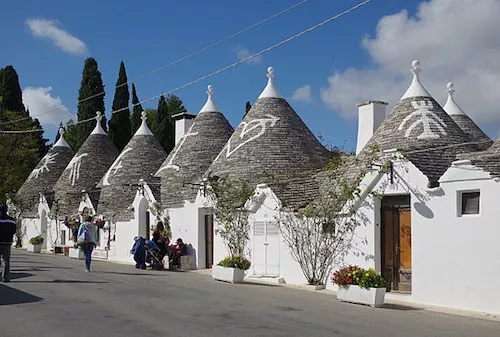
- Alberobello : This small town is located in Apulia ( Puglia in Italian). This town in southern Italy is known for its historic stone huts with cone hat-roofs. These unique houses are called trulli.
Read here about the most famous Italian landmarks and attractions here.

Italy Facts | Italian People
Italy is quite densely populated, with most people living in the country's northern regions. The Po Valley, also referred to as Padan Plain, is an area with many industrial centres. Almost half of Italy's population live in the Po Valley. The Po Valley's biggest cities include Milan (Milano), Modena, Turin (Torino) and Verona.
Milan is the main industrial centre of Italy and also known to be one of the world's fashion capitals.
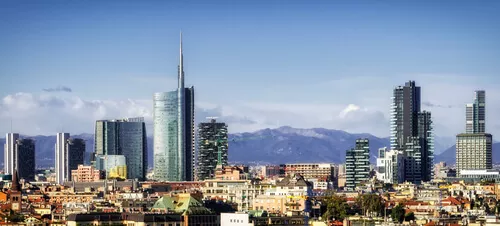
Italians lead a modern lifestyle especially in the urban centres but they also celebrate century-old cultural traditions. Famous festivals that are celebrated annually are the carnival celebrations before Lent. In Venice, these are said to originate in the 12th century.
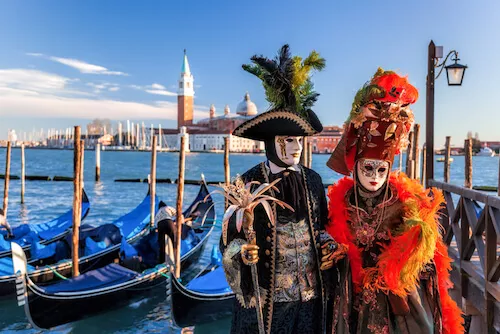
The Palio in Siena is dating back to 1644 when the first horse race in the city's main square was held.
And of course, Italians love soccer! The admittedly quite brutal Calcio storico match is still played and celebrated in Florence once a year. C alcio means soccer in Italian.
The Italian soccer league is followed by many Italians abroad too: Inter Milan, Lazio Roma and Juventus Turin are just some of the Italian soccer teams which are favoured by Italians.

Soccer, skiing, cycling, surfing or motor racing are just some of the sports Italians have very strong interest in.
The family is very important for Italians, where there are still many big families including grandparents, parents and children in the household.
Italians love their food, which is usually prepared freshly by ' la mama ', the mother, or the nonna , the grandmother.
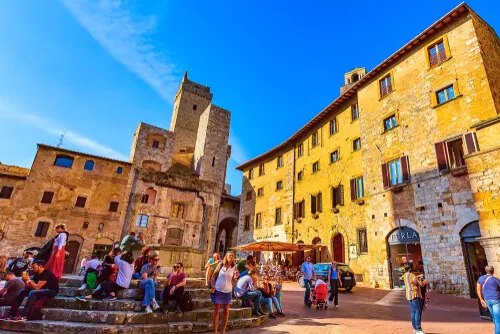
In the afternoon or evening it is common to meet up with family and friends on the piazza. The piazza is the main square of the village or town.
Italy Facts | Famous Italians

Italians are famous for their inventions and discoveries. The Italian explorers Christopher Columbus and Amerigo Ves pucci explored many places in the Americas while Marco Polo travelled extensively in Asia.
Leonardo da Vinci was a scientist and artist who was the first to prove the world is round and not flat.
Alessandro Volta, was the prioneer who did studies in electricity, hence the name 'Volt' describing a unit of electricity.
Did you know that Italians also invented the piano and the thermometer?
More Italy Facts about Famous Italians for Kids: Explorers, Inventors and more
Italy Facts | Italian Language
Italian is a Romance language and the language roots are in the Latin language. Italian is very close to French, as 89% of the vocabulary are shared, and 82% is shared with the Spanish vocabulary.
Italian is an official language not only in Italy but also in Switzerland, San Marino and Vatican City.
The Italian alphabet consists of 21 letters only. The letters j, k, w, x and y do not exist, except for lean words, that means words that originate in another language.
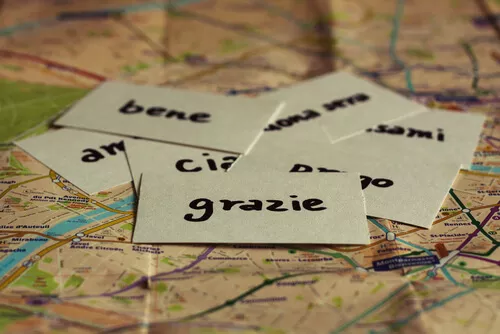
Italy Facts: 10 useful Italian words and terms
- ciao - hello
- grazie - thank you
- prego - please, you are welcome
- bene - good
- come stai ? - how are you? (informal, with family and friends)
- sì - yes
- scusami - excuse me
- ho fame - I am hungry
- ho sete - I am thirsty
The pronunciation is soft and very melodic and so the language is used in opera and also popular by young pop music artists.
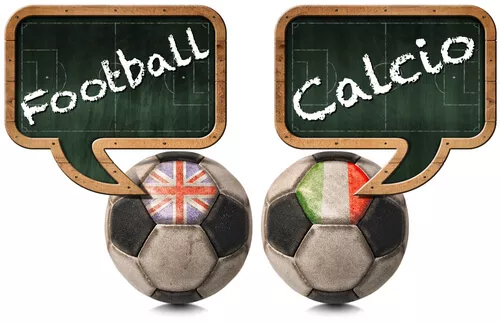
Most young people in Italy learn to speak English, French or German in school.
In remote rural villages in Italy's northern regions, some of the older people, however, do only speak a little Italian and still mainly use a regional language such as German in the Alto Adige or French in the Valle d’Aosta or the unique Ladino (Ladin) language in the Trentino.
Italy Facts | Italy Economy
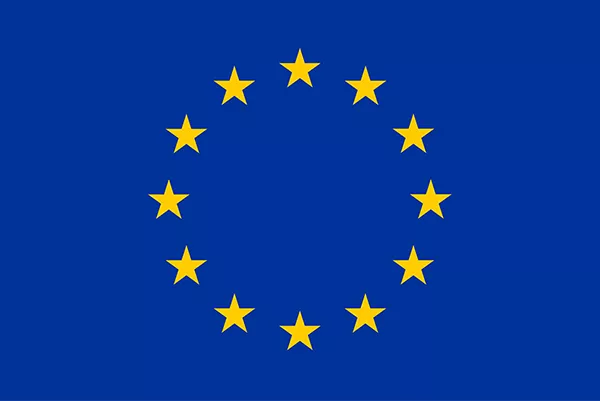
Italy is one of the original six founding countries of the European Union with Germany, France, Belgium, Luxembourg and the Netherlands. Read more about the European Union here.
Italy's extreme northern regions and most parts in Southern Italy are used for agriculture. In the North the main produce are dairy products and grains, while in the south mainly fruits and olives are harvested.
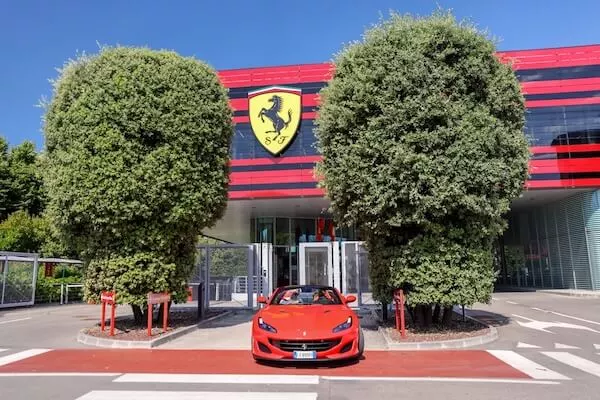
Italy also has a lot of industry especial in the country's north around Milan. Among the famous Italian brands are: Ferrari, Lamborghini, Fiat (car manufacturers), Gucci, Prada (fashion) and Ferrero (food - Nutella) or Barilla (food - spaghetti and pasta).
The main trading partners of Italy are Germany, France, the USA and China.
Italy Facts | Italian Food
The Italian main dishes often contain pork and beef, seafood as well as potatoes, rice and pasta (wheat and egg noodles) products and of course, tomatoes.

Pizza is surely one of the most famous exports and in Italy pizza is usually baked in a wood-fired oven. Italian pizza is very thin, but loaded with fresh vegetables or thinly sliced ham, salami, artichokes or olives.
The Italian pasta (variety of noodles) is renowned worldwide and there are more than 200 different shapes.
Italians love their food and many dishes are based on fresh vegetables and seafood too. There are delicious sweet cakes in Italy, such as p anettone (a yeast cake with raisins), p anforte (a hard and flat fruit cake) and almond cookies such as amaretti .
Here is some typical Italian food:
- Pizza : probably the most famous Italian dish, pizza was is said to have been invented in Napoli (Naples in English) around the year 1860
- Spaghetti : long thin pasta/noodles served with a large variety of topping or sauce
- Calzone : this folded-up pizza bread is filled with tomatoes, ham, cheese and all kinds of other filling
- Pesto : a thick green sauce made with olives, basil or other herbs and olive oil, pine kernels and parmiggiano, which is an Italian hard cheese
- Gelato : ice-cream is another famous Italian invention
- Lasagna : this layered pasta dish is made with layers of pasta sheets, tomato sauce, mozzarella cheese and mince meat
- Mozzarella : Italian soft cheese balls, that originally were made mainly from buffalo milk, but today mozzarella is often made with cow's milk
Did you know that Italians eat spaghetti only with a fork and don't use a spoon?

Read more about Italian Food here.
Italy Facts | Animals in Italy
One third of all European animal species can be found in Italy. The country also houses half of all plant species that grow in Europe.
There are over 4,770 endemic species in Italy. Endemic means that these animal species are native and only exist in Italy. There are about 100 mammal species and over 500 bird species. Among the species that you might encounter are the unique Sardinian deer and the Corsican hare.
There are 20 national parks in Italy and 16 Marine Reserves to ensure the protection of threatened species such as the Italian shark or the Italian wolf, the national animal.

Italy Facts for Kids : Sheep are held mainly in Southern Italy and donkeys still help farmers in remote villages as they are trained to carry heavy loads over steep terrain.
Brown bears are protected in Italy. There are only few bears left in the wild now.
In the Alps you will very likely see marmots, a ground squirrel species, which call each other with very high pitched calling sounds. And if you are very lucky you might even spot a lynx, a wild cat with little hair tuffs on the ears!

Read the fascinating essay about wildlife, and especially about white lions, by Lorenzo Pelagatti, student from Italy, here.

Resources for Italy Facts
- Central Intelligence Agency. "Italy." WorldFactBook . Last updated 22 March 2023. Last accessed 29 March 2023
- Città di Venezia. " C arnevale di Venezia." Venezia . Last accessed 29 March 2023
- Italia Agenzia Nazionale Turismo "Italia." Italia.it . Last accessed 29 March 2023
Popular Pages | Italy for Kids
More about europe.

Return from Italy Facts to KidsWorldTravelGuide Homepage
Competition 2024 is open!

Would you prefer to share this page with others by linking to it?
- Click on the HTML link code below.
- Copy and paste it, adding a note of your own, into your blog, a Web page, forums, a blog comment, your Facebook account, or anywhere that someone would find this page valuable.
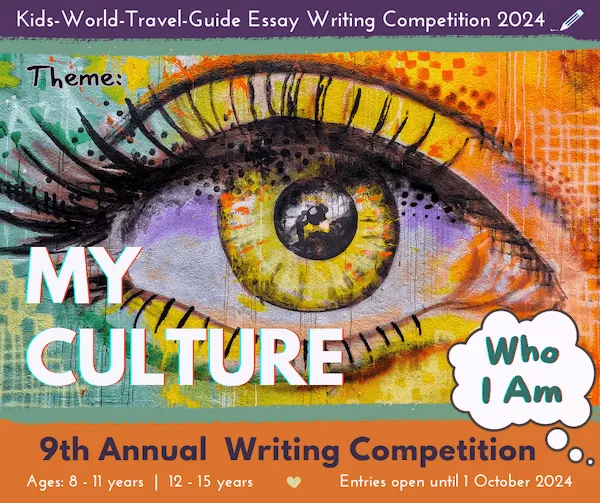
Events & Celebrations
Organisations, games & quizzes, travel tips, competition, recent articles.
Facts about Monaco for Kids | Europe facts for kids | Travel | Monaco
Jun 24, 24 10:23 AM
Mexico Facts for Kids | Mexico Attractions | Food | People | Geography
May 30, 24 04:44 AM
Central America Facts for Kids | Geo for Kids | Geography | Americas
May 30, 24 04:18 AM
More about Italy

More about Countries in Europe
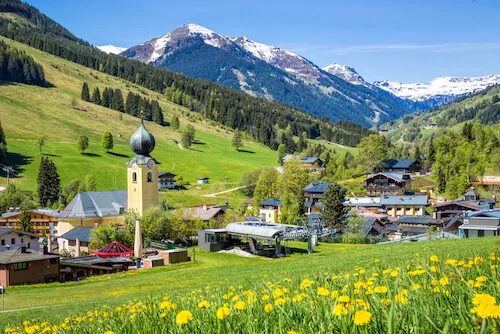
Temperature in Celsius
Temperature in fahrenheit.
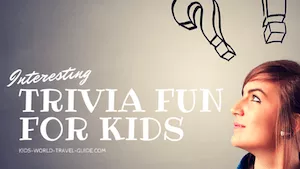
Do you like what you read?

More about Christmas

Winning Essays 2021

Winning Essays 2022

Winning Essays 2023

Like us on Facebook
Kids World Travel Guide
Brilliantly
Content & links.
Verified by Sur.ly
©Kids-World-Travel-Guide.com 2010-2024 | Created by Regina Gräff and KidsWorldTravels
All rights reserved | Privacy Policy | Disclaimer

12 amazing ways to experience Italy

Jan 11, 2024 • 8 min read

Few joys compare to discovering the beauty of Italy with friends © MStudioImages / Getty Images
With its awe-inspiring art, architecture and culinary delights, Italy has been a star of the world stage for millennia.
The epicenter of the Roman Empire and the birthplace of the Renaissance, this European virtuoso practically groans under the weight of its cultural cachet. The challenge for any visit to Italy is not so much where to go – an amazing experience is honestly assured wherever you end up – but rather how to go about it.
The following advice on the best things to do from a veteran visitor can help you turn every trip into a once-in-a-lifetime experience.

1. Glam it up on the dramatic Amalfi Coast
Whether you follow the rugged cliff-laced coast in search of a wild swimming spot or live the high life with spritz-sipping A-listers in Positano , the Amalfi Coast is one of Italy's most glamorous destinations. This dramatic coastal strip has thrills and spills to suit every taste and budget, from hunting down traditional marquetry in Sorrento's maze-like old town to garden-hopping in Ravello .
Planning tip: Make time for the Sentiero degli Dei ("Path of the Gods") – a rugged hiking trail that delivers on its name with positively celestial views.
2. See artwork as part of Tuscany's sustainable tourism project
Most Tuscan tours begin in the UNESCO-listed city of Florence , a cinematic feast of Renaissance palazzi (palaces), medieval-frescoed chapels and art museums brimming with Botticelli and Michelangelo masterpieces .
At the historic heart of Florence is the Uffizi , whose unmatched Renaissance masterpieces are ogled by millions of visitors each year. To take the art journey further, the five-year Uffizi Diffusi project started in 2021 to encourage art buffs to trek across Tuscany's backcountry – on foot, by bike or by car – following an untrodden trail to Italian masterpieces.
Designed to diffuse Florence's heavy tourist load, this sustainable tourism project is bringing pop-up galleries to remote chapels, fortresses, hilltop villages and other unconventional spaces. Not only does it lead visitors off the beaten track, but it also allows artworks to be admired among the very Tuscan landscapes that inspired the artists – think iconic terrain of rolling hills dipped in morning mist, timeless cypress alleys, silver olive groves and terraced rows of vines. Check current venues on the Uffizi website .

3. Tour Rome, the epicenter of empire
Working out the best way to spend your time in the Italian capital is a cultural conundrum. Rome is the former caput mundi (capital of the world), the epicenter of the Roman Empire, the spiritual HQ of the Christian world and the repository for over two millennia of European art and architecture. The city exudes must-see sights from every pore.
Zooming around Italy's Eternal City on the back of a Vespa moped to sightsee at speed is one option and a great way to sample the dolce vita (good life). From the Colosseum (buy a "Full Experience" ticket to access the underground vaults), the Pantheon and the Roman Forum to Michelangelo's Sistine Chapel and the Vatican Museums , there's history and culture at every turn.
Planning tip: There's simply too much to cover in a single visit – so before you leave, toss a coin into the pool below the wild horses and cascading rockfalls of the Trevi Fountain to ensure a return visit to this captivating city.
4. Spend time on one of Italy's many idyllic islands
Italy's prized island collection hovers around the 450 mark, meaning il bel paese ("the beautiful country") has a beach-laced island with your name on it. Myriad islands dot the Mediterranean, Ionian, Adriatic and Tyrrhenian Seas. Venice alone is made up of 17 islands, and Sicily and Sardinia – the country's biggest and busiest islands – offer an enticing mix of outdoor thrills and living history.
Unblemished Capri , a boat ride from Naples, attracts celebrities and the super-rich (as does posh Panarea in Sicily's Aeolian archipelago). Volcanic Ischia is awash with thermal spas and manicured gardens.
Planning tip: Traveling with nature lovers? Then head to the peaceful salt marshes and mudflats teeming with birdlife in the pristine Grado lagoon , on the country's northeast border with Austria and Slovenia in little-explored Friuli Venezia Giulia .

5. Help to save Venice
Venice is impossible to ignore – which explains the hordes of tourists who pile into this dreamlike city of romantic canals and ethereal fogs. In an average year, some 25 million arrive to snap selfies beneath the Bridge of Sighs and glimpse heaven (in fresco form) in Basilica di San Marco . To curb future crowds, turnstiles at city entrances and advance reservations via an app to enter the city are all on the drawing board. And 2024 will see the long-awaited implementation of a tourist tax designed to make sure day-trippers contribute to the city's survival.
Planning tip: To make a positive impact on Italy's most mobbed city, come out of season , and don't duck in and out on a day trip. Instead, stay for a few days using the community-powered, home-sharing platform Fairbnb and meet and learn from Venetians who are passionate about their city through Venezia Autentica . At mealtimes, favor lagoon-caught seafood in local restaurants over tourist joints with English-language menus.

6. Get off-grid in rural Abruzzo
The Abruzzo region doesn't have the Amalfi's natural glamour or the cultural gems of Rome, but for travelers seeking an immersive, emotive brush with rural Italy and its people, it definitely hits the spot. Cradled by the gritty Apennine mountains and unforgiving Adriatic sea, the region was hit by an earthquake in 2009. Yet Abruzzo is slowly rebuilding itself and reclaiming its rich heritage.
In the quiet town of L'Aquila, a new outpost of Rome's MAXXI (National Museum of 21st Century Arts) is just one sign of this cultural rebirth. In remote Santo Stefano di Sessanio, the Sextantio albergo diffuso program hosts visitors in rustic rooms scattered around this pretty mountain village. Spotting rare Marsican bears padding around the Parc Nazionale d'Abruzzo is the icing on the cake.
7. Follow the Via Francigena pilgrim trail
Cycling and walking are great ways to get under the skin of Italy's diverse landscapes, and there is no finer long-distance trail than the medieval Via Francigena . A perfect, less-trodden alternative to Spain's Camino de Santiago, Italy's most celebrated pilgrim route wends its way for 1900km (1180 miles), running all the way from Canterbury in England to Rome.
The scenic Italian section unfurls at a meditative snail's pace through Tuscany and Lazio , breaking for breath at beautiful hilltop villages, volcanic lakes, Etruscan ruins , remote monasteries and enchanting emerald hills around Lucca ; the UNESCO-protected Val d'Orcia ; Viterbo ; and other gloriously overlooked spots.

8. Enjoy the drama and excitement of Naples' street life
As Italy's most spirited urban hub, this highly charged, charismatic city in the country's deep south is a curious potpourri of nail-biting history, classical art and a grungy grassroots cocktail of frescoed ruins, frenzied markets and epicurean adventures . Drama is the order of the day in boisterous Naples , where street life unfolds like a grand opera.
Shop for swordfish heads and sweet ricotta pastries at Naples' oldest market, ogle street art in the Centro Storico, admire Mt Vesuvius views from the Lungomare seafront, explore subterranean catacombs , then follow the lead of locals and join the after-dark passegiatta (promenade) on Via Chiaia. Whatever you do, count on drama 24/7.
9. Savor slow food in Piedmont
Rare white truffles from the vine-striped countryside around Alba offer the most grassroots gastronomic experience in all of Italy. Once these fabulous fungi are tracked down by dogs in the woods, ceremoniously sniffed and greedily scoffed, there is no going back.
Truffles aside, the northwestern region of Piedmont , birthplace of the Slow Food movement , entices gourmets with sweet, creamy hazelnuts from the rolling Langhe hills and silky chocolate and myriad cocoa creations in gilded cafes in elegant Turin . Nebbiolo grapes metamorphose into magical Barolo and Barbaresco wines, and lavish banquets pair these treats with sacrosanct aperitivo (pre-meal snacks to eat with a drink and open up the appetite).
Planning tip: Go hungry and savor the slow feast, one delicious mouthful at a time.

10. Soak up the timeless beauty of Sicily
The eternal crossroads of the Mediterranean, the island of Sicily dazzles with a brilliant diversity of landscapes and cultural treasures. In the southeast, honey-hued Syracuse was the largest city in the ancient world – bigger even than Athens and Corinth – and played an important role in classical Greece. Its hypnotic archaeological ruins, rising out of lush citrus orchards and the sparkling blue Mediterranean, continue to encapsulate Sicily's timeless beauty.
Planning tip: Greek dramas still flourish in Syracuse's great amphitheater, alongside contemporary theater, live music and more. Plan to see a show beneath the stars on the antiquity stage at Teatro Greco – and expect an unforgettable and spellbinding spectacle.
11. Harvest grapes in the Cinque Terre
Nothing matches Cinque Terre's stunning setting – five teeny, sherbet-colored villages pinned to a jaw-dropping backdrop of terraced vineyards, wave-carved cliffs and blue sea on the Italian Riviera. Summer packs these celebrity villages to bursting point, but the autumn vendemmia (grape harvest) ushers in quite a different scene.
Planning tip: Come in the fall for mellow days of strolling along quiet cobbled lanes and hiking through vertical vineyards and hillsides perfumed by macchia (herbal scrub) to ancient sanctuaries. The sight of local pickers gallantly harvesting the grapes that go into the Cinque Terre's sweet, fortified Sciacchetrà, and sipping the resulting vintages in a Corniglia or Riomaggiore wine bar with vertiginous views is an experience that will stay with you forever.

12. Hit the ski slopes and hiking trails in Valle d'Aosta
Ringed by some of Europe's highest peaks, including Mont Blanc, the Matterhorn, Monte Rosa and Gran Paradiso, the Aosta Valley sports some of the best winter sports facilities on the continent. In fashionable Courmayeur , winter skiers descend hair-raising runs into France and Switzerland, crossing glaciers and returning via lofty cable cars.
And when the snow melts, spectacular hiking trails in the Parco Nazionale del Gran Paradiso and around Mont Blanc await. Whatever the season, keep your ears peeled for Franco-Provençal (also known as Valdôtain), the Franco-Italian valley's distinctive local language.
This article was first published Oct 21, 2021 and updated Jan 11, 2024.
Explore related stories

Apr 19, 2024 • 4 min read
A new walkway will make it easier to navigate Rome's ancient sites. But what does it mean for the locals?

Apr 5, 2024 • 10 min read

Mar 21, 2024 • 8 min read

Mar 16, 2024 • 6 min read

Mar 11, 2024 • 8 min read

Mar 6, 2024 • 8 min read
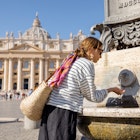
Feb 29, 2024 • 13 min read

Feb 28, 2024 • 12 min read

Feb 27, 2024 • 6 min read

Feb 21, 2024 • 4 min read

Where is Italy located?
What countries border Italy?
Italy Weather
What is the current weather in Italy?
Italy Facts and Culture
What is Italy famous for?
- Cultural Attributes : Italians living in the warmer south enjoy a leisurely life and take their time to accomplish business. In contrast, those... More
- Family : Strong, traditional ties bind the Italian family together. Family association is of great importance. A faster pace of life is... More
- Personal Apperance : Italy is a major center of the European fashion industry and Italians believe it is important to dress well at... More
- Recreation : Italy is a nation of soccer enthusiasts. The game is called calcio in Italy. Sunday afternoon league games are televised... More
- Diet : An Italian breakfast is very light, consisting of a cup of coffee, and a roll. Lunch, the main meal, is... More
- Food and Recipes : When eating with guests, Italians do not usually hurry; a meal may last one to four hours. Compliments on the... More
- Visiting : Italians enjoy visiting friends, family, and neighbors, especially on holidays and Sundays. Guests invited to dinner often take a bottle... More
- Dating : Dating is much the same as in other Western countries and is done either in groups or as couples. Marriage... More
Italy Facts
What is the capital of Italy?
Italy Demographics
What is the population of Italy?
Italy Government
What type of government does Italy have?
Italy Video
CountryReports YouTube Channel:
Italy geography.
What environmental issues does Italy have?
Italy Economy
How big is the Italy economy?
Italy News and Current Events
What current events are happening in Italy? Source: Google News
Italy Travel Information
What makes Italy a unique country to travel to?
Country Description
Criminal penalties, medical facilities and health information, safety and security, traffic safety and road conditions.

- Internet Citation
- Terms of Use
- Renew Membership
- Manage Membership
- Teacher Resources
- Get Your Widget
- Product Pricing
- Other Products
- United States Edition
- Sample Country

FACTS ABOUT ITALY – 14 Things You Probably Didn’t Know!
Italy is one of the most popular countries in the world. How much do you actually KNOW about it though? Whenever I visit a new country, I like to study up on the facts, and I usually find some very interesting things that I didn’t already know. I first did this in Perth , Australia, and again in Jakarta , Indonesia. Both times, I found some really weird stuff that I wouldn’t have known otherwise!
There are plenty of amazing Facts about Italy, and most of them would probably surprise you. I know they surprised me!
So today I have put together 14 of my favorite!
Table of Contents
Rome is actually 2000 years old, italy is one of europe’s youngest countries, much of southern italy once belonged to ancient greece, italy is the 5th most visited country in the world, tourists throw over €3000 in the trevi fountain every day, the city of venice is sinking, europe’s only 3 active volcanoes are in italy, the vatican is the smallest country in the world, italy has over 1500 lakes, italy has the most unesco heritage listed sites in the world, italy is home to the oldest university in the world, pizza was invented in naples, italy has a free wine fountain, italy has the 3rd oldest population in the world, facts about italy – history.
A country as amazing as Italy is bound to have some pretty cool history. There are actually a LOT of very interesting facts about Italy that date back thousands of years. So much, in fact, that it would be REALLY hard to list them all. So here I have listed just a few of my favorites.
It’s hard to believe, but true. Rome is actually that old!
We have all heard about the Roman Empire, and understand that it ruled Europe for a very long time. Personally, I had never actually put together the numbers to understand how long ago that really was.

So when WAS it?
The city of Rome was founded way back in 753BC. The Roman Empire, however, was not formed until 27 BC. As we all know from books and movies, (as well as actual history), that Empire went on to dominate Europe and Northern Africa. It ruled over these continents until 395AD. After the Empire crumbled, Italy broke apart and formed different states for a long period.
How long? Check out the next fact…
The country of Italy was only formed in 1861. As countries go, that makes it very, very young. Especially in Europe.
Up until then the country had been made up of many different independent states. These had been formed after the fall of the Roman Empire. There were 11 states in all, with Venice probably being the most famous. It even had claimed its very own colonies along the coastline that is modern day Croatia!
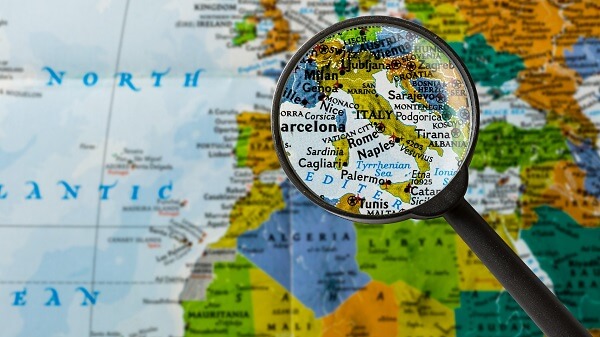
Italy only became a single nation under King Victor Emmanuel II, and even then it took a few years to accomplish!
Believe it or not, there is an upside. Any visitor to Italy will be able to attest to how differing the culture can be as you travel around the country. This can be almost entirely attributed to that very long period in time that the country was split apart. The Italy that we know and love today was the result!
Ancient Greece was a lot bigger than most people give it credit for. One of the most interesting and lesser known facts about Italy is that the Greek Empire actually called Southern Italy home.
But it wasn’t just Southern Italy. In fact, Sicily was also a large part of the Empire. At one stage, the city of Syracuse was the largest city in the Greek Empire. It was even bigger than Athens!
To this day, much of that Greek influence still remains, and there are even pockets of Sicily that still speak Greek!
Facts About Italy – Tourism
The tourism Industry in Italy is responsible for 5 percent of its total economy. That’s a large chunk! With good reason too. Tourists flock to Italy every single year, from all over the world. Why? Because it’s amazing, that’s why!
Italy sees almost 100 million tourists a year, and sits in 5th spot for the most international tourists per annum.
The majority of visitors head to the big name cities and attractions, such as Venice , Rome, Milan and Florence. These places alone can be crowded with tourists at most times of the year. Winter tourism is also very popular in Italy, with visitors crowding into the ski resorts of the Dolomites every season.

So what draws this many tourists to Italy? The answer is simple.
The Culture, Food, Architecture and History. The Fashion and the Art. The list goes on. There is not one city or town in Italy that is not overflowing with all of these, and you don’t HAVE to be in the big cities to experience it.
If you want to visit Italy, and get away from the crowds, consider seeking out some smaller towns or Hidden Gems. There are plenty to find!
That’s a LOT of revenue for the city. It actually amounts to over €1,000,000 every year!
So what happens to all of that money? Well, obviously it is illegal to try and fish the money out of the water yourself! There are actually very large penalties if you are caught. So don’t try.
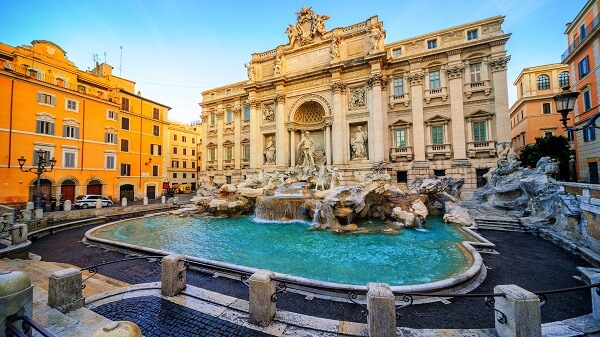
All of the proceeds from the Trevi Fountain are given to charity, or at least, used for charitable purposes. Which is a wonderful concept, and makes me even more willing to throw my hard earned into its waters.
Which begs the question – WHY do people throw so much money in?
Well, according to legend, if you throw a coin into the Trevi Fountain, then you are destined to return to Rome one day. If you throw in TWO coins, then you are destined to live there. Three? You will find love in Rome. There IS a catch though. You must throw the coin over your left shoulder, or else you may be bringing some bad luck upon yourself instead….
It’s a fact. Anybody that has ever been to Venice would understand, and it would probably not be a real surprise.
I come from a place in Australia where they built great mansions on reclaimed sand from the ocean. Those structures are slowly failing, and many of the ones that were built early on are sinking.

So it goes for Venice, where a city built on reclaimed land is getting the same result. They say that by the year 2100 it will be totally submerged. Even today, the city floods almost every winter. We have all seen the photos of Saint Marks Square under a foot of water.
Add to the fact that the sea levels in the Mediterranean are also rising, and the prospects are not good for one of Italy’s most popular tourist destinations!
Facts About Italy – Geography
One of the Facts about Italy that you will read regularly is that one third of it is covered in mountains. This is true, but the Geography facts about Italy do not stop there!
Italy “enjoys” the fact that it is home to the only 3 active volcanoes in Europe. The reason for this is its location in relation to the plates in the Earth’s crust. This is just above the boundary of the Eurasian Plate and the African Plate. The meeting of these plates, and the effect of them overlapping causes volcanic activity.
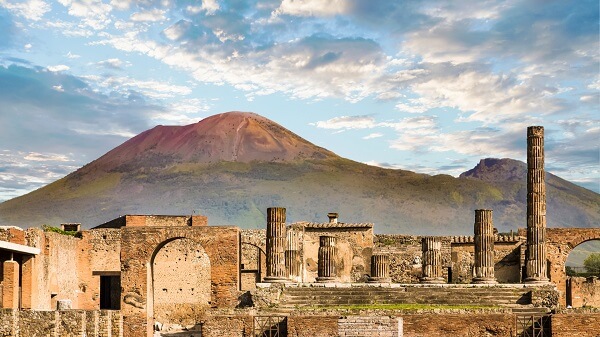
So what are the volcanoes in question?
In no particular order they are –
- Mount Vesuvius near Naples which last erupted in 1944. It was famously responsible for the destruction of Pompeii , and to this day is still the only active volcano found in mainland Europe.
- Mount Etna in Sicily which still sees continuous volcanic activity, as recently as 2021.
- Stromboli, on the Aeolian Islands which saw an explosive eruption as recently as 2019.
In 1929 the Vatican became a City State, totally independent from Italy. It is officially overseen by the Pope, and covers an area of 121 acres, with a population of just over 800.
The Vatican City State, known simply as The Vatican, is the smallest country in the world by both population and area. Within the City State are such famous buildings as the Sistine Chapel, St Peter’s Basilica, and the Vatican Museums which house some of the most famous paintings and sculptures in the world.
Italy is famous for some of its lakes. In particular, such places as Lake Como and Lake Garda are known worldwide and visited by tens of thousands every year. But did you know that there are more lakes than just the famous ones? Over 1500, in fact.

These lakes are located everywhere. Some are hidden, and found only by the adventurous. Others are right out in the open, but passed by as people head for the “well known” lakes.
All of Italy’s lakes are gorgeous, and it is easy to find one and have it nearly to yourself. High in the mountains, or right next door to a major city. You don’t really have to venture far to find one.
Italy has now fully overtaken China to have the most sites listed as UNESCO HERITAGE sites.
Their record now sits at 58, just ahead of China on 56.
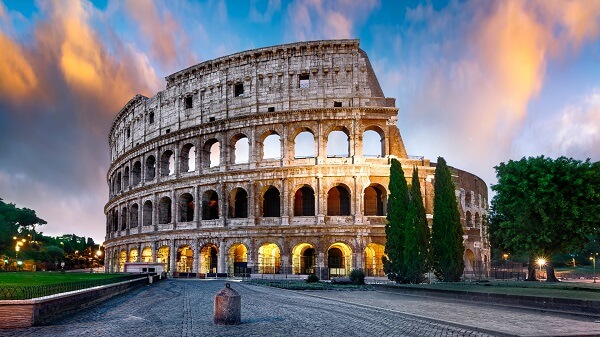
These sites range from the Dolomites, to Venice and Rome. You can find them stretched right across the entire length of Italy, which makes the country an even more wonderful place to visit.
As if it wasn’t already!
Facts About Italy – Culture
If you are making a list of Facts about Italy, you just HAVE to include some cultural facts. It is the culture of Italy that really makes the country what it is. Sure, the country side is beautiful, and the scenery is incredible. It is the culture though, that people come to Italy to REALLY experience!
Where? In Bologna.
Yes, the University of Bologna is the oldest University in the world. It was founded in 1088, and is even older than Oxford University. But not by much.
The term “university” comes from the Latin “universitas magistrorum et scholarium”, which means “community of teachers and scholars”. The term was first used by the University of Bologna, and obviously is still used today.
The modern day pizza was invented in Naples. Throughout history, however, there have been many variations of flatbreads that were probably the early origins of the humble pizza we know today.

Some believe it was around the 1700’s that the first true pizza was born in Naples. It was a baker by the name of Raphaelle Esposito, though, that is given most of the credit for inventing the Pizza Pie. There is a legend that when King Umberto I and Queen Margherita visited Naples, Esposito cooked for them a Pizza and topped it with fresh tomato, basil and Mozzarella Cheese. This famously became known as the Margherita Pizza, and is still known as that to this day.
Italy is famous worldwide for its wines. It is also one of the most well known facts about Italy that the country is the largest producer of wine in the world. Now, to add to the reasons for any wine love to visit Italy, there is also a FREE Wine Fountain!

This amazing concept has been built by the Dora Sarchese Vineyard in Abruzzo, on the East Coast of Central Italy. The wine fountain will run continuously, and be absolutely free to drink from.
A whopping 23 percent of the population of Italy is aged 65 or older. That’s incredible!
The only older populations in the world are in Japan and Monaco. Japan, in first spot has 29 percent of its population 65 years old or older.
In Italy, the average age is 45.9 years old. This will only increase in coming years.
The Reason? There are a couple of theories, but the most obvious are probably also the most true. There is a very low birth rate in Italy, and extreme longevity. So the math just adds up.
There is even one small town on the coastline south of Naples that claims to have over 300 residents over 100 years old! Scientists from all over the world want to know why, as do we!
There are plenty of amazing Facts about Italy. I could have made a list of hundreds of them. I hope you have enjoyed some of my favorites!
If you have any others that you think should be on my list, then feel free to drop them into the comments below.
For more articles about Italy , including places to visit and hidden gems, click the link below.
DON’T FORGET to leave a comment below. I promise to reply!
This article may contain affiliate links. If you click on those links and make a purchase, at no extra cost to you I will get a small commission. This will go a long way toward keeping this website running. As always, thank you for your support! Click HERE for more information.
Related posts

HIDDEN GEMS OF BULGARIA
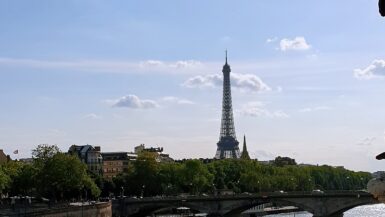
Paris to Beauvais Airport – The Cheapest Way
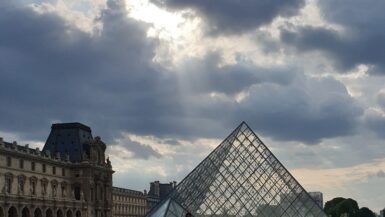
IS PARIS OVERRATED? The Answer Will Surprise You
Leave a reply cancel reply.
Your email address will not be published. Required fields are marked *
- Travel, Tourism & Hospitality ›
- Leisure Travel
Travel and tourism in Italy - statistics & facts
What are the leading inbound travel markets in italy, what are italians’ preferred travel destinations, key insights.
Detailed statistics
Travel and tourism's total contribution to GDP in Italy 2019-2034
Distribution of travel and tourism expenditure in Italy 2019-2023, by type
Travel and tourism's total contribution to employment in Italy 2019-2034
Editor’s Picks Current statistics on this topic
Current statistics on this topic.
Travel, Tourism & Hospitality
International tourist arrivals in Italy 2019-2023, by country
Monthly number of international tourist arrivals in Italy 2018-2024
Related topics
Tourism in italy.
- Tourism in Italian cities
- Museums in Italy
- Arts and cultural industry in Italy
- Travel and tourism in Europe
- Travel and tourism in Greece
- Travel and tourism in France
- Travel and tourism in Spain
Recommended statistics
- Basic Statistic Travel and tourism's total contribution to GDP in Italy 2019-2034
- Basic Statistic GDP share generated by travel and tourism in Italy 2019-2023
- Premium Statistic Monthly tourism balance in Italy 2019-2024
- Basic Statistic Distribution of travel and tourism expenditure in Italy 2019-2023, by type
- Basic Statistic Distribution of travel and tourism spending in Italy 2019-2023, by tourist type
- Basic Statistic Travel and tourism's total contribution to employment in Italy 2019-2034
Travel and tourism's total contribution to GDP in Italy 2019-2034
Total contribution of travel and tourism to GDP in Italy in 2019 and 2023, with a forecast for 2024 and 2034 (in billion euros)
GDP share generated by travel and tourism in Italy 2019-2023
Share of travel and tourism's total contribution to GDP in Italy in 2019 and 2023, with a forecast for 2024 and 2034
Monthly tourism balance in Italy 2019-2024
Monthly tourism balance in Italy from January 2019 to January 2024 (in million euros)
Distribution of travel and tourism spending in Italy in 2019 and 2023, by type
Distribution of travel and tourism spending in Italy 2019-2023, by tourist type
Distribution of travel and tourism spending in Italy in 2019 and 2023, by type of tourist
Travel and tourism's total contribution to employment in Italy 2019-2034
Total contribution of travel and tourism to employment in Italy in 2019 and 2023, with a forecast for 2024 and 2034 (in million jobs)
Inbound tourism
- Premium Statistic Total number of international tourist arrivals in Italy 2015-2023
- Premium Statistic International tourist arrivals in Italy 2006-2023
- Premium Statistic International tourist arrivals in Italy 2019-2023, by country
- Premium Statistic Inbound business travelers in Italy 2015-2022
- Premium Statistic Number of inbound tourist overnight stays in Italy 2014-2023, by travel reason
- Premium Statistic Average length of stay of international tourists in Italy 2009-2022
- Premium Statistic Inbound tourist expenditure in Italy 2007-2023
- Premium Statistic Inbound tourist expenditure in Italy 2019-2023, by country
Total number of international tourist arrivals in Italy 2015-2023
Total number of international tourist arrivals in Italy from 2015 to 2023 (in million travelers)
International tourist arrivals in Italy 2006-2023
Number of international tourist arrivals in Italy from 2006 to 2023 (in millions)
Number of international tourist arrivals in Italy from 2019 to 2023, by country of origin (in millions)
Inbound business travelers in Italy 2015-2022
Number of international business tourists in Italy from 2015 to 2022 (in millions)
Number of inbound tourist overnight stays in Italy 2014-2023, by travel reason
Number of international tourist overnight stays in Italy from 2014 to 2023, by travel reason (in millions)
Average length of stay of international tourists in Italy 2009-2022
Average length of stay of international tourists in travel accommodation establishments in Italy from 2009 to 2022 (in number of nights)
Inbound tourist expenditure in Italy 2007-2023
Total international tourist expenditure in Italy from 2007 to 2023 (in billion euros)
Inbound tourist expenditure in Italy 2019-2023, by country
International tourist expenditure in Italy from 2019 to 2023, by country of origin (in million euros)
Outbound tourism
- Premium Statistic Number of outbound travelers from Italy 2015-2023, by type
- Premium Statistic Number of outbound trips from Italy 2019-2022, by destination
- Basic Statistic Number of outbound tourist overnight stays from Italy 2015-2023
- Premium Statistic Overnight stays for outbound trips from Italy 2019-2022, by destination
- Premium Statistic Expenditure of Italian outbound travelers 2007-2023
- Premium Statistic Expenditure of Italian outbound travelers 2019-2023, by destination
- Premium Statistic Share of outbound holiday trips taken by Italians 2023, by purpose
- Premium Statistic Share of outbound holiday trips taken by Italians 2022, by destination type
- Premium Statistic Travel intentions of Italians in the next six months 2024, by destination
- Premium Statistic Italian travelers' preferred European countries for trips in the next six months 2024
Number of outbound travelers from Italy 2015-2023, by type
Number of outbound travelers from Italy from 2015 to 2023, by type (in millions)
Number of outbound trips from Italy 2019-2022, by destination
Number of outbound trips from Italy from 2019 to 2022, by country of destination (in 1,000s)
Number of outbound tourist overnight stays from Italy 2015-2023
Number of outbound tourist overnight stays from Italy from 2015 to 2023 (in millions)
Overnight stays for outbound trips from Italy 2019-2022, by destination
Number of overnight stays for outbound trips from Italy from 2019 to 2022, by country of destination (in 1,000s)
Expenditure of Italian outbound travelers 2007-2023
Total expenditure of Italian outbound travelers from 2007 to 2023 (in billion euros)
Expenditure of Italian outbound travelers 2019-2023, by destination
Expenditure of Italian outbound travelers from 2019 to 2023, by country of destination (in million euros)
Share of outbound holiday trips taken by Italians 2023, by purpose
Distribution of holiday trips abroad taken by Italian residents in 2023, by purpose of trip
Share of outbound holiday trips taken by Italians 2022, by destination type
Share of holiday trips abroad taken by Italian residents in 2022, by type of destination
Travel intentions of Italians in the next six months 2024, by destination
Share of individuals intending to travel in the next six months in Italy as of April 2024, by destination
Italian travelers' preferred European countries for trips in the next six months 2024
Preferred European countries for a trip in the next six months among travelers in Italy as of April 2024
Domestic tourism
- Premium Statistic Number of domestic trips in Italy 2014-2022
- Premium Statistic Domestic trips in Italy 2019-2022, by accommodation type
- Premium Statistic Overnight stays for domestic trips in Italy 2019-2022, by region of destination
- Premium Statistic Domestic business trips in Italy 2015-2022
- Premium Statistic Overnight stays during domestic business trips in Italy 2022, by destination
- Premium Statistic Number of same-day domestic trips in Italy 2019-2022, by purpose
- Basic Statistic Domestic tourism spending in Italy 2019-2034
Number of domestic trips in Italy 2014-2022
Number of domestic trips in Italy from 2014 to 2022 (in 1,000s)
Domestic trips in Italy 2019-2022, by accommodation type
Number of domestic trips in Italy from 2019 to 2022, by type of accommodation (in 1,000s)
Overnight stays for domestic trips in Italy 2019-2022, by region of destination
Number of overnight stays for domestic trips in Italy from 2019 to 2022, by region of destination (in 1,000s)
Domestic business trips in Italy 2015-2022
Number of trips by domestic business tourists in Italy from 2015 to 2022 (in 1,000s)
Overnight stays during domestic business trips in Italy 2022, by destination
Number of nights spent by domestic business tourists in Italy in 2022, by region of destination (in 1,000s)
Number of same-day domestic trips in Italy 2019-2022, by purpose
Number of same-day domestic trips in Italy from 2019 to 2022, by purpose (in 1,000s)
Domestic tourism spending in Italy 2019-2034
Domestic tourism expenditure in Italy in 2019 and 2023, with a forecast for 2024 and 2034 (in billion euros)
Accommodation
- Premium Statistic Number of hotel and non-hotel accommodation in Italy 2019-2022
- Premium Statistic Number of hotels in Italy 2012-2022, by rating
- Premium Statistic Number of hotels in Italy 2022, by region
- Premium Statistic Revenue of the hotels industry in Italy 2019-2028
- Premium Statistic Leading international hotel chain brands in Italy 2023, by number of hotels
- Premium Statistic Leading domestic hotel chain brands in Italy 2023, by number of hotels
- Premium Statistic Number of bed and breakfasts in Italy 2010-2022
- Premium Statistic Number of agritourism establishments in Italy 2012-2022
- Premium Statistic Distribution of trips made by Italians 2023, by accommodation
Number of hotel and non-hotel accommodation in Italy 2019-2022
Number of hotel and non-hotel accommodation establishments in Italy from 2019 to 2022
Number of hotels in Italy 2012-2022, by rating
Number of hotel establishments in Italy from 2012 to 2022, by rating
Number of hotels in Italy 2022, by region
Number of hotel establishments in Italy in 2022, by region
Revenue of the hotels industry in Italy 2019-2028
Revenue of the hotels market in Italy from 2019 to 2028 (in billion U.S. dollars)
Leading international hotel chain brands in Italy 2023, by number of hotels
Leading international hotel chain brands in Italy in 2023, by number of hotels
Leading domestic hotel chain brands in Italy 2023, by number of hotels
Leading domestic hotel chain brands in Italy in 2023, by number of hotels
Number of bed and breakfasts in Italy 2010-2022
Number of bed and breakfasts in Italy from 2010 to 2022
Number of agritourism establishments in Italy 2012-2022
Number of agritourism establishments in Italy from 2012 to 2022
Distribution of trips made by Italians 2023, by accommodation
Distribution of trips taken by Italians in 2023, by type of accommodation
Further reports Get the best reports to understand your industry
Get the best reports to understand your industry.
Mon - Fri, 9am - 6pm (EST)
Mon - Fri, 9am - 5pm (SGT)
Mon - Fri, 10:00am - 6:00pm (JST)
Mon - Fri, 9:30am - 5pm (GMT)
Save up to €400pp* on 2025 holidays

12 Interesting facts about Italy
Georgina Willcox | 18 February 2022
Few countries in the world have such a variable, diverse and colourful history as Italy. Every time we visit, we learn new facts about Italy’s wonderful past. Check out some of the interesting facts below, as it may inspire you to experience a holiday in Italy .
1. Italy has the most UNESCO World Heritage Sites.
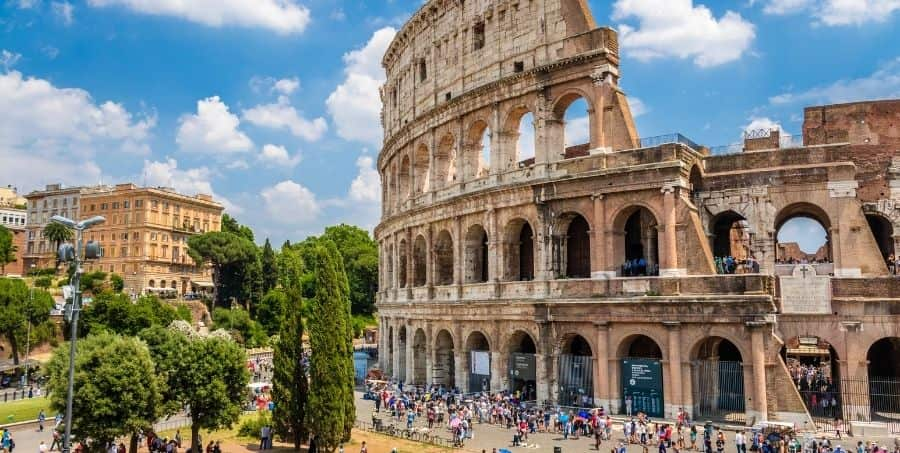
Italy has over 50 UNESCO World Heritage sites, more than any other country in the world and these include the historic centre of Florence, the canals of Venice, Trulli houses of Alberobello, the Colosseum in Rome and the Amalfi Coast.
2. Limone sul Garda has magic lemons

Famous for its wonderful lemon orchards and breathtaking views, Limone also holds an incredible genetic secret. In 1979, it was noted that of the one thousand inhabitants in the town, unusually over a dozen of them were over 100 years old. Upon testing, it was found that Limone’s residents contain a rare protein in their blood that eliminates heart disease and aids longevity; many believe this is due to the high concentration of lemons in their diet.
3. Over €3,000 is thrown into the Trevi Fountain each day.
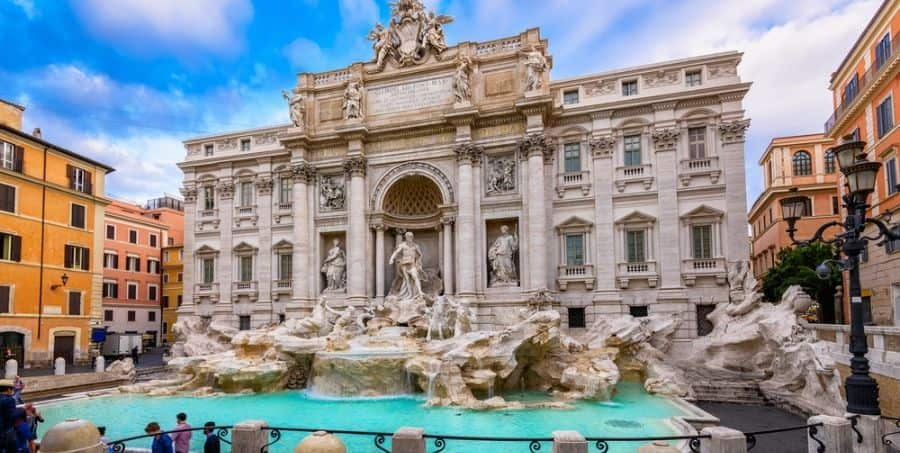
The spectacular Fontana di Trevi was completed by Nicola Salvi in 1762. It is located in the heart of Rome's historic centre in Trevi Square near the Spanish Steps and Piazza Navona. It's considered good luck to throw a coin over your left shoulder, as this will ensure a return visit to Rome !
4. Beware of sea monsters in Sicily!
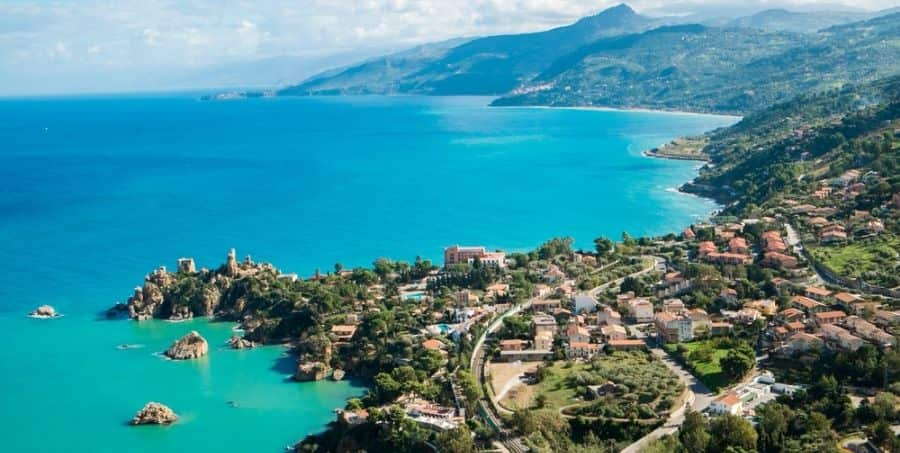
Those passing through the Messina strait between Sicily and Calabria are in danger of being attacked by two sea monsters Scylla and Charibdys, according to Greek mythology. They appear as beautiful nymphs, but quickly change into ugly creatures with six heads, multiple mouths and glowing eyes. Watch out if you’re taking a boat trip!
5. Pompeii was rediscovered in the 18th century

In 79 AD when Mount Vesuvius erupted for the first time in 1,800 years, it took the people of Pompeii completely by surprise. The city and its people were buried under 5 metres of ash as they went about their daily business, creating a natural time capsule for future generations to peer into Ancient Roman life. The first excavation began in 1748 which helped spark the 18th century neo-classism era that looked to Ancient Rome for influence. Approximately 2.5 million tourists visit Pompeii each year and it’s one of the highlights of our Sorrento holidays .
6. Torquato Tasso was born in Sorrento

Sorrento was the birthplace of Torquato Tasso, the most read poet in Europe until the 20th century. Tasso wrote the famous poem La Gerusalemme liberata which depicts a mythical battle between Christians and Muslims for Jerusalem at the end of the first crusades. Tasso died just a few days before he was due to be crowned King of the Poets by the Pope.
7. Pinocchio is Italian
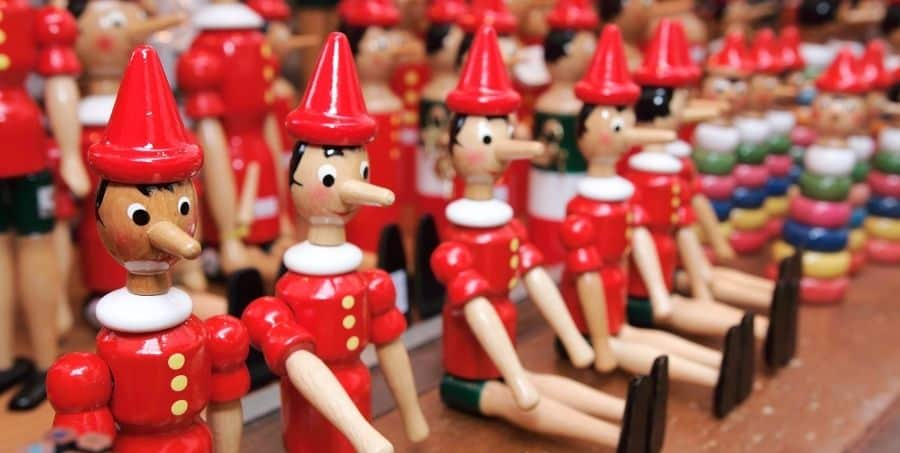
The story of Pinocchio, which we usually associate with the Disney story, originated in Florence with a story written by Carlo Collodi in 1826. The book contains Tuscan dialect, formed from Latin, which became modern day Italian during the Renaissance period when Tuscany was a trading hub for the rest of the country.
8. There were battles on Lake Garda

The peace and tranquillity are some of the reasons that we love Lake Garda so much, but it wasn’t always so calm. There have been many famous battles fought around Lake Garda including the Battle of Lake Benacus where the Romans defeated the Alamanni in 268, the Battle of Rivoli where Napolean’s forces battled the Austrians in 1797 and the Battle of Solferino during the Italian Risorgimento in 1859; this bloody battle caused the Geneva Convention to form the Red Cross.
9. Italy was under a fascist dictatorship for 20 years
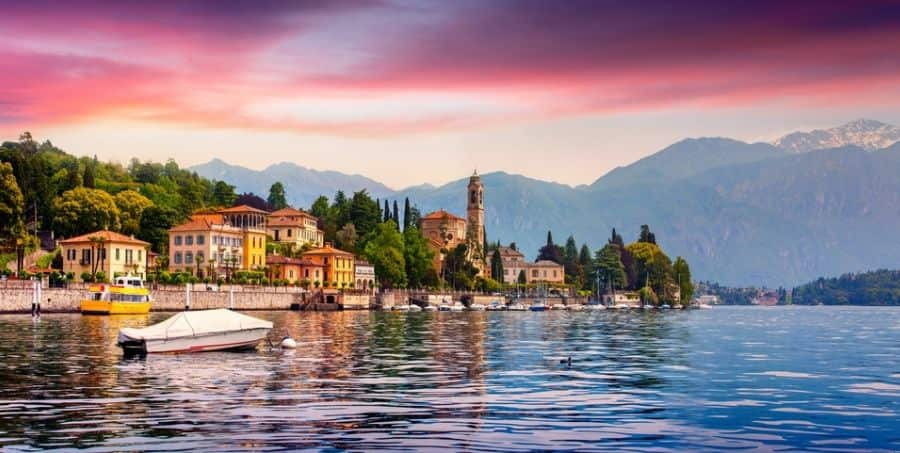
Benito Mussolini or “Il Duce” was the dictator of Italy between 1922 until his death in 1945. Mussolini and his mistress were captured by Allied forces in Dongo and later shot in nearby Mezzegra while trying to flee from Como to the Swiss Alps.
10. Sicily has its own language
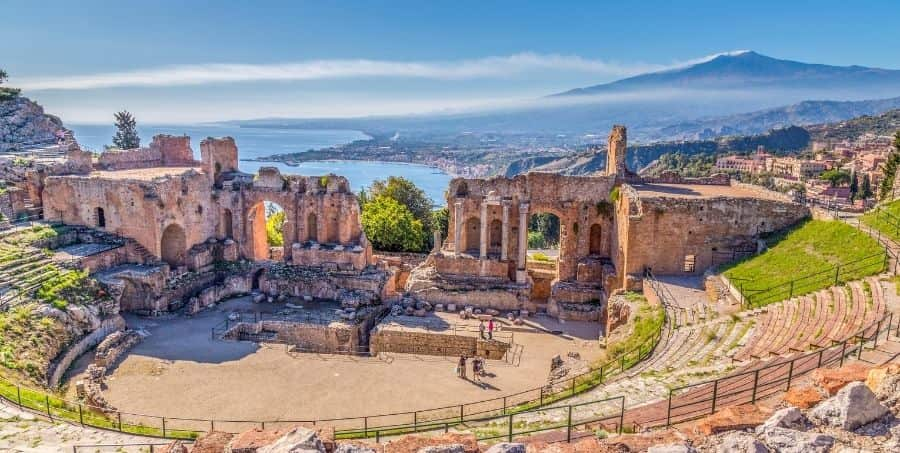
If you’ve been to Italy quite a few times, you may notice the language difference when you visit Sicily . The majority of Sicily’s inhabitants (70%) speak Sicilian, not Italian. Reflecting the diverse history of the island, Sicilian has absorbed vocabulary from Greek, Latin, Spanish, Italian and French among others to produce a language clearly distinct from Italian.
11. Lake Como attracts Hollywood celebrities
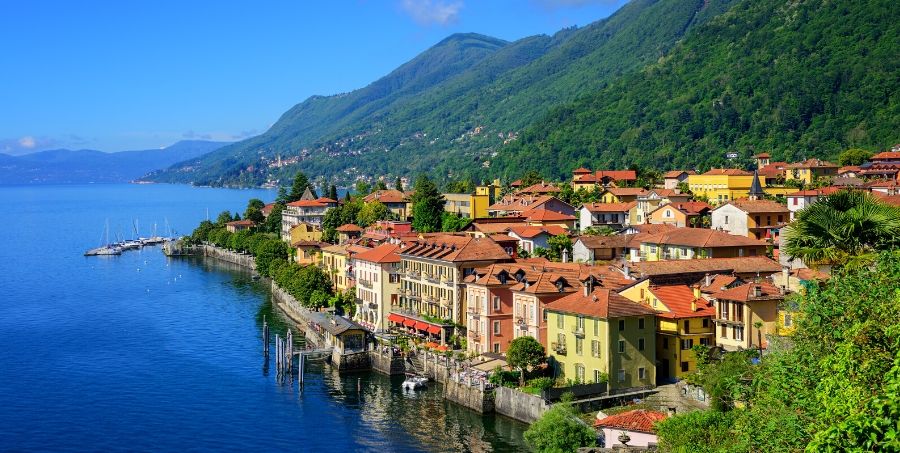
During the Roman Empire Lake Como was the main place for the government elite to holiday. An imperial magistrate Pliny the Younger used his extensive wealth to build two villas, ‘Tragedy’ and ‘Comedy’ on the shores of Lake Como. Today, Lake Como is still a favourite hang-out for Hollywood’s famous faces, such as George Clooney.
12. Some of Shakepheare’s plays are set in Italy
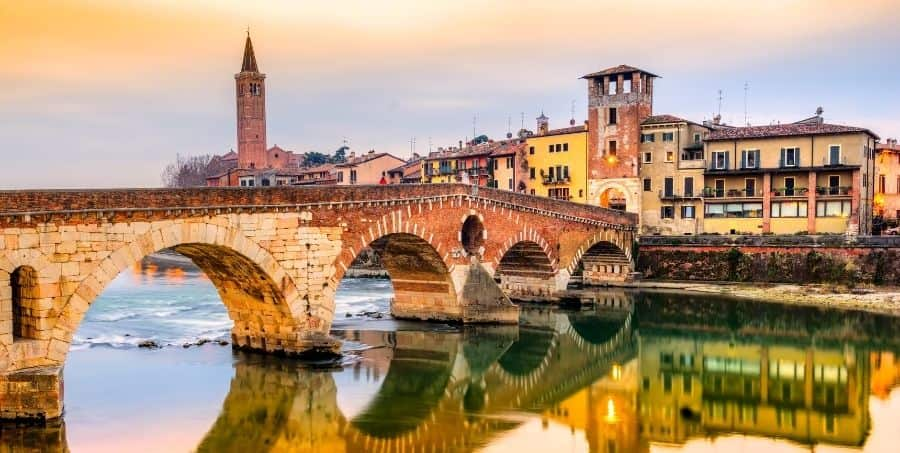
13 of Shakespeare's plays are set in Italy, such as Othello, Julius Caesar, Anthony and Cleopatra, The Merchant of Venice and The Two Gentlemen of Verona; and yet there’s no evidence that the playwright visited the country. Verona may be most famous as the location of Shakespeare's most famous love story, Romeo & Juliet, but it's also just a stunning UNESCO city that you can explore on our Lake Garda holidays .
Discover the country’s fascinating history for yourself on one of our guided Italy tours . Soak up the beauty of Italy with us and savour more authentic Italian culture. With over 25 years of experience bringing holidaymakers to this incredible country, we’ve handcrafted itineraries to give you a taste of authentic Italy and unveil hidden gems.
Guest Travel Writers
Best Places To Travel By Month
Company News
Inspiration by Country
Country Travel Guides
Special Interests
Seasonal Getaways
Travel Podcasts
You might also like.

A Love Affair With Italy Starts In Lake Garda
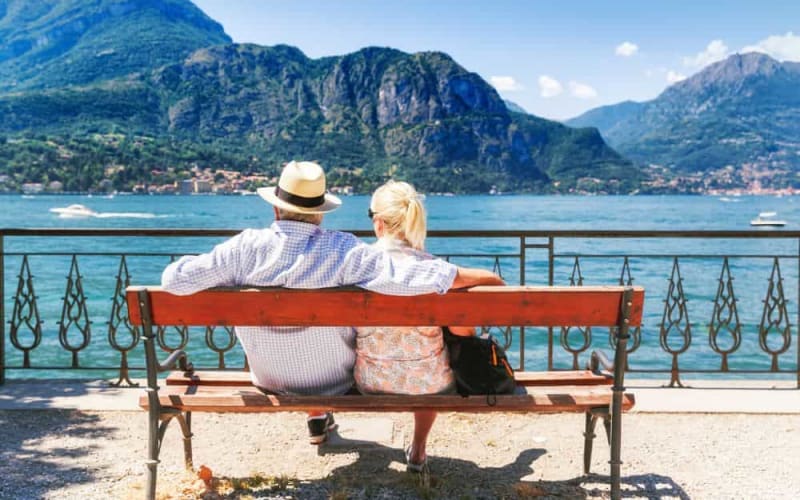
Live Like A Film Star On The Shores Of Lake Como
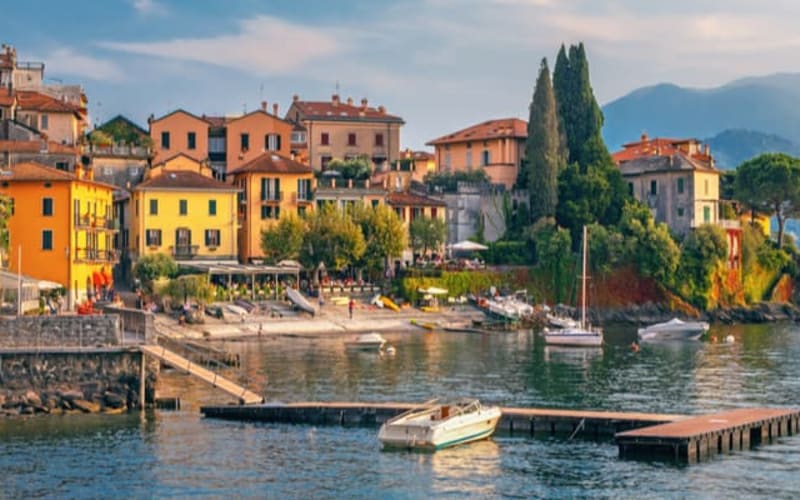
5 Best Lakes in Italy To Visit
Be the first to know about our holiday updates, travel tips and special offers..


IMAGES
VIDEO
COMMENTS
Fun facts about Italy and history. 1. Italy is one of Western Europe's youngest countries. 2. Rome is over 2,000 years old. 3. The country was under a dictatorship for 20 years. 4. Italy's last king ruled for just 36 days.
If you are planning a road trip, make sure to book your car well in advance. 4. Card payments are now widely accepted, but carrying some cash is a good idea. For a long time, Italy has been a cash-first country. But in 2022, a new law introduced a fine for businesses not accepting card payments.
Have Italy on the brain? In this huge guide, you'll learn 80 facts about Italy, including travel, food, expat, culture, national symbols, politics and more. Plus lots of photos and videos.
Here some fun facts of Italy and its influential culture. Many consider Italy the art capital of the world and it is believed that Italy has more masterpieces per square meter than any other place in the world. Italian museums and galleries are amazing and are a must-visit if you travel to Italy. Europe's oldest university is in Italy.
Italy has so many delights for visitors, it's hard to know where to start. Lucky for you, we've made this list of the best experiences all over the country. Read article. Things to Know. With so many attractions, it's hard to know where to begin with a trip to Italy. Here's some local insight into the essential things to know before you go.
62 Interesting Italy Facts. The name Italy comes from the word italia, meaning "calf land," perhaps because the bull was a symbol of the Southern Italian tribes. [4] Italy is approximately 116,400 square miles (including Sicily and Sardinia), which is slightly larger than Arizona. [2]
20 Fascinating Facts About Italy. 1. Italy is Home to the Most UNESCO World Heritage Sites in the World, with a Whopping 58! Italy's wealth of cultural and natural treasures is unrivaled, making it a veritable open-air museum.
28. Italy Facts Geography. Italy borders Switzerland, Austria, France, San Marino, Slovenia and Vatican City. 29. Italy's Largest lake. Lake Como may be the most famous lake in Italy, but the largest lake in Italy is Lake Garda. 30. Italy's National Day. Italy celebrates its national holiday in June and it is called Festa della Repubblica
All the information here is from The Rough Guide to Italy, our in-depth Italy travel guide - check it out for your all your Italy travel needs. Travel Facts about Italy; Language: Italian, with a whopping 34 dialects. Population: just under 60 million, with around three million residing in Rome, the capital.
Fast Facts About Italy. Currency: The official currency is the euro and 1 euro is equal to 1.12 USD. Power: Power voltage is 220V at 50 Hz. Entry: To enter, you will need a U.S. passport valid for at least 6 months after your departure date. Getting Around: The best way to get around is by public transport or renting a car but beware, Italians are hairy drivers!
Italy's coffee etiquette. Stopping at a cafe for a quick coffee is one of the great rituals of Italian life. To do it like a local, first pay at the cash register, then, armed with your receipt, give the barista your order. When it arrives, drink standing at the bar - sitting at a table is fine but takes longer and costs more.
Travelling around Italy remains one of those rare experiences in life - like a perfect spring day or the power of first love - that can never be overrated. In few places do history, art, fashion, food and la dolce vita ("the good life") intermingle so effortlessly.
From compelling historical landmarks to fascinating local traditions, these 30 facts about Italy will amaze even the most passionate enthusiasts of this nation and its dedication to la dolce vita (the sweet life). Experience the sweet taste of Italy yourself on one of our award-winning Italian escorted tours. 30 Interesting Facts about Italy
Italy Travel Guide. Photograph by Dave Yoder, Nat Geo Image Collection. Featured Stories. Italy's Lesser Known UNESCO World Heritage Sites. Travel; Italy's Lesser Known UNESCO World Heritage ...
Train Travel is Popular. Train travel is one of the best ways to travel around Italy and one of my top travel tips for Italy is to utilize the system. The train networks are extensive and fairly affordable. Fast trains cost between €30 - €70, while regional slow trains can cost €6 - €30 depending on the distance traveled.
This Italy travel guide is full of tips and advice to help you do just that. Italy is an EU member state situated in southern Europe. It's the country that looks like a boot jutting out of the bottom of Europe! Italy encompasses the entirety of this boot-shaped peninsula, along with several islands, the largest of which are Sardinia and Sicily.
Fun facts about Italy's political structure and economy. Italy was a kingdom before it became a republic in 1946. It currently has a president, though this is only a ceremonial position. The Prime Minister holds the reins of power and governs the country from the capital, Rome. While it also shares a bicameral (two-tier) system with countries ...
The biggest city of the country is Rome with 4.2 million people. The highest mountain peak in Italy is Monte Bianco, better known as Mont Blanc, which is 4,807 m or 15,776 ft. high. The longest river in Italy is the Po River in Northern Italy with a length of 652 km/ 405 miles. Lake Garda is the largest lake in Italy.
3. Tour Rome, the epicenter of empire. Working out the best way to spend your time in the Italian capital is a cultural conundrum. Rome is the former caput mundi (capital of the world), the epicenter of the Roman Empire, the spiritual HQ of the Christian world and the repository for over two millennia of European art and architecture.
Italy's economy returned to modest growth in late 2014 for the first time since 2011. In 2015-16, Italy's economy grew at about 1% each year, and in 2017 growth accelerated to 1.5% of GDP. In 2017, overall unemployment was 11.4%, but youth unemployment remained high at 37.1%. GDP growth is projected to slow slightly in 2018.
Facts About Italy - Tourism. Italy is the 5th most visited country in the world. Tourists throw over €3000 in the Trevi Fountain every day. The city of Venice is Sinking. Facts About Italy - Geography. Europe's only 3 active volcanoes are in Italy. The Vatican is the smallest country in the world.
Overall, travel and tourism contributed to the Italian GDP by over 190 billion euros in 2022, remaining three percent lower than in 2019, the year prior to the coronavirus (COVID-19) pandemic ...
Check out some of the interesting facts below, as it may inspire you to experience a holiday in Italy . 1. Italy has the most UNESCO World Heritage Sites. Italy has over 50 UNESCO World Heritage sites, more than any other country in the world and these include the historic centre of Florence, the canals of Venice, Trulli houses of Alberobello ...